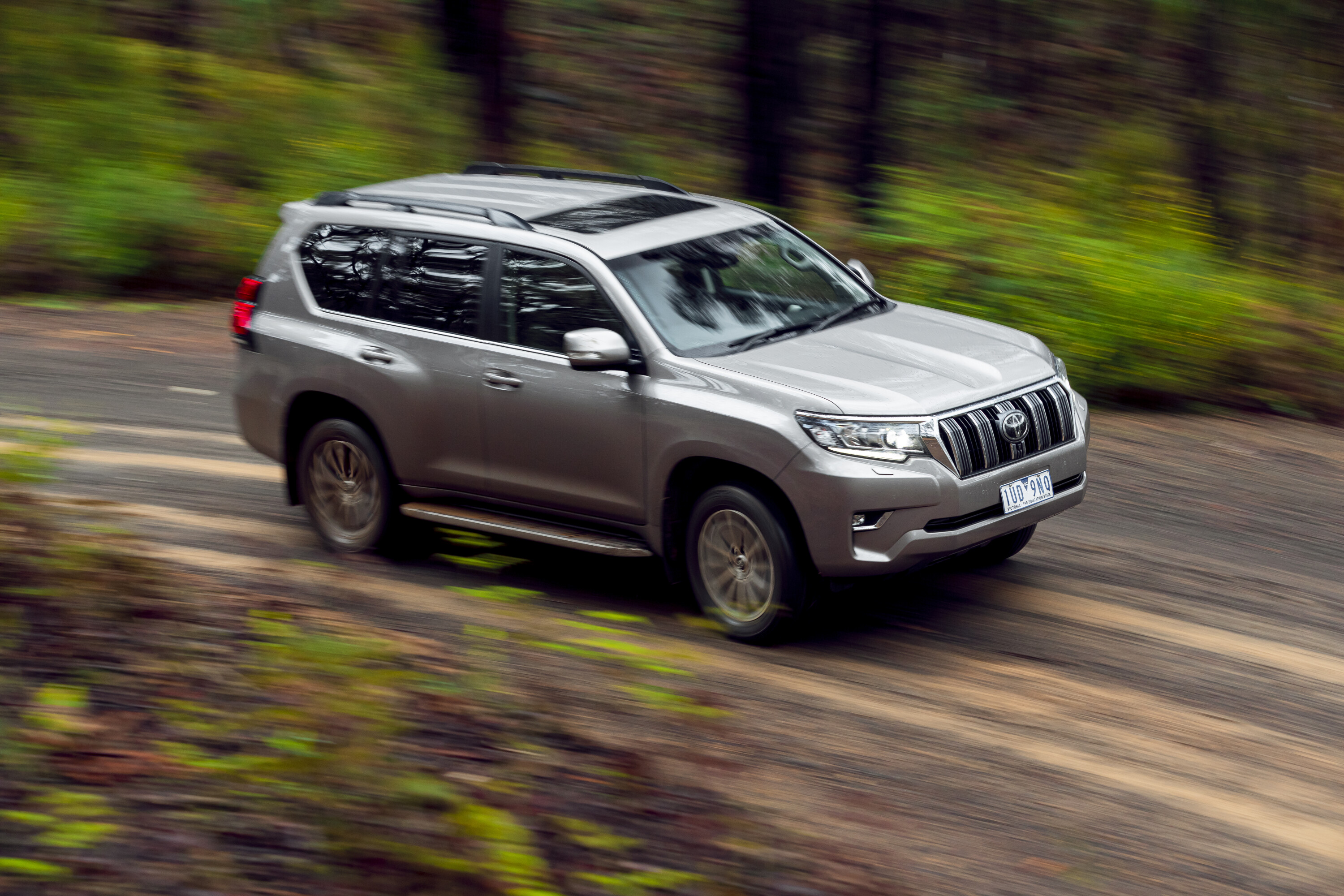- Tools that suit your vehicle
- Tyre inflation/deflation tool
- Baby wipes to keep clean and for cleaning dishes
- A water purifier to turn fresh water into drinking water.
- A portable battery pack to keep accessories charged up and to kick-start a lithium battery BMS when required.
There’s a good reason you’ll find plenty of Rambler 4x4s at 4X4 Australia: They are comprehensive turnkey vehicles modified and equipped for off-road escapades anywhere around Australia.
In 2023, Rambler Vehicles merged with ASG 4×4 and Spinifex Manufacturing to become a one-stop shop for new turn-key custom touring four-wheel drives, known as the Recre8 Automotive Group.
The builds are typically high-end, go-anywhere tourers that can sustain off-grid living. The builds start with new vehicles that undergo bumper-to-bumper transformations to deliver a touring rig created to suit the customer’s plans and expectations. The customer then takes delivery of a new 4×4 that is completely ready to hit the road and go travelling around the country.
They even give a nationwide three-year/100,000km warranty on all accessories and modifications, regardless of the manufacturer’s warranty!
Here’s all our Rambler content to feast your eyes on! ?
JUMP AHEAD
- Shop truck: 200 Series LandCruiser
- Next level: Another 200 Series LandCruiser
- Work of art: 79 Series LandCruiser
- Top-tier: A trio of touring trucks
- Boss level: Chevrolet Silverado Trail Boss
- Monster: LandCruiser 79 by TJM
- Wild thing: 2021 D-MAX
- First look: 300 Series LandCruiser
- Merger: Recre8 Automotive Group
Shop truck: 200 Series LandCruiser
Next level: Another 200 Series LandCruiser
Work of art: 79 Series LandCruiser
Top-tier: A trio of touring trucks
Boss level: Chevrolet Silverado Trail Boss
Monster: LandCruiser 79 by TJM
Wild thing: 2021 D-MAX
First look: 300 Series LandCruiser
Merger: Recre8 Automotive Group
We’ve driven a Ford F-150 Lightning off-road on the sand of Bribie Island, and our review of the all-electric F-truck headlines another bumper issue of 4X4 Australia magazine.
Remanufactured to RHD by the team at Advanced Manufacturing Queensland (AMQ), the Lightning Extended Range had about 90 per cent charge (400km of range) when it was picked up from AUSEV’s conversion facility in Brisbane. Giving us a bit of juice to get to Bribie Island, have a play, and get back again! We also share our thoughts on how it performs compared to its combustion-powered stablemates.
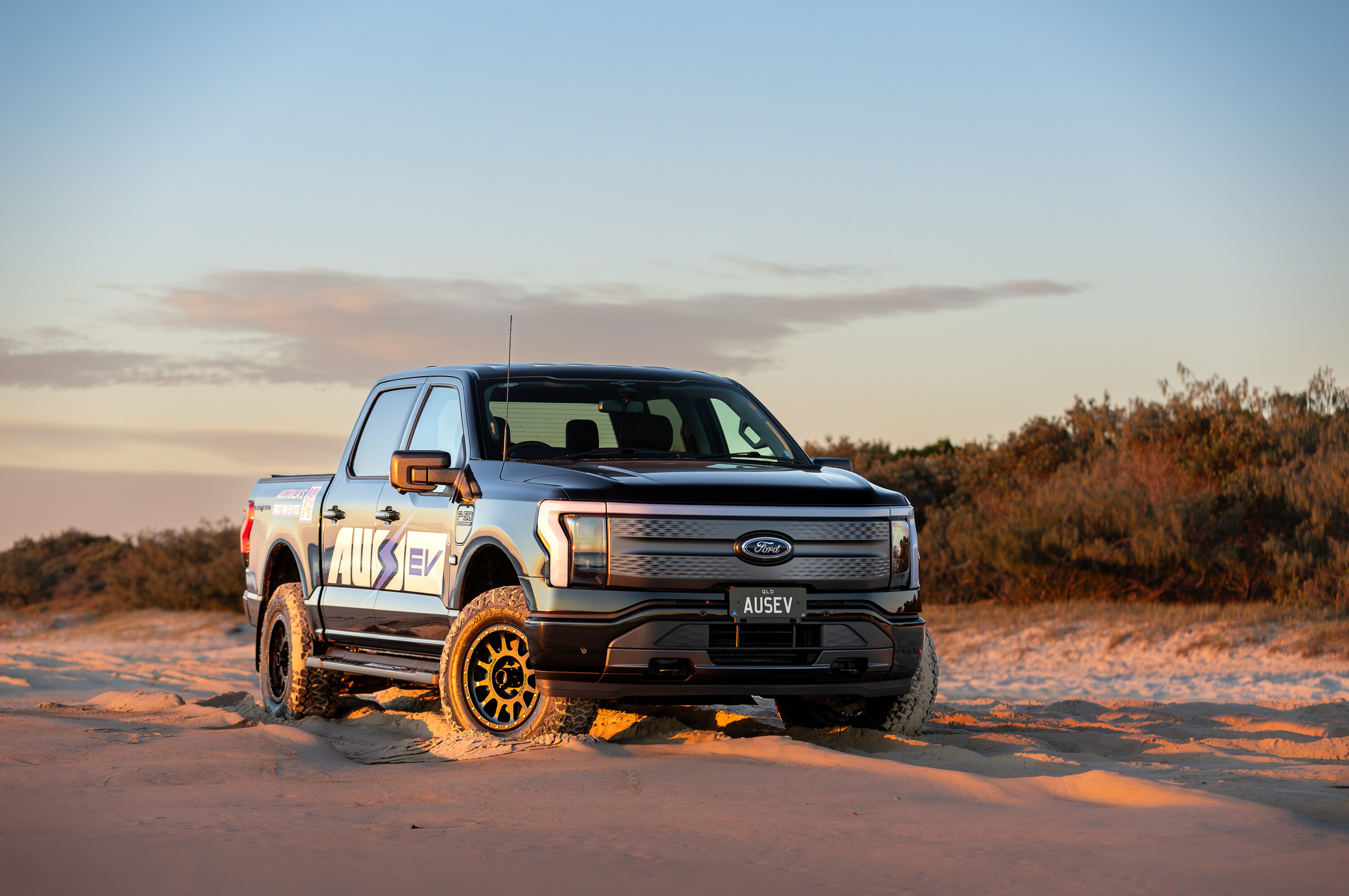
We were also flung the keys to an INEOS Grenadier Fieldmaster edition, which sits atop the three-model range. Powered by BMW’s 183kW/550Nm six-cylinder diesel engine, this variant was equipped with front and rear locking differentials; a raised air-intake snorkel; dual-battery system; 18-inch alloys wearing BF Goodrich KO2 A/T tyres; and a factory option winch. It’s a superb out-of-the-box 4×4 vehicle, and we can’t wait until the Quartermaster double-cab ute arrives later this year.
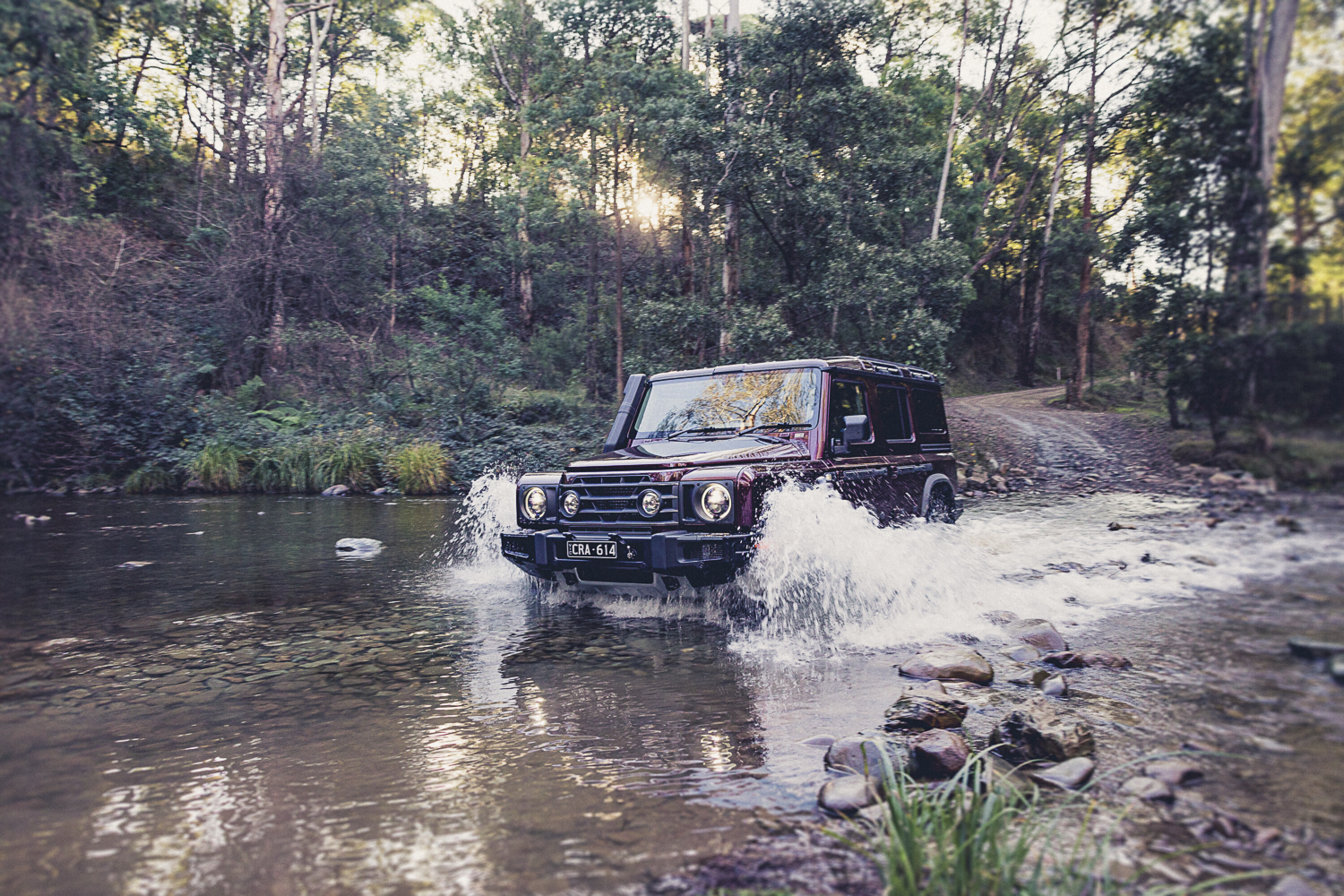
We also dirtied the wheels of a tradie-spec Triton GLX+, a variant that sits one rung from the bottom of the Triton’s Aussie line-up. The new Triton has already proven itself a versatile off-roader, and the GLX+ is a step up from the base-spec GLX by replacing the standard steel wheels with alloys, adding side steps, rear privacy glass, front fog lights and some silver stitching. It also adds a differential lock to the rear axle. Matt reckons this model hits a sweet spot in the local line-up.
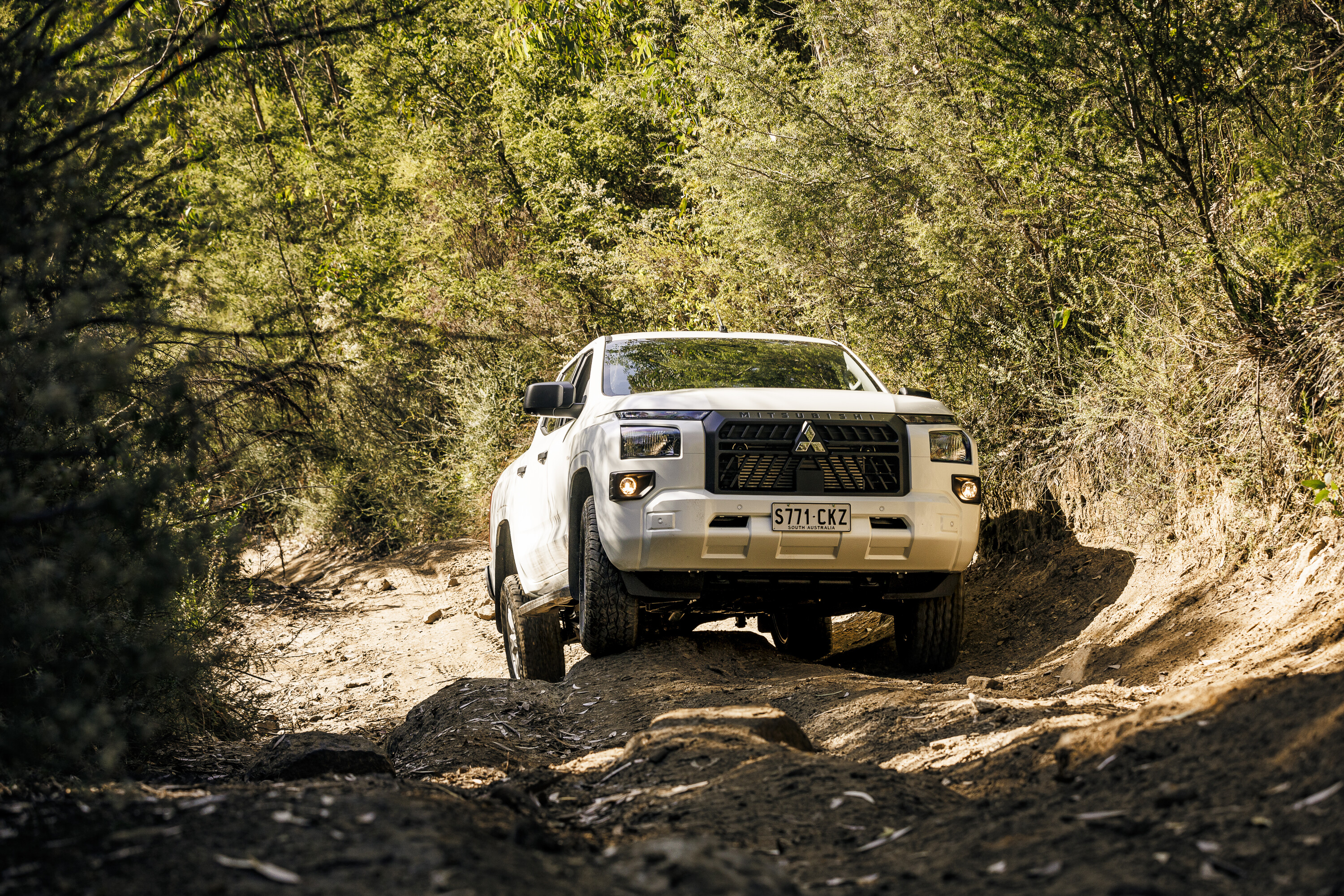
Dex runs his eye over a BT-50 build that proves you don’t need to spend silly money to transform a 4×4 into a capable tourer. Among a host of kit, this BT features PSR struts and Blackhawk upper control arms; Dobinsons 500kg-static rated leaf springs; and a set of 17 x 9-inch Fuel Covert rims inside Maxxis RAZR AT811 295/70R17 rubber. Add to that a MoTop rooftop tent, a Bushwakka awning, and KickAss power, and you have a seriously capable rig.
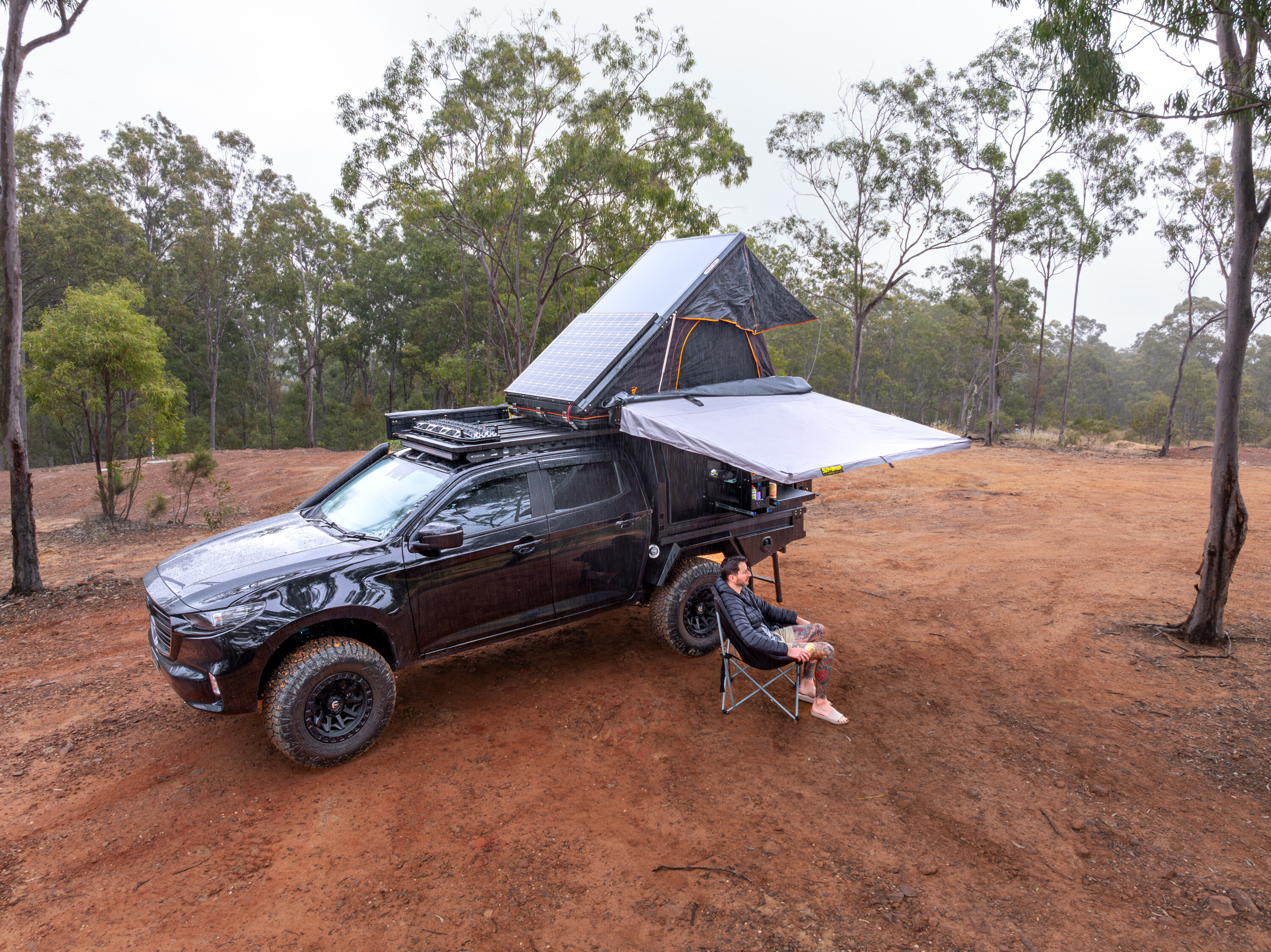
On the travel front we explore SA’s famous Bendleby Station and its surrounds, venture to the Golden Outback in WA – the remote and isolated part of the state’s mid-west – and then take a strong along the Great North Road north of Sydney, NSW.
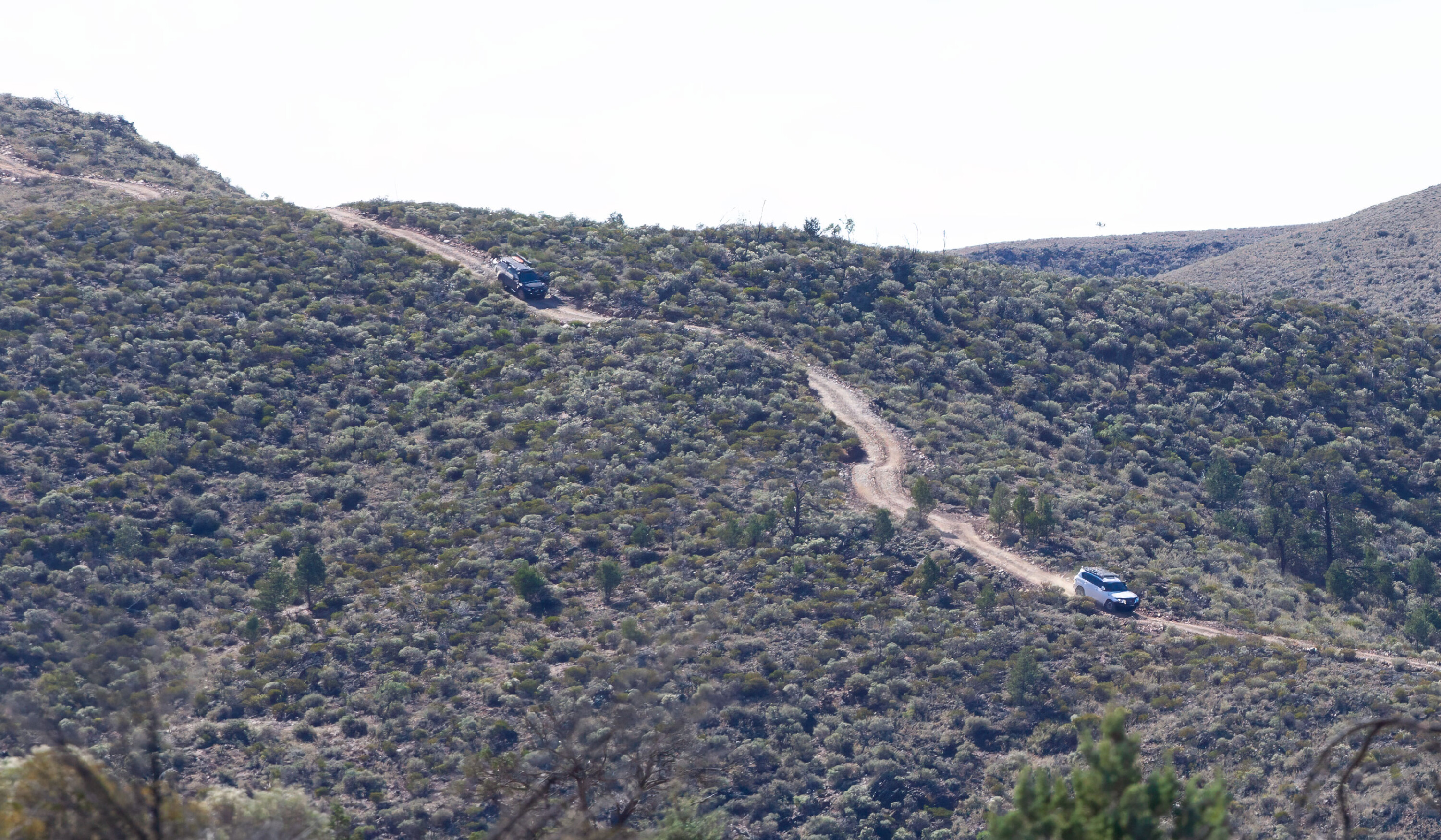
What else is there?
- I-Venture Trip to the Flinders Ranges
- Tell-all guide on how to set up a 4×4 for towing
- Wheel load ratings explained
- DOOG Booster Seat tested
- New gear, readers’ rigs, news and more!
The August 2024 issue of 4X4 Australia is out now.
Ford Performance has debuted its Raptor T1+ at the 2024 Goodwood Festival of Speed, with the rally-bred 4×4 set to compete at the 2025 Dakar Rally.
The result of an engineering collaboration between Ford Performance and M-Sport, the Coyote V8-powered Raptor T1+ utilises an advanced suspension set-up consisting of front and rear independent double-wishbone suspension. Fox coilover three-way adjustable and four-way adjustable external bypass dampers, with remote reservoirs on each wheel, enable the T1+ to remain surefooted at ultra-high off-road speeds.
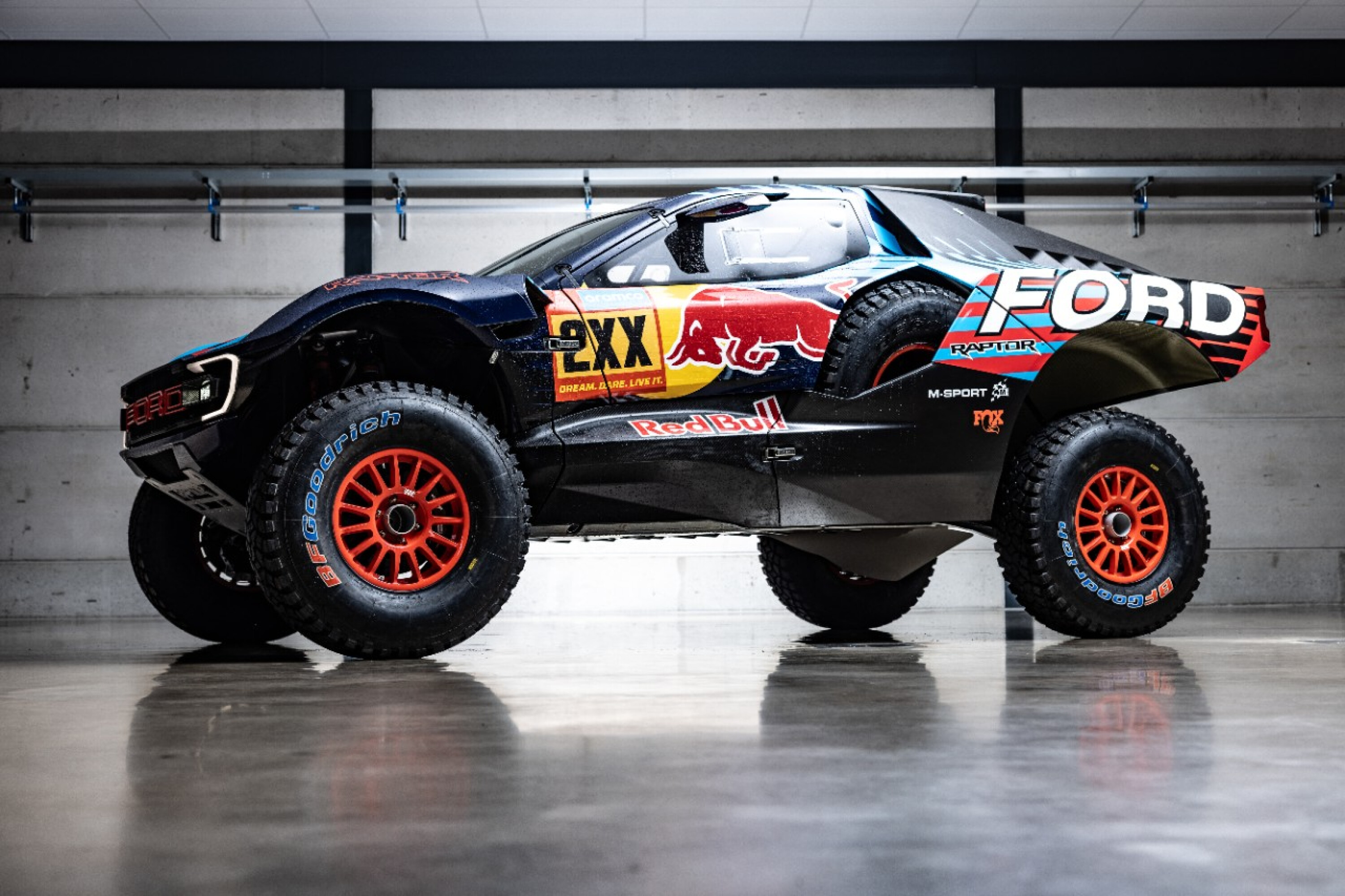
A unique dry-sump oil system has also been fitted, and a tuned exhaust allows the T1+ to excel at off-road events like Dakar.
Sitting on 8.5 x17-inch aluminium wheels inside 37-inch tyres, the fully bespoke vehicle has up to 350mm of wheel travel. The Raptor T1+ has a minimum weight of 2010kg, is 2300mm wide, and has a massive approach angle of more than 70 degrees. Front and rear 355mm Alcon ventilated discs and six-piston monoblock callipers provide sufficient stopping power.
Utilising a T45 steel space frame and carbon-fibre body panels, the purpose-built T1+ retains the Raptor’s 400mm ground clearance, wide stance and FORD lettering across the grille.
“The Ford Raptor T1+ is a stake in the ground for our global off-road vision – we want to take on the best and prove ourselves in the toughest places on earth,” said Mark Rushbrook, global director of Ford Performance Motorsports.
“The lessons we are learning from Raptor T1+, along with competing with stock trucks in Baja 1000 and Finke Desert Race, will help make Raptor vehicles even better for our customers.”
In preparation for the 2025 Dakar Rally, the teams – including rally drivers Carlos Sainz Sr. and Nani Roma – will compete at the 2024 Baja Hungary (August 8-10) and 2024 Rallye du Maroc (October 4-11).
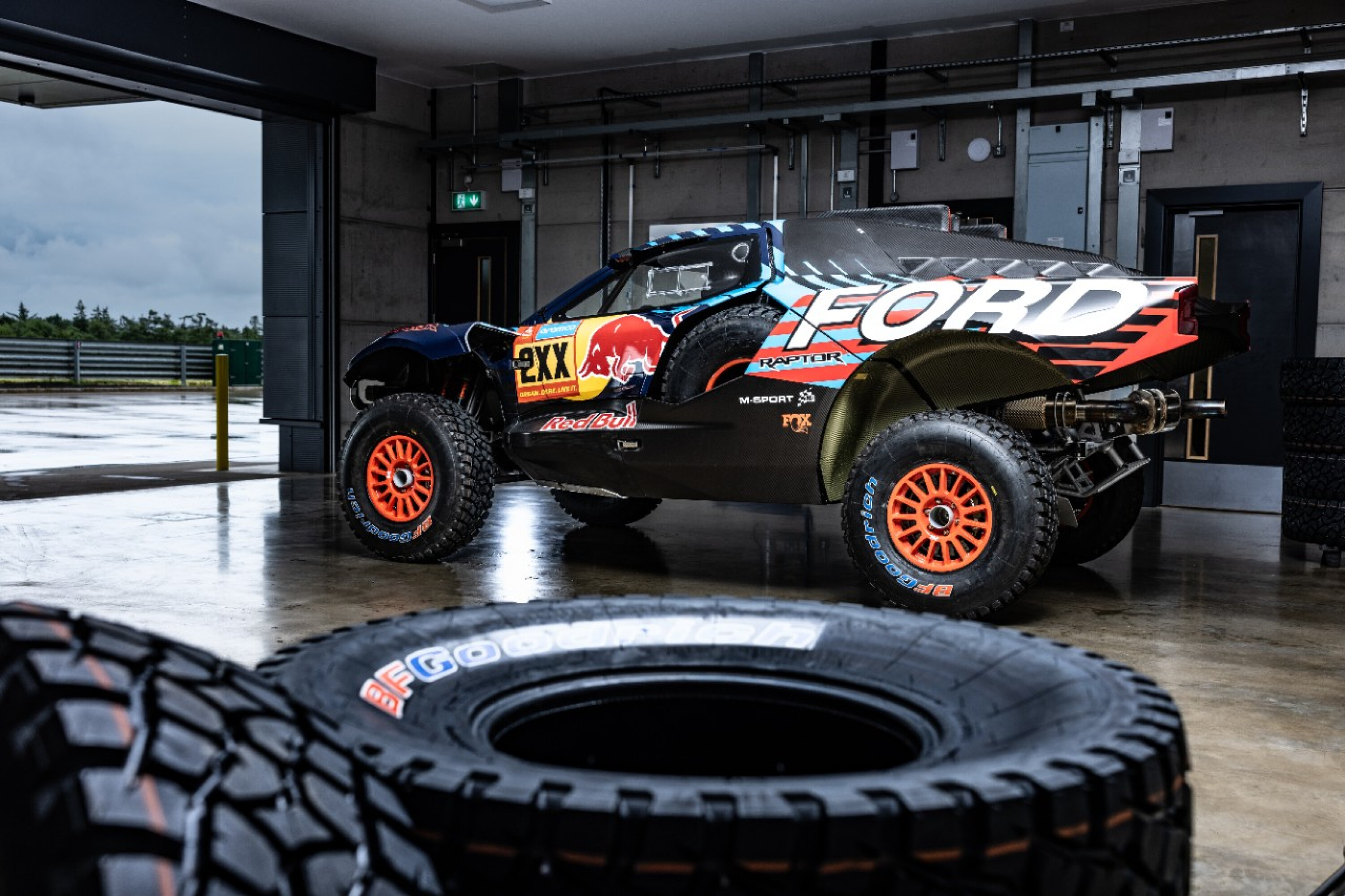
“This is the kind of opportunity that comes once in a lifetime – to support Ford Performance as they head to Dakar with this new Ford Raptor T1+ is going to be an incredible adventure,” said Matt Wilson, M-Sport director and Dakar team manager. “We have already completed 10,000 kilometres of testing in some of the harshest conditions we could find, so we feel ready to take on this ultimate challenge starting at Baja Hungary next month.”
The 2025 Dakar Rally takes place from January 4 to 17.
There’s no denying the Ford Ranger is Australia’s most popular 4×4 vehicle, with the ute flying out of showrooms at a rapid rate so far in 2024.
From January to June this year, Ford delivered a total of 30,620 new Rangers to customers, comprehensively keeping its strongest competition at arm’s length. The Toyota HiLux ended the halfway point of 2024 with a total of 24,980 sales in the bank. Despite falling short of the Ranger by 5640 sales, it’s an impressive result considering the current-gen HiLux is built on a platform that’s essentially a decade old.
The Isuzu D-MAX is as consistent as ever, rolling out a total of 12,441 new units in the first six months of the year. Its MU-X stablemate also surpassed 10,000 sales so far this year, ending June with a total of 10,083. It wasn’t enough to be Australia’s best-selling 4×4 SUV, though, with that honour going to Ford’s Everest with 11,276 sales.
The only other large 4×4 SUV to make the top 10 list was the Toyota 300 Series LandCruiser, which ended June with 8199 year-to-date sales. The Nissan Patrol ended the first six months of 2024 with a total of 3943 sales.
Four utes round out the bottom end of the top 10 list, with the Triton (7626) leading the BT-50 (6239), 70 Series LandCruiser (6199) and Navara (5052).
Outside of the top 10 is Volkswagen, with the German brand shifting a total of 4924 Amarok 4x4s so far this year. This places it ahead of only the budget brands: GWM Ute (4313 sales), LDV T60 (3391), and SsangYong Musso (2027). GWM’s large SUVs – the Tank 300 and Tank 500 – have sold 2153 and 622 units respectively. Only 169 Jeep Gladiators have been sold so far this year.
The premium 4×4 ute segment saw the Chevrolet Silverado (1887) outsell both the Ram 1500 (1710) and Ford F-150 (940).
Overall, a total of 632,412 new vehicles have been sold so far in 2024, surpassing the previous record of 605,522 in 2018 and representing a year-to-date increase of 8.7 per cent on last year.
Of those 632,412 sales, the LCV segment accounted for 142,037 sales and the SUV segment accounted for 351,354 sales. Compared to 2023, that’s an increase of 10.1 per cent and 9.0 per cent respectively.
“The end of the financial year has traditionally been a strong month for vehicle sales, and achieving 632,412 sales in just six months is a testament to the resilience of the market,” said Tony Weber, FCAI Chief Executive.
Best-selling 4x4s so far in 2024 – January to June
| 1: Ford Rangeru00a0 | 30,620 |
|---|---|
| 2: Toyota Hiluxu00a0 | 24,980 |
| 3: Isuzu D-MAXu00a0 | 12,441 |
| 4: Ford Everestu00a0 | 11,276 |
| 5: Isuzu MU-Xu00a0 | 10,083 |
| 6: Toyota LC300u00a0 | 8199 |
| 7: Mitsubishi Tritonu00a0 | 7626 |
| 8: Mazda BT-50 | 6239 |
| 9: Toyota LC70u00a0 | 6199 |
| 10: Nissan Navarau00a0 | 5052 |
We’re about to get a comprehensive look at the hotly anticipated Kia Tasman ute.
Kia has just dropped a teaser for its upcoming documentary series, which will provide a behind-the-scenes look at the Tasman’s extensive testing regime in the harsh Australian wilderness. The series – titled One More Round – will run from July to October, and the first episode is scheduled for release on July 22. Here’s the teaser ?
Aimed at building excitement in the lead up to the vehicle’s world premiere in the second half of 2024, the series will also demonstrate the Tasman’s ability to cope with the relentless demands that Australian 4×4 tourers face and highlight its durability and performance in a number of settings.
Episodes will focus on off-road testing, deep-water wading, all-terrain durability, towing trials, on-track performance, and ride and handling. Plus, the series will feature interviews with the research and development team.
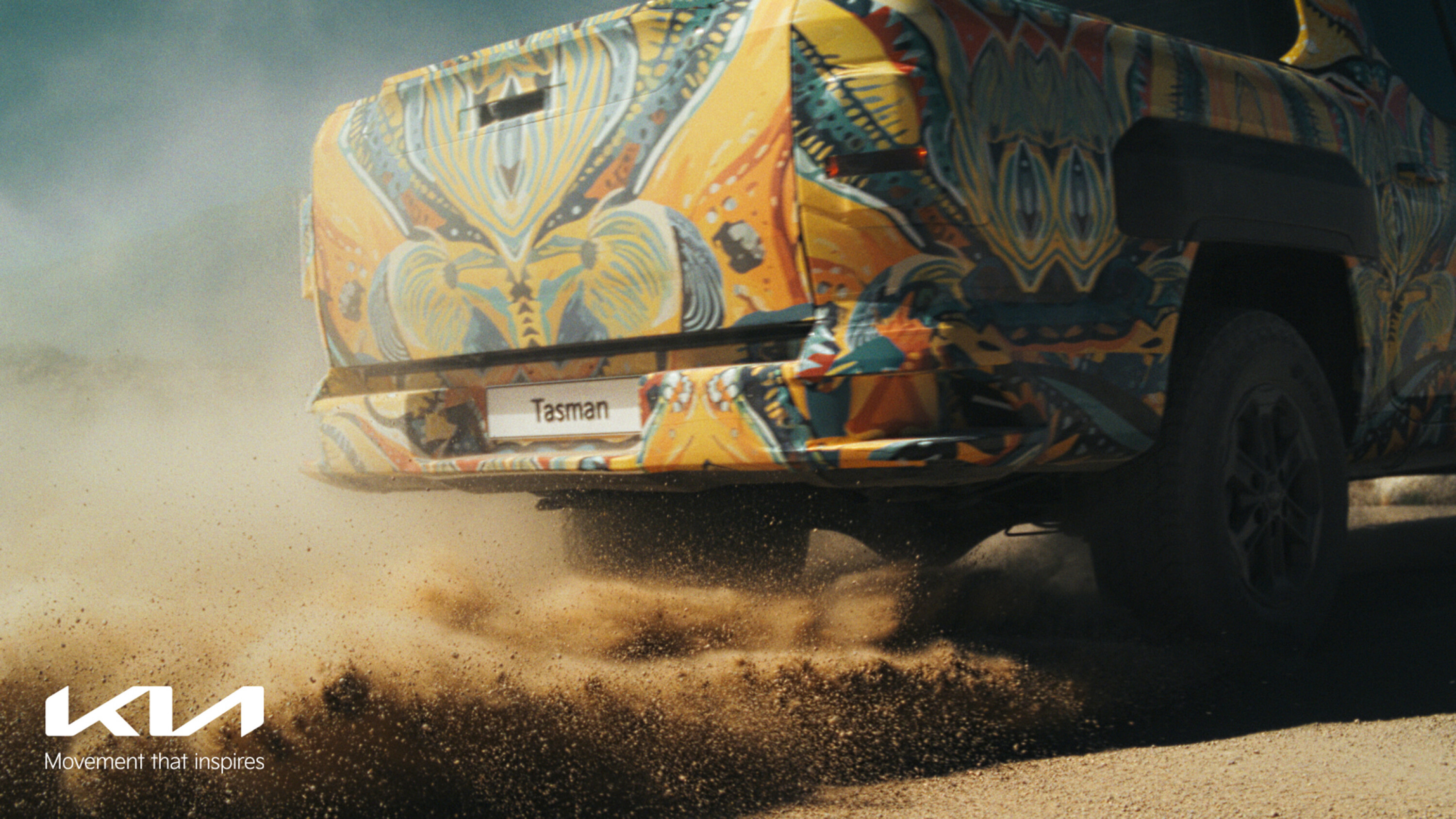
“The Kia Tasman represents our unwavering dedication to innovation,” said Heui Won Yang, President of the Kia R&D division. Every aspect of our R&D division’s capability has been channelled into creating a vehicle that not only lives up to its title as the first of its kind, but also delivers performance that surpasses expectations.”
The Tasman is expected to make its world premiere in the second half of 2024. It will then be officially released in 2025, initially in Korea before coming to Australia.
Embarking on a remote tour in Australia and staying off-grid for any extended amount of time can be the adventure of a lifetime, and it’s something I’m lucky enough to do on a regular basis.
The Australian outback, with its vast landscapes, rugged terrain and remote beauty, offers an unparalleled experience. However, extended off-grid adventure comes with its challenges, requiring thorough preparation and modifications to your vehicle.
The cornerstone of a successful extended remote touring experience lies in a well-prepared vehicle; a 4×4 suited to travelling in the Australian outback is one that must be reliable, durable and capable of handling harsh conditions. Here is what I have learned over 25 years when it comes to setting up a vehicle for such an endeavour.
JUMP AHEAD
- Fuel range
- Navigating and comms
- Water and food
- Staying off-grid
- Health, safety and environment
- Top five items to pack
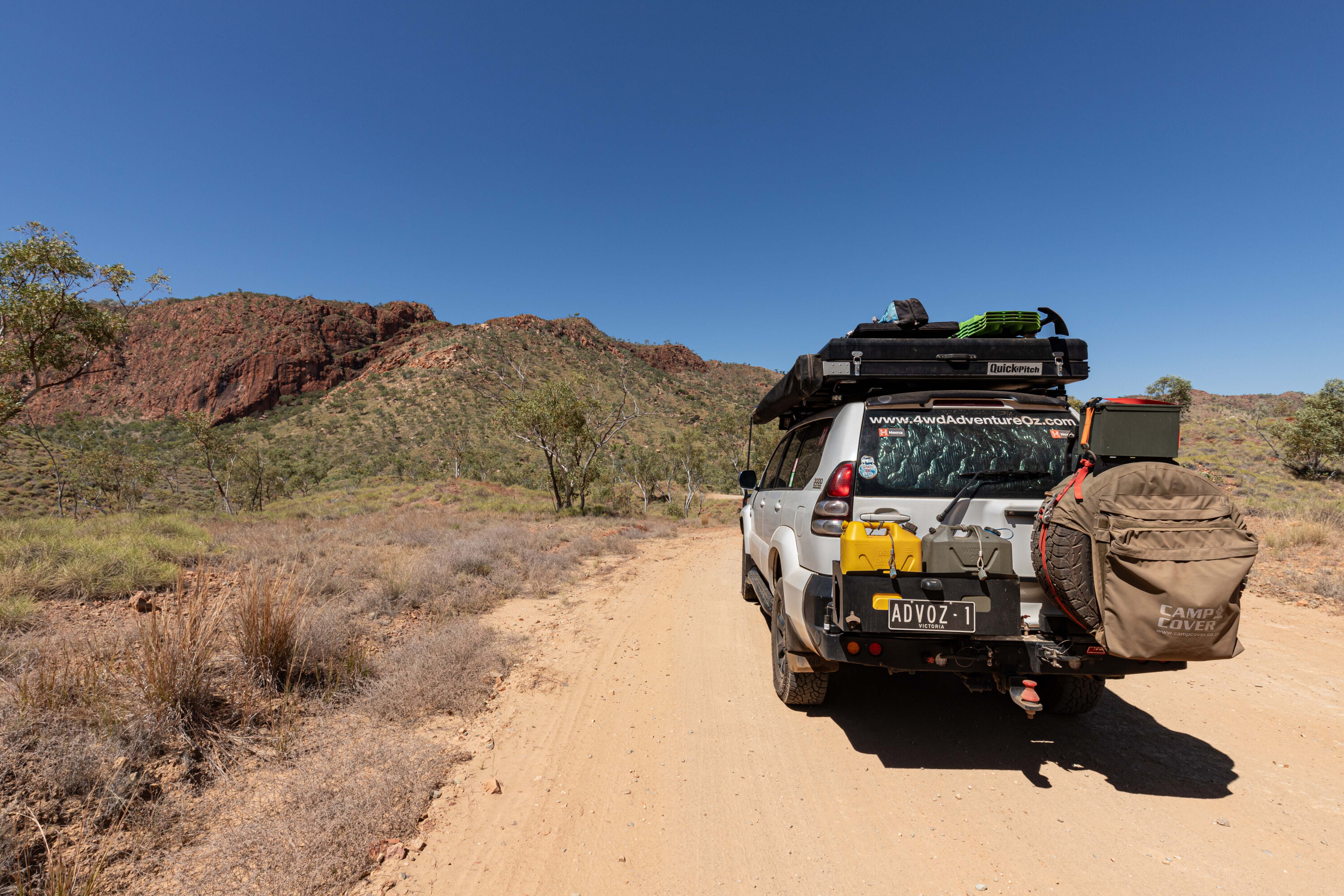
Fuel range
If the fuel capacity and range of your 4×4 is less than 1000km, carrying extra fuel will be necessary.
One of the reasons I purchased a Toyota Prado was its standard twin 90L fuel tanks. I also carry enough 20L jerry cans to give me a range of over 1200km, so I can travel long distances off-road without having to worry about running out of fuel.
The best way to improve your vehicle’s fuel-carrying capacity is to install an aftermarket auxiliary tank, or replace your existing fuel tank with a larger capacity aftermarket fuel tank. The major players for aftermarket fuel tanks are ARB, Long Ranger and Brown Davis, but they don’t necessarily manufacture tanks to suit all vehicles.
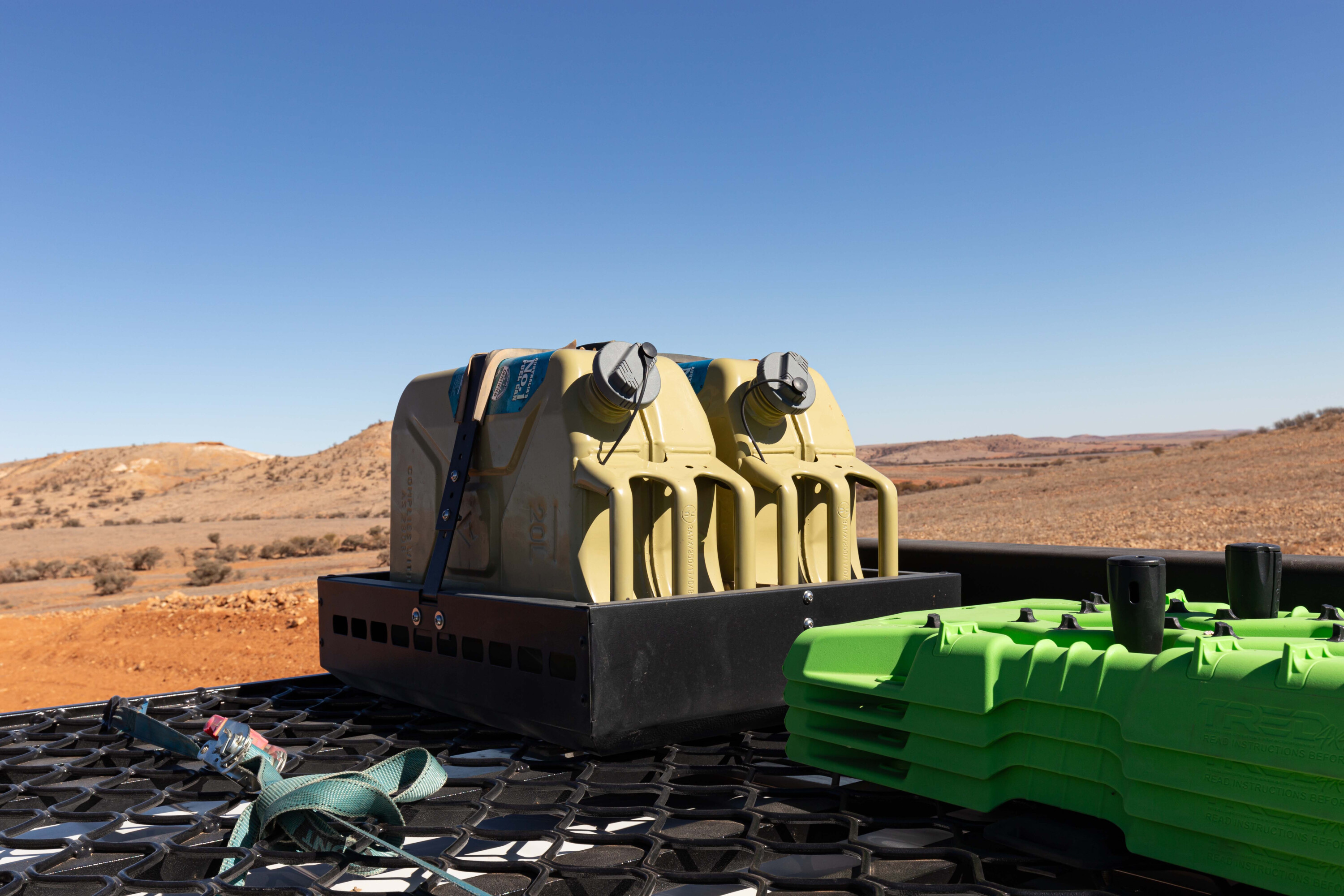
For vehicles from the USA, several imported replacement fuel tanks are available, with Titan Fuel Tanks one company that specialises in this area.
Ute owners also have the option to install a polytank in the tub or tray; some of these come with pump kits included while others require you to manually siphon fuel into the OEM fuel tank.
Jerry cans are also an option, but you will need a secure place to mount them. Fuel should never be carried inside the cabin of a 4×4 as it can leak and emit fumes that can be fatal. If your 4×4 uses diesel, only use a jerry can that is designed to carry diesel fuel.
The aftermarket rear bar on my Prado has a dual jerry can holder on which I carry one diesel jerry can and one water jerry can.
Steel fuel jerry cans were my go-to, but I found that when carried in the rear holder, the bottom would wear through on exposed bolt heads which caused leakages. In the past, I also carried two steel jerry cans on my roof rack, mounted in a holder specifically designed for the job, and I used a syphon hose with the ball at the end to transfer fuel into the Prado fuel tank.
Installing a fuel prefilter into the mix can assist in preventing bad fuel from affecting your engine. One thing I have learnt is that if you do install a prefilter, make sure it is a brand that can be easily sourced anywhere in the country; the one my mechanic installed, a Diesel Dog, isn’t readily available so now I carry a spare if needed.
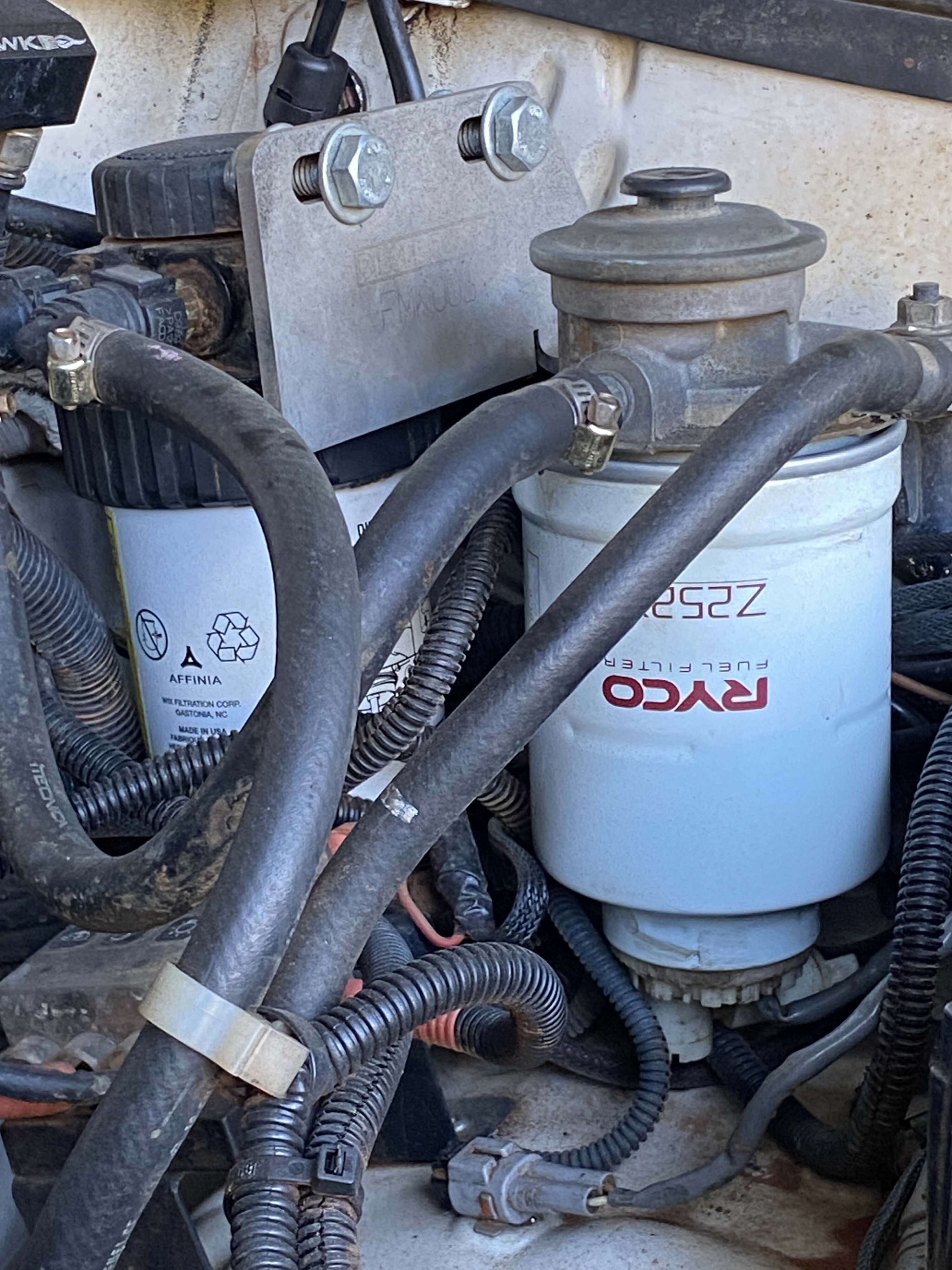
Navigating and comms
Remote touring in Australia means often being out of mobile phone range and this is where appropriate navigation and communication equipment become your lifelines.
Carrying a reliable GPS navigation system, such as the Hema HX2 or the Garmin Overlander, supplemented with detailed paper maps, ensure you can navigate even when digital devices fail. As well as maps, books such as Hema’s atlas and guides are helpful when planning a route, and when finding POIs such as campgrounds, boat ramps, track ratings and much more.
When it comes to communication devices a satellite phone and a UHF radio keep you connected. The UHF radio is useful for communicating with other vehicles in your convoy or nearby, while the satellite phone is essential for emergencies.
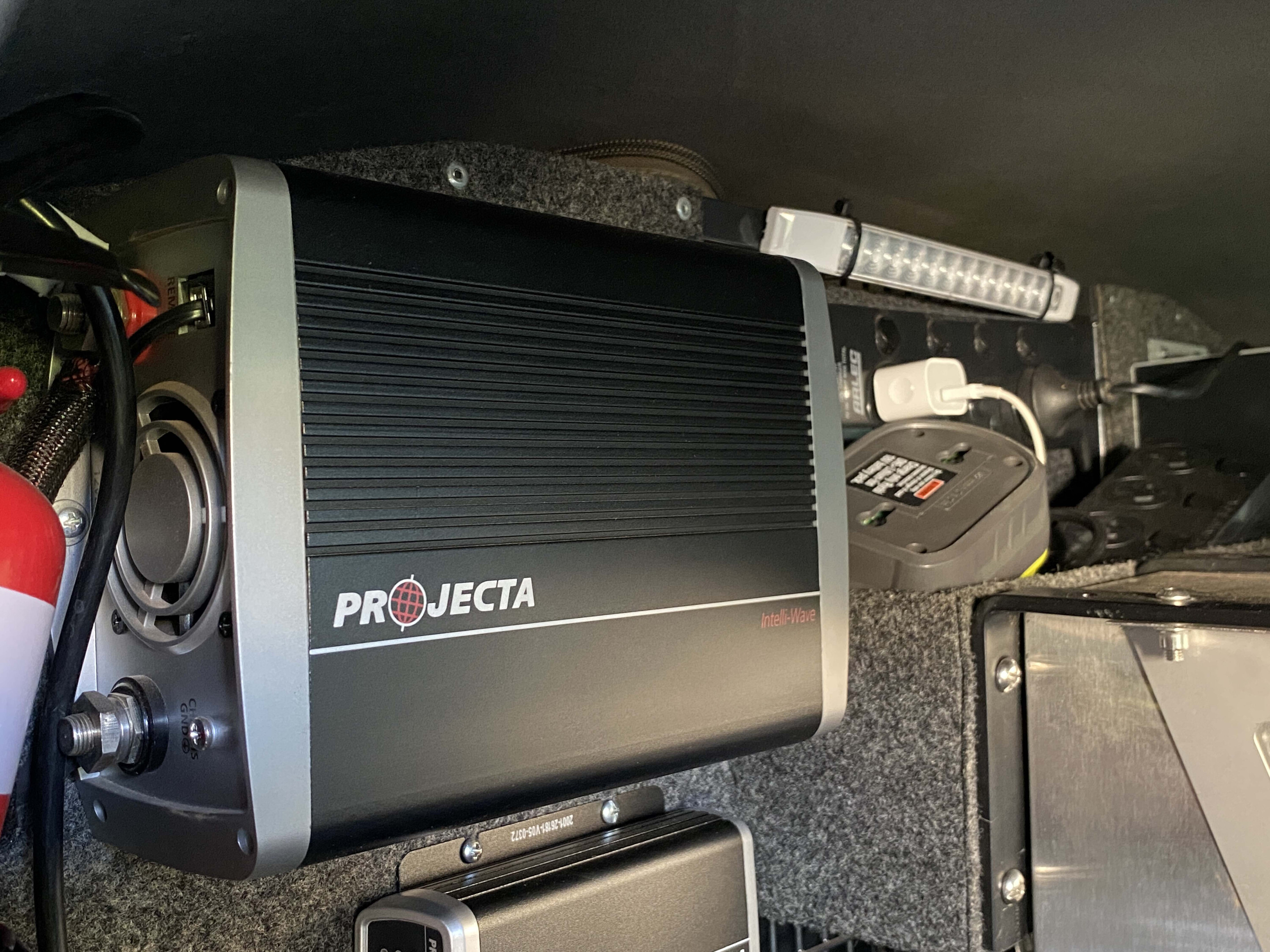
Satellite phones are expensive to purchase, and the phone/data plans aren’t cheap either, but they are invaluable when it comes to emergencies.
If you can’t afford to buy a satellite phone, you can hire them, which I did back in the day on my first Simpson Desert crossing in the early 1990s, picking it up at Mount Dare and dropping it off at the Birdsville Police Station.
You can still do this for the Simpson Desert, but the Birdsville pickup/drop-off point is now the Wirrari Information Centre. Other businesses that hire satellite phones in Australia include RASP (Rent A Sat Phone), SatPhone Shop and Satellite Hire.
When travelling in remote areas, don’t expect to have mobile coverage once you leave town as there are still many black spots in Australia.
You might get some coverage near Aboriginal communities and even as you approach roadhouses, but decent mobile coverage can’t be relied upon; in some cases, Optus is the only solution (William Creek), which is frustrating for a Telstra subscriber, or vice versa.
The roll-out of Starlink has vastly improved communications in remote areas as it provides access to the internet, social media platforms and phone calls. Recently I used Starlink to organise a vehicle recovery on the Gary Junction Highway; it saved time and relieved stress as I didn’t need to worry about poor satellite phone connections as has happened in the past. Starlink is power hungry though, so this is something that has to be closely monitored.
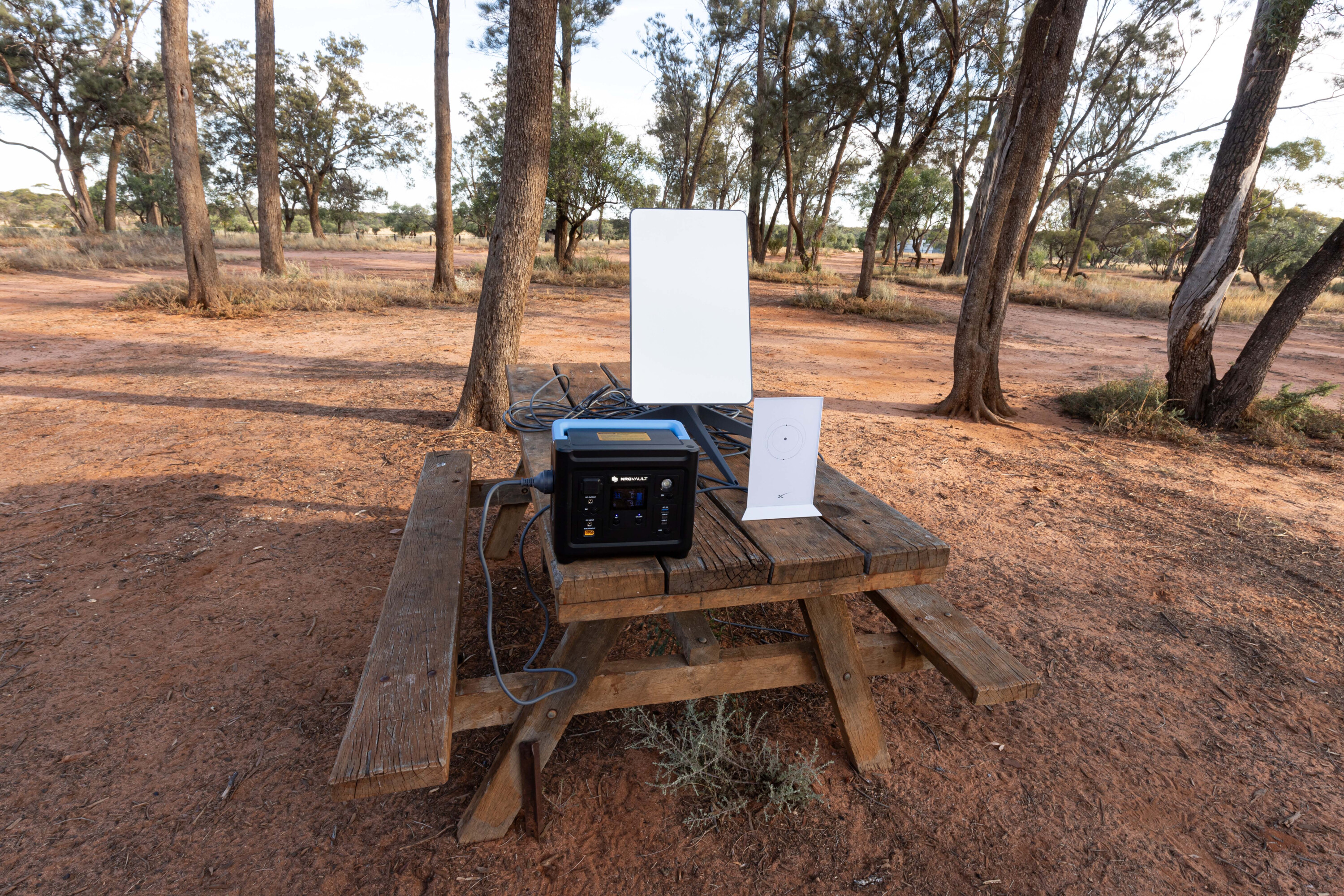
Water and food
Carrying sufficient water is crucial; your body requires water to survive and if you run out you will die quicker than if you ran out of food.
Jerry cans or built-in water tanks, combined with water purification methods, will ensure you stay hydrated. Allow enough water for drinking, cooking and washing. A good rule of thumb is four to five litres per person per day, plus extra for emergencies.
I carry a Boab 40L poly water tank connected to a 12V pump for drinking water, and it sits in the rear footwell of the Prado. While I expect that water to last at least 10 days, I also carry a water purifier so I can top it up when and where I can. My compact and portable Guzzle H2O pump filters and purifies drinking water from any fresh water source.
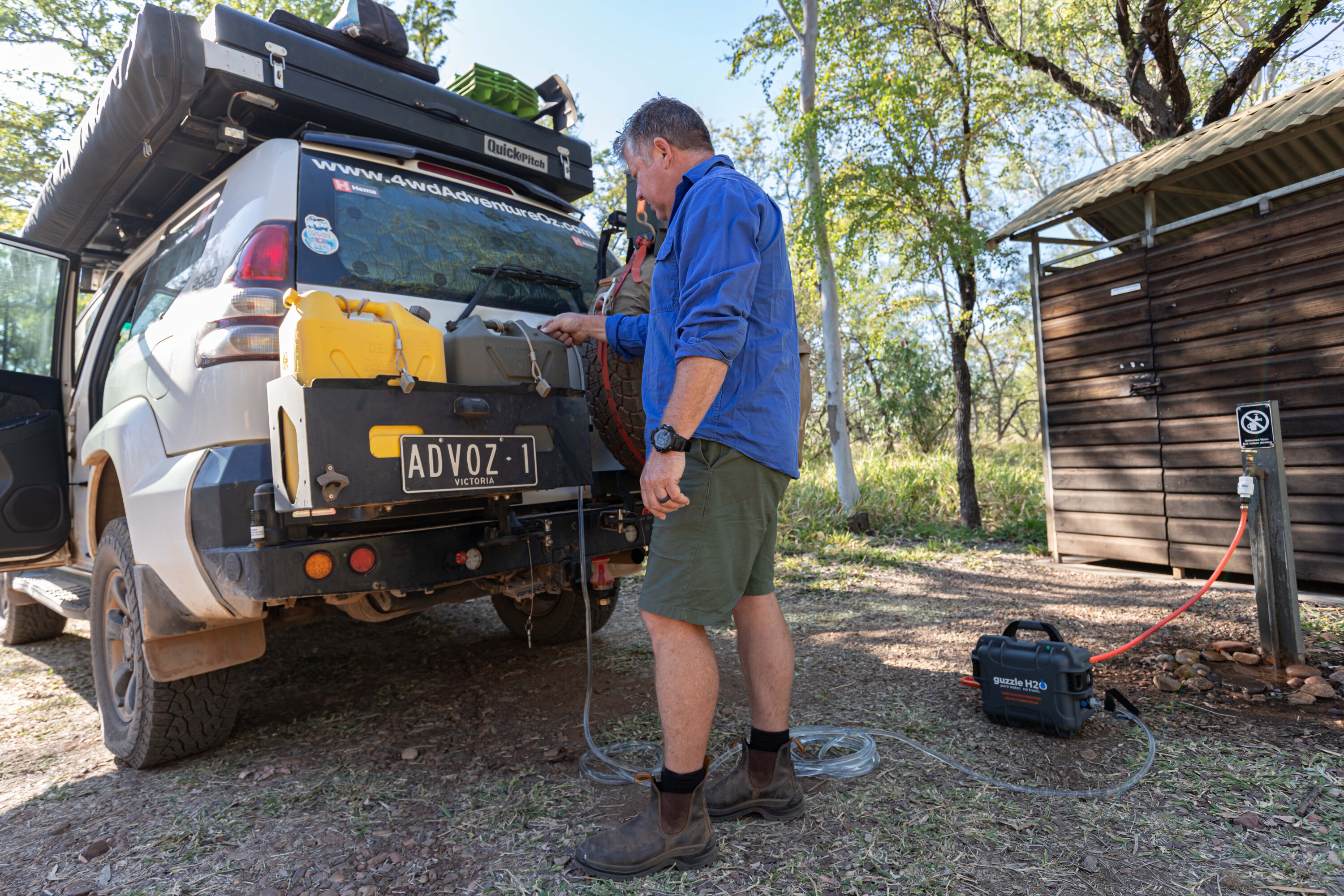
I also carry a 20L jerry can with a tap to carry potable water for personal cleanliness and for washing dishes. I top this up at service stations, caravan parks, rivers, streams and bores.
Other options for water storage include stainless steel and poly tanks that can be hard-mounted either under your 4×4, inside the panels of your rig or in the tub or tray of a ute. Water bladders are another option but many people complain about the water taste.
When it comes to food and food storage, you have pantry items and fridge/freezer items. Pantry items include the types of food you keep in the cupboard at home, such as pasta, rice, tinned vegetables and soups, biscuits etc.
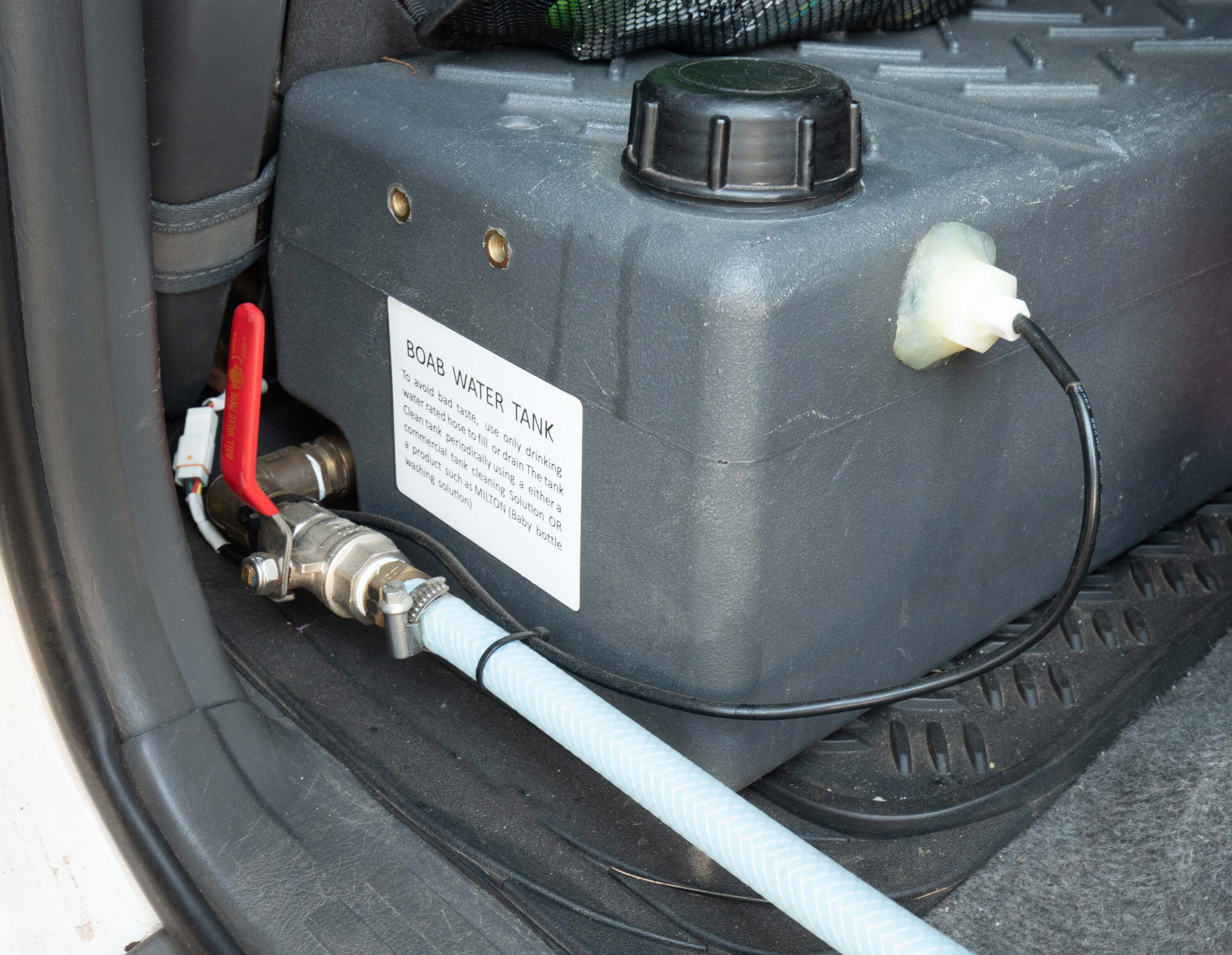
These items have a long shelf life and are easy to carry. I leave space in my rear drawers for most pantry items, but those items that I know will be used in the short term are packed in a zipped-up shopping bag.
Most pantry items that I carry will last at least until the end of the trip.
Fresh food is a little different. A portable fridge/freezer is invaluable for keeping food fresh but space in your 4×4 may restrict the size of the fridge available to you. The rear drawer system and cargo barrier in my Prado restrict me to a myCOOLMAN 44L compressor fridge, which means I don’t have a freezer.
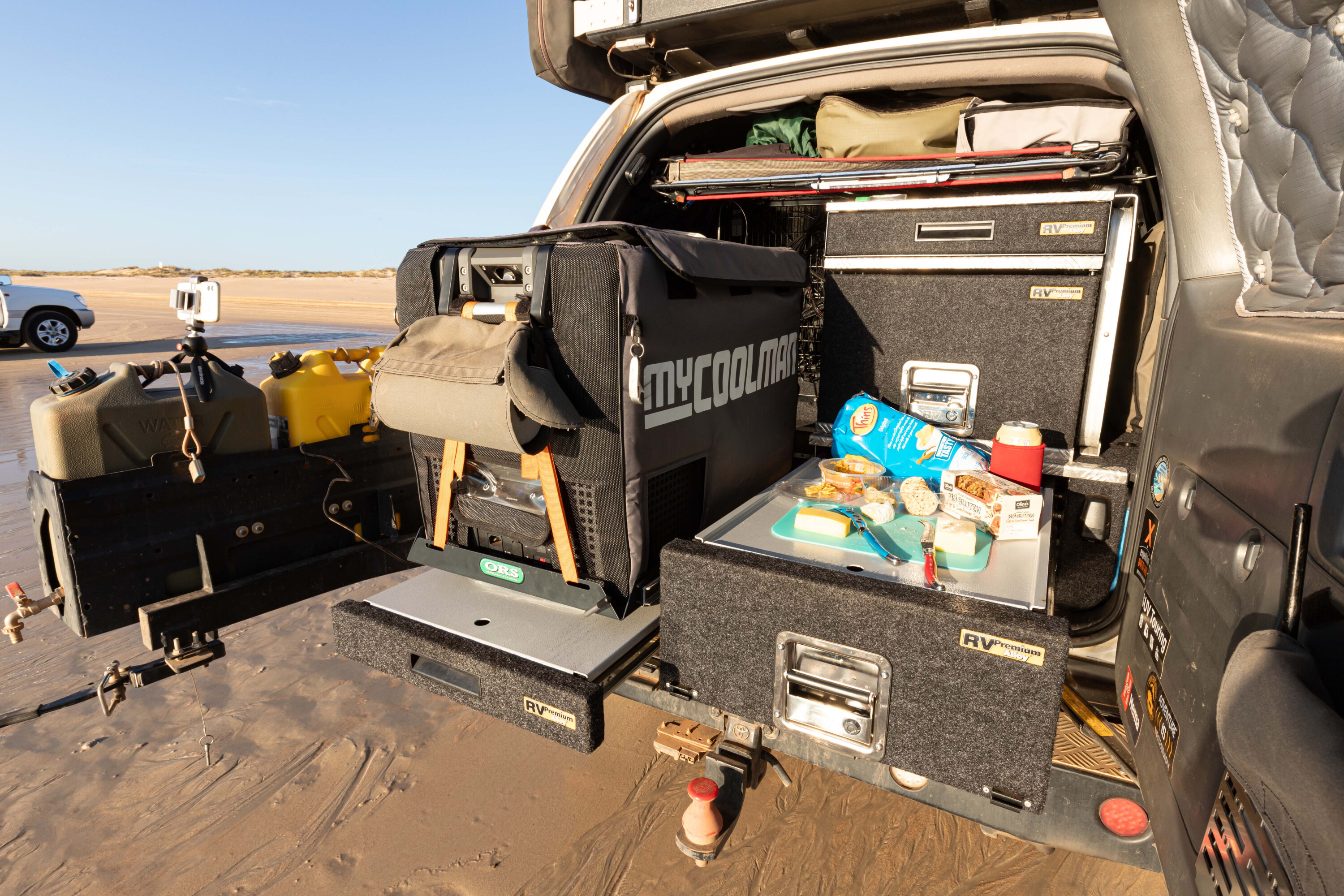
To get around not having a freezer I buy cryovac meat, and for those occasions when I can’t source this I carry a cryovac machine with me.
Vacuum-sealing food extends its shelf life, sometimes by weeks. When shopping, I plan to buy meat that will last me the longest time and vegetables that I can use in the short term (lettuce, tomatoes, broccoli) or that will last more than a week or two (potatoes, carrots).
If time spent off-grid is going to be longer than fresh food will last, I purchase pre-packed cooked food such as stews, pasta sauces, curries and risotto that can be heated in hot water. These are lightweight and easy to store, but I make sure they are packed in such a way that they won’t puncture or wear through when driving on rough tracks. I have never enjoyed freeze-dried meals, so they are not an option for me.
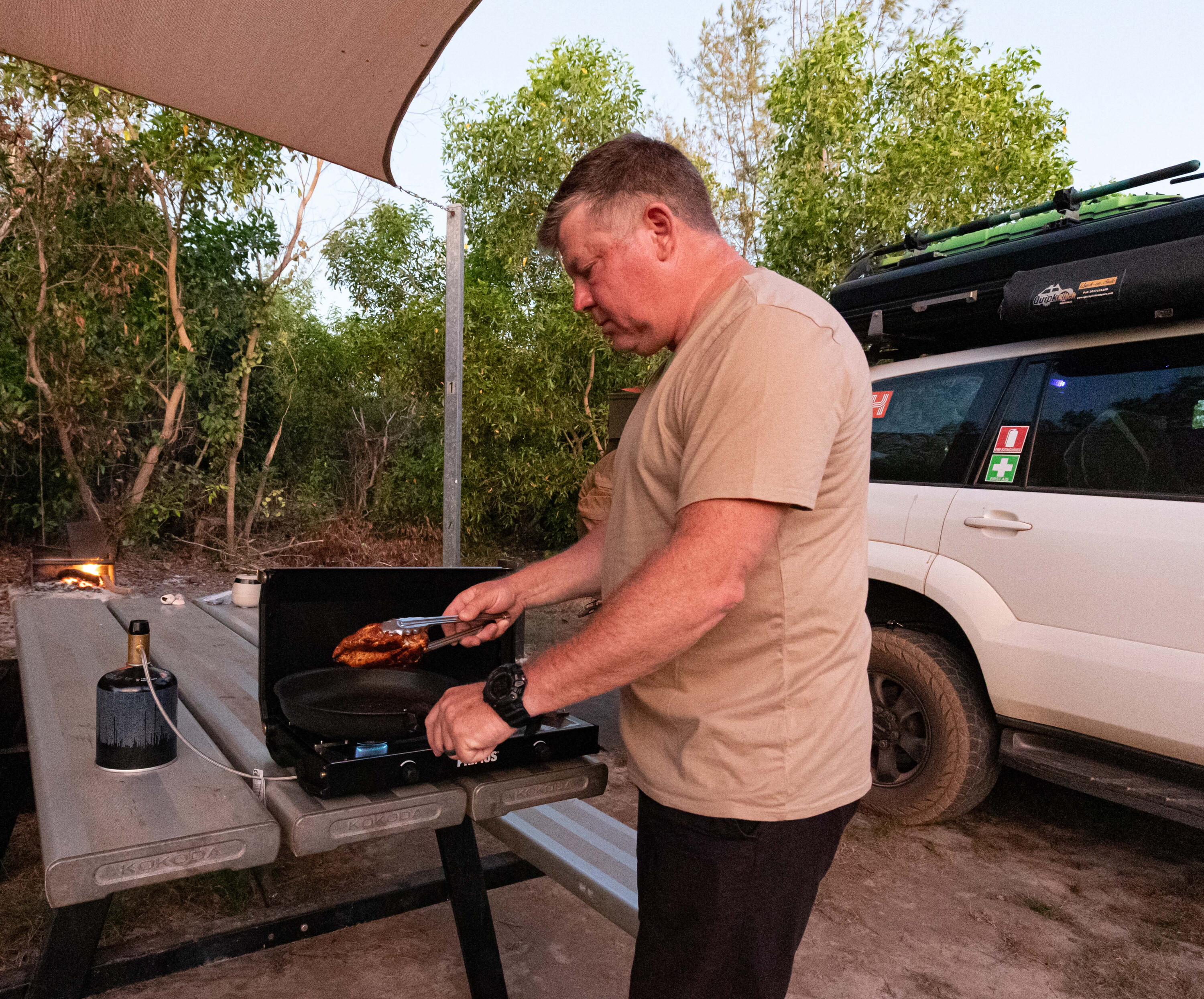
Staying off-grid
A dual-battery system powers your appliances without draining the starter battery. Having a management system that provides you with all the information you need for battery inputs, outputs and status is highly recommended.
When it comes to batteries, lithium is the way to go as it’s lighter, faster charging and allows full use of amp hours.
The size of the battery is important as the number of amp hours required will depend on what electrical equipment you need to power, as well as the weather conditions and the management system that looks after the battery.
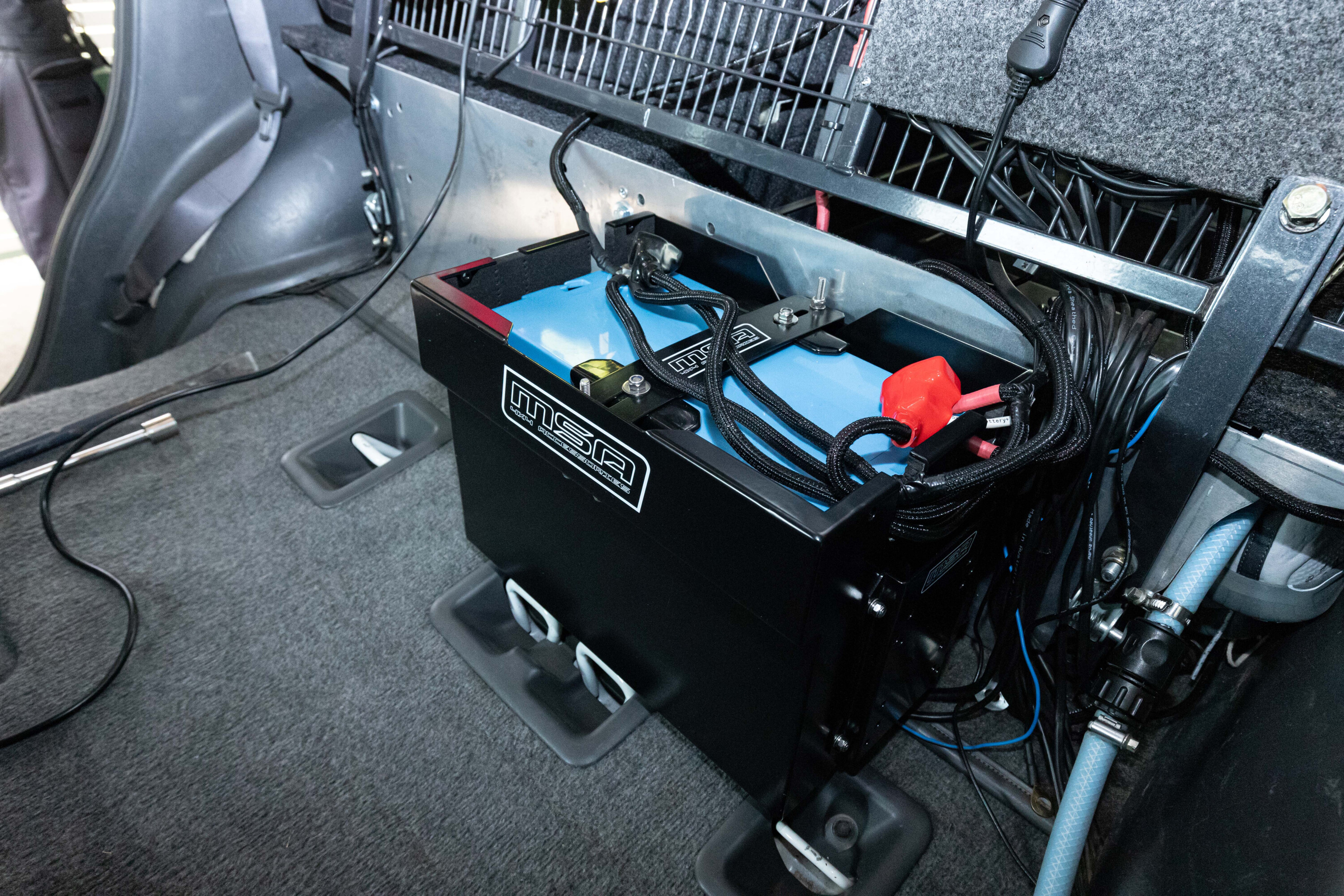
I have found that the 100Ah lithium battery in my Prado is not really big enough for my needs, keeping my laptop, drone, camera batteries, Starlink and electronic navigation tools going, but I don’t really have the space to go bigger.
Solar panels can supplement power needs for longer stays, whether they be permanently mounted or portable.
I have a 200W solar panel mounted to my rooftop tent and I carry a 180W folding solar panel as a secondary power source, and on the last trip I did this proved itself when the roof-mounted solar panel died halfway into my three-month journey.
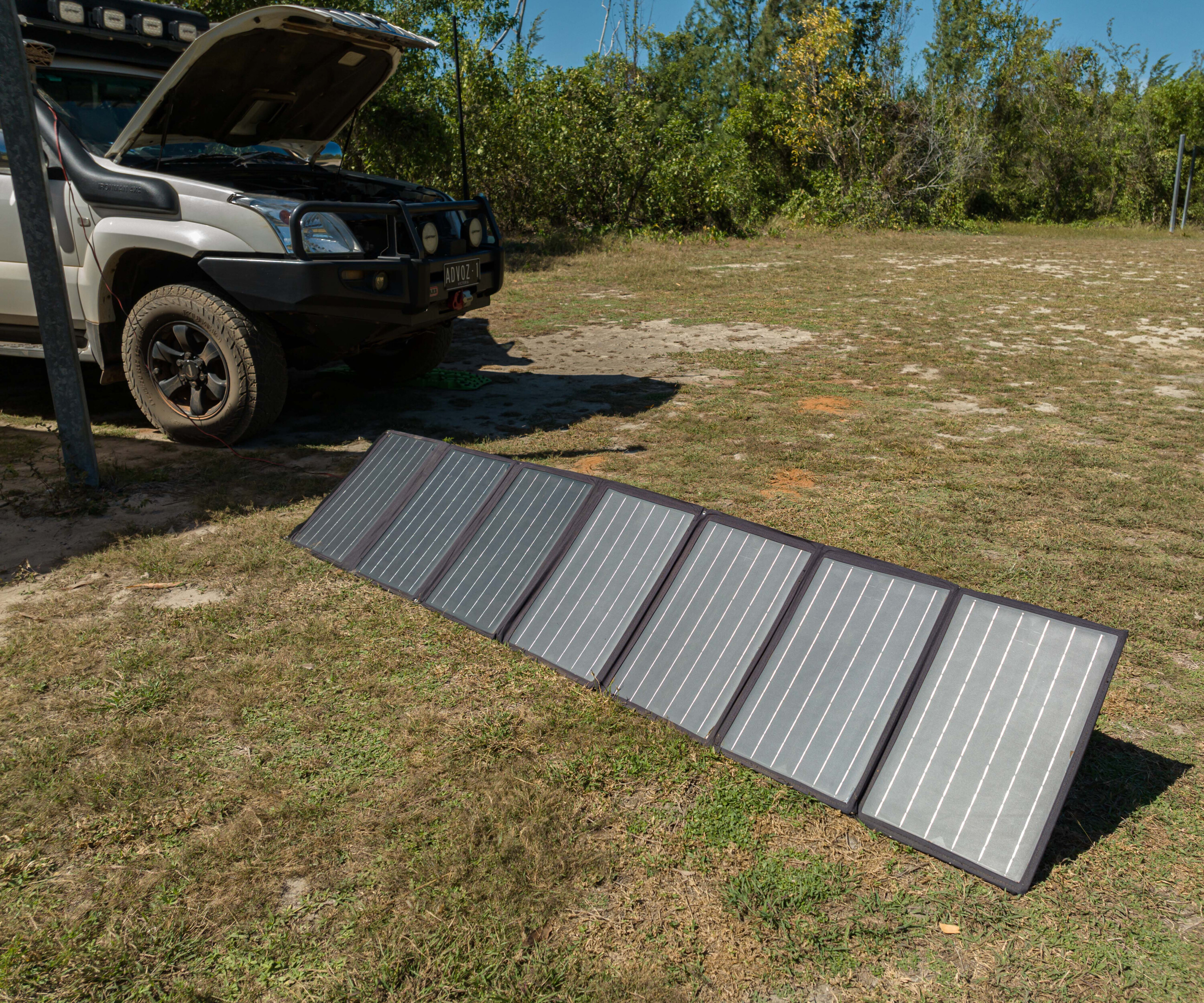
With my set up, I need to keep my 100Ah lithium battery charged up by going for a decent drive every second day or so.
The solar panels do a good job of topping up the battery, but my usage is often more than the solar input can make up for, especially in hot conditions. While I can get by without connecting to 240V for several weeks, I do find that lithium batteries enjoy a feed from it now and then as it helps to recalibrate the cells.
If you need to run sensitive electrical equipment, you’ll need a pure sine wave inverter. How big an inverter you will need depends on what you want to use it with. To run power-hungry devices like a coffee machine, air fryer, toaster or kettle, you will need a large (and therefore heavy) inverter, and your auxiliary battery will need to be big enough to power the inverter. For my needs, a 600W pure sine inverter perfectly suits my 100Ah lithium battery.

Health, safety and environment
Safety and environmental conservation are paramount considerations when travelling through delicate ecosystems of the Australian outback.
A comprehensive first aid kit tailored to your group’s needs, including snake bite kits and sun protection, is essential. Knowing how to properly administer first aid is also important; make sure you complete a first aid course to learn how, and to keep up to date on processes.
You should carry at least one fire extinguisher in an easy-to-access spot, and adhere to local fire regulations to protect both you and the environment. Take care when driving through spinifex as it can become stuck to the underside of your 4×4 and catch alight on hot mechanical components. The Talawana Track is littered with burnt-out vehicles caused by spinifex fires.
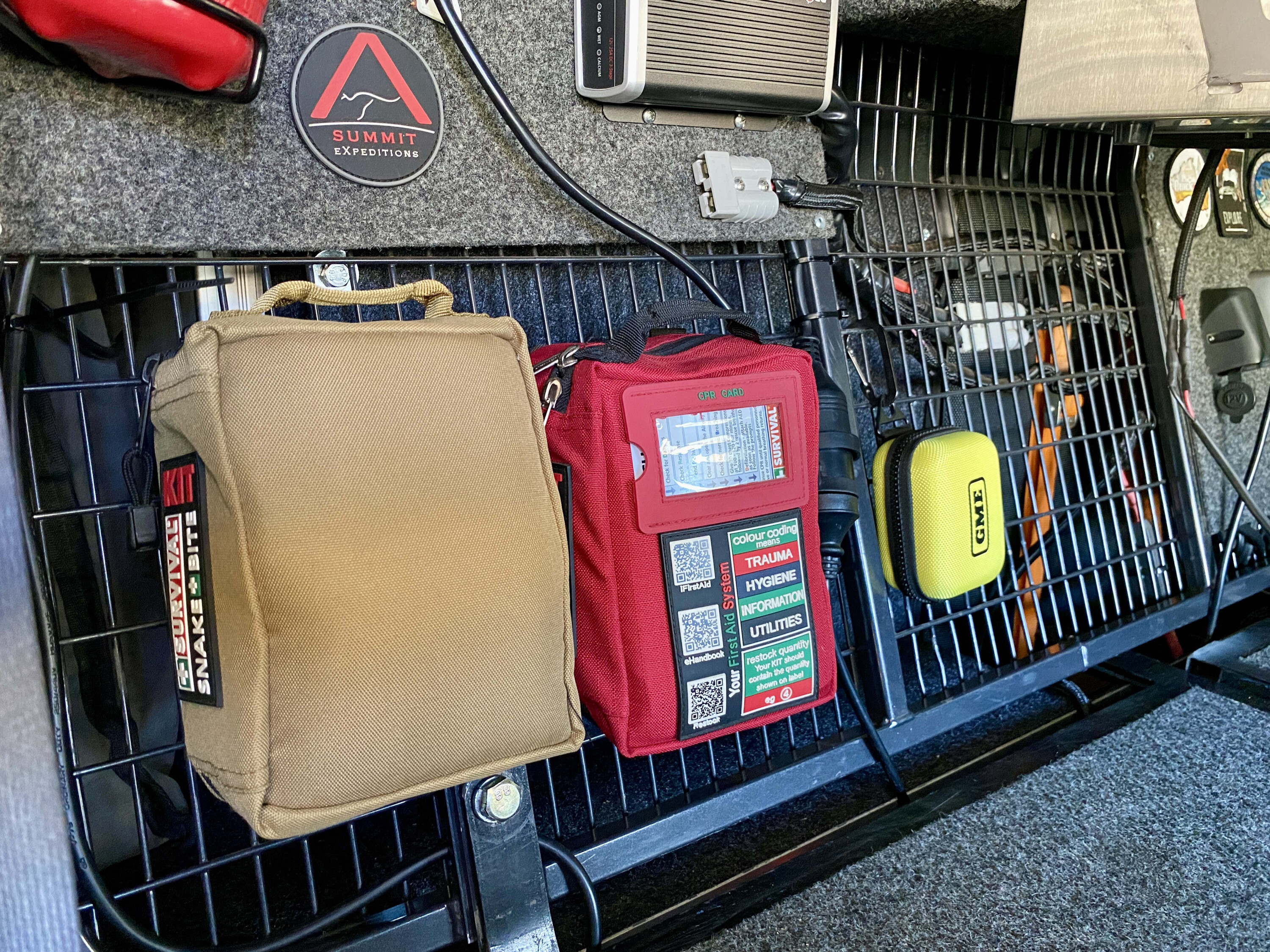
Carrying a Personal Locator Beacon (PLB) and knowing how to activate it can save your life in a critical situation. Store it where it can be easily accessed in an emergency, not locked away in the glovebox.
Mental well-being is something not often talked about but it needs to be taken seriously. Travelling solo on extended remote adventures can be mentally draining and is something I suffered on a four-month solo trip a few years ago.
Communicate with your loved ones and mates as often as possible, not only talking on the phone, but making a video call now and then. Talk to fellow travellers and enjoy a counter lunch while chatting to locals as often as you can. Schedule rest days so you can do something different, or just sit and read a book, but the best thing you can do is ask your partner or mates to join you on a section of the trip.
Top 5 items
- Tools that suit your vehicle
- Tyre inflation/deflation tool
- Baby wipes to keep clean and for cleaning dishes
- A water purifier to turn fresh water into drinking water.
- A portable battery pack to keep accessories charged up and to kick-start a lithium battery BMS when required.
I was fishing for barramundi on the Mitchell Plateau at the top of Western Australia when it struck me just how isolated and remote I was.
My camp was up past the stunning Mitchell Falls at Walsh Point, and I had seen no one for a few days after leaving the more popular tourist spots behind.
Being mid-July, Mitchell Falls itself was extremely busy, at the campsites, on the track to the falls, and even in the sky with choppers buzzing about ferrying tourists back and forth. I decided to head further north to the quiet Surveyors Pool, and eventually up to Walsh Point, where I was told the track was pretty ordinary.
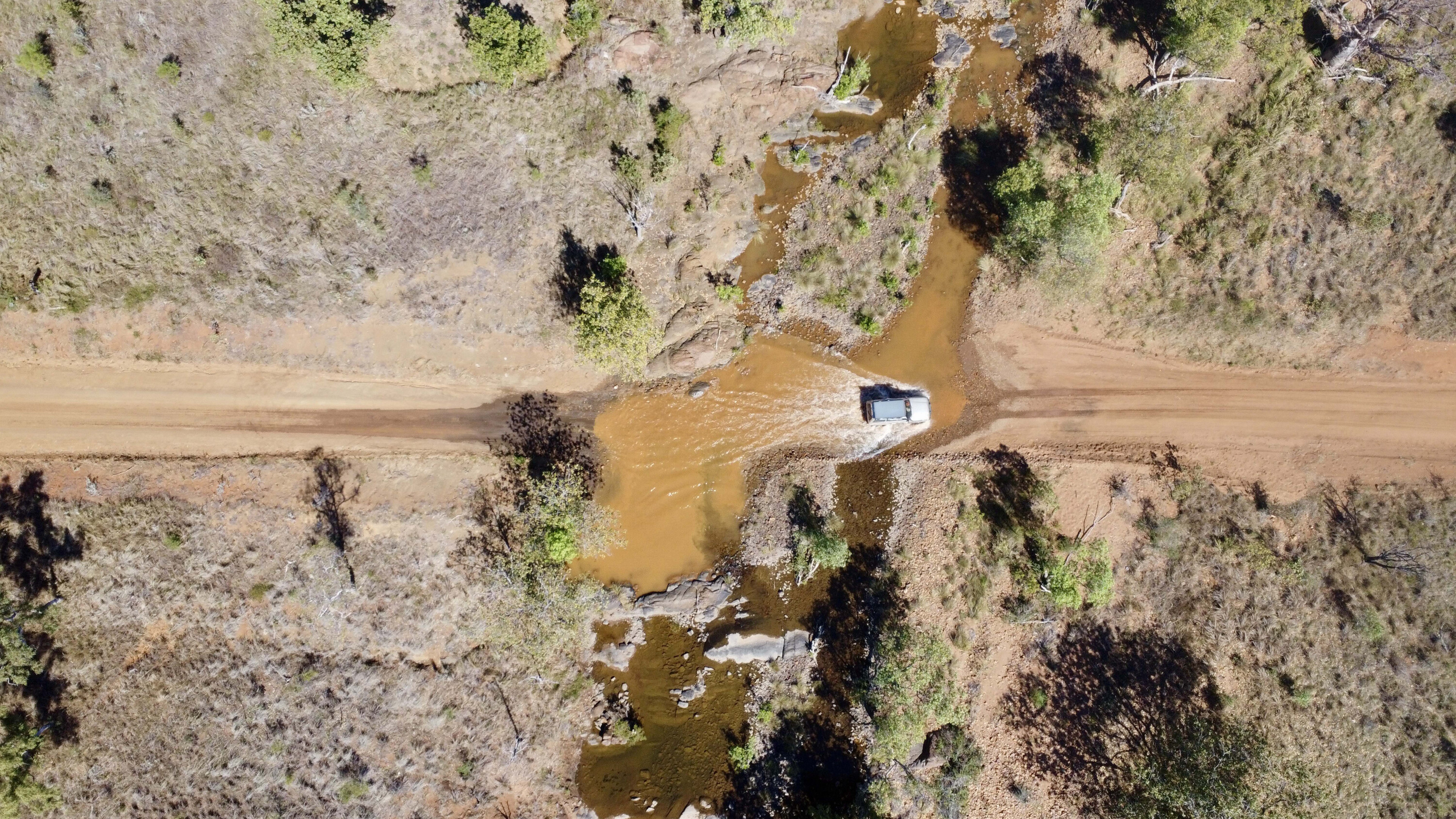
That advice must have put some people off, because when I arrived at the Surveyors Pool carpark, I was the only soul around, and there weren’t any noisy choppers in the sky.
With a 30-minute walk up to the pool and falls, I was blown away by the gorgeous Kimberley scenery and I found it hard to imagine this place in full flood. Laying in the cool water at the top of the falls for an hour, I heard the chatter of some visitors, so I decided it a good time to press on.
The road further up to Walsh Point is certainly rough, but not as severe as I was told it was back at Drysdale River Station. There are several lookouts along the track that offer breathtaking views across the Admiralty Gulf.
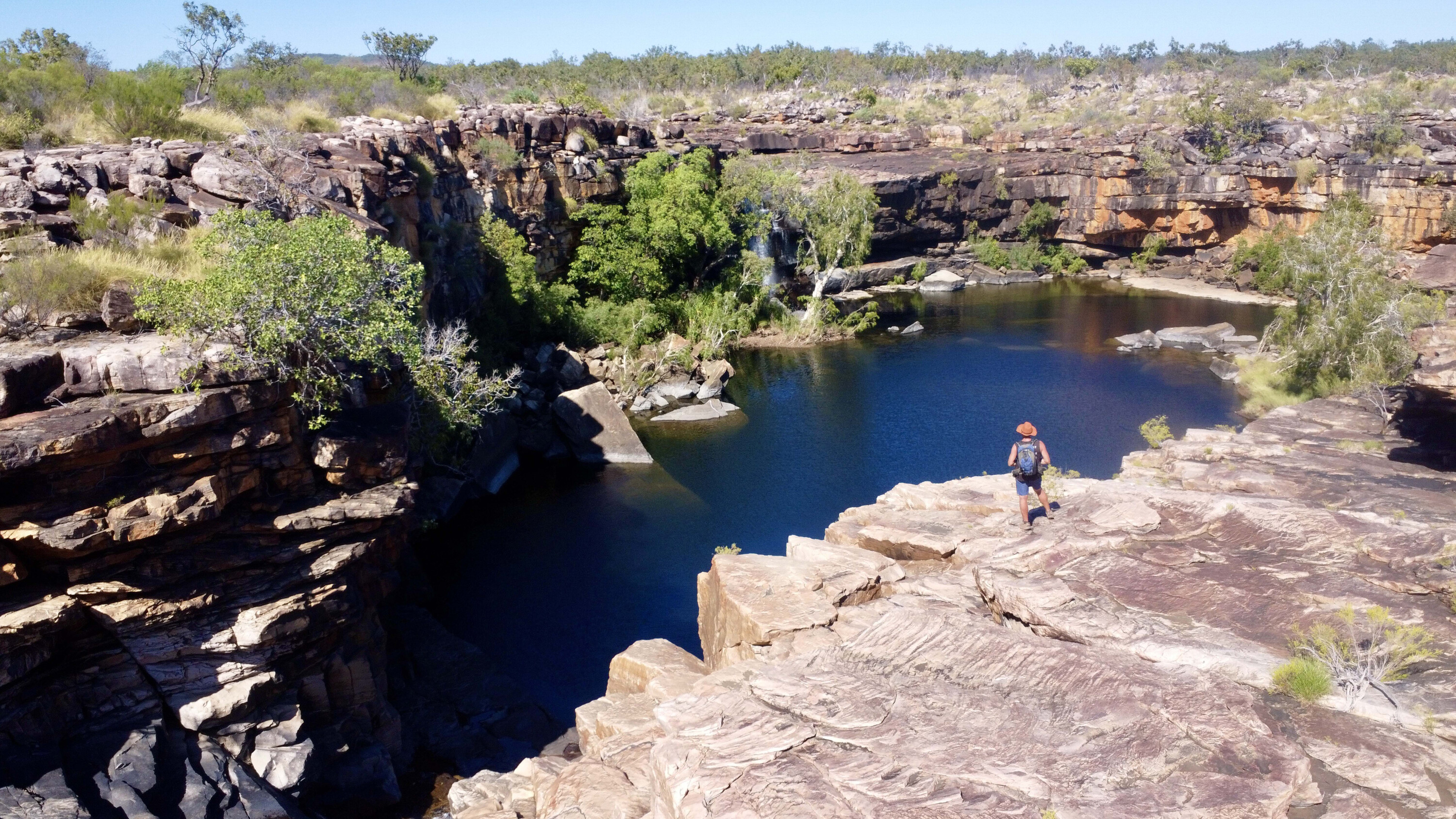
Dropping down the last section to Walsh Point I was happy to discover I was the only camper around, so I had my pick of the camping spots with stunning water views surrounded by old boabs.
Apart from simply reaching this remote and isolated part of WA, my plan was to hunt down a few barra and to enjoy the solitude after enduring the visitor chaos back at Mitchell Falls. The sunsets were spectacular with the beautiful boabs as a backdrop. Crocs and sharks swam past my camp at high tide and I caught several barra up to around 700mm long; enough fish for a week!
With a few fish and plenty of memories under my belt after a week at Walsh Point, I decided it was time to leave and head back out and further north to Kalumburu. It was a 100km drive back to the Gibb River-Kalumburu Road turnoff, and another 110km up to Kalumburu.
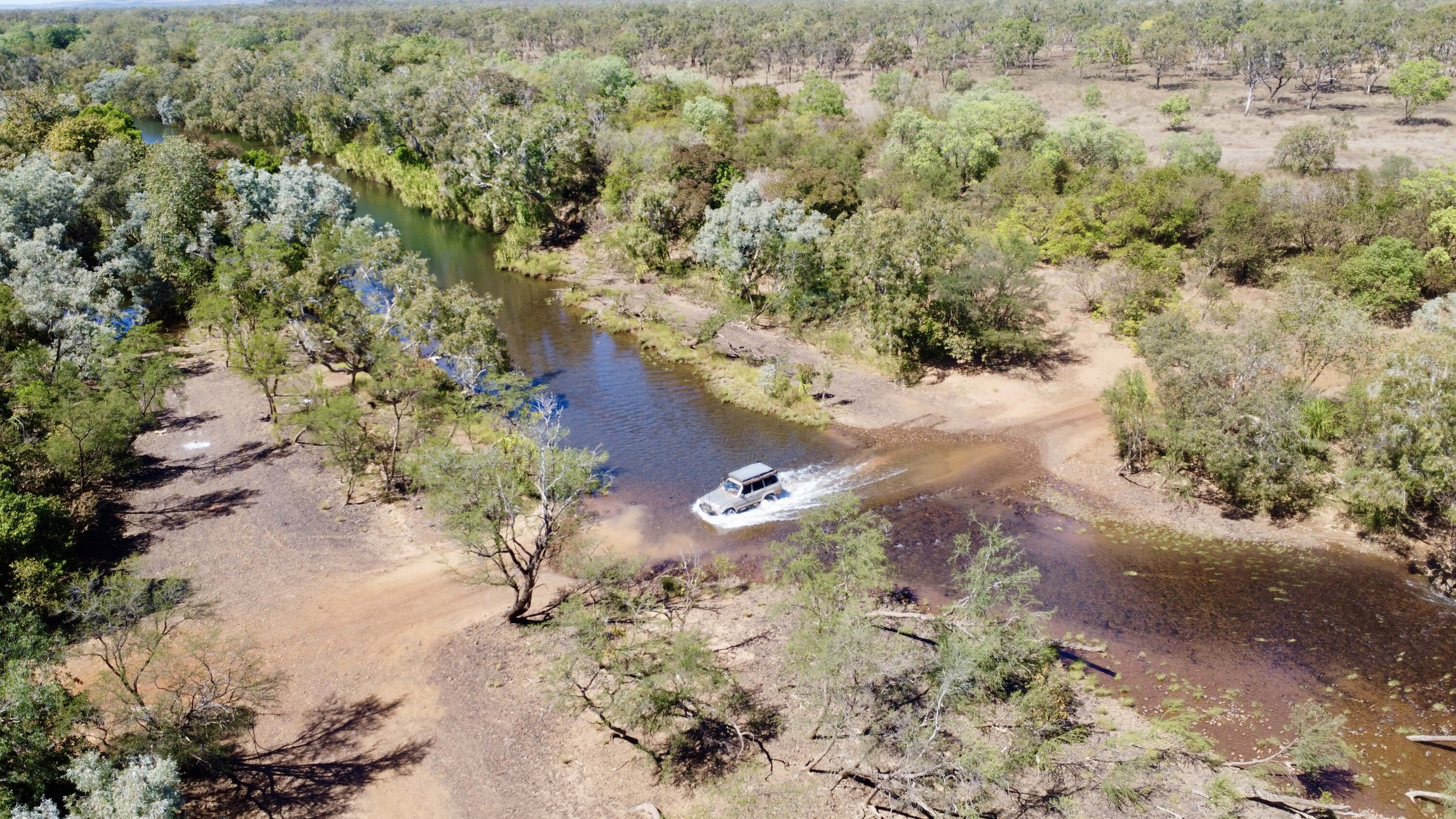
The drive included several water crossings, and there were bird-filled billabongs, amazing views at the top of several ranges, and a diverse range of wildlife along the way. Of course, this is croc country, so there was no way I would stop for a cool dip.
Arriving at Kalumburu my first stop was for fuel, but being short on volunteers there was no fuel for sale when I arrived. There’s a local shop that has a good supply of supermarket items and it’s here that you can get a permit to travel through town and on to the two camping areas further north.
Bear in mind that Kalumburu is a dry town and no alcohol is available, nor can any be consumed in town. The locals are welcoming and happy to help in any way.
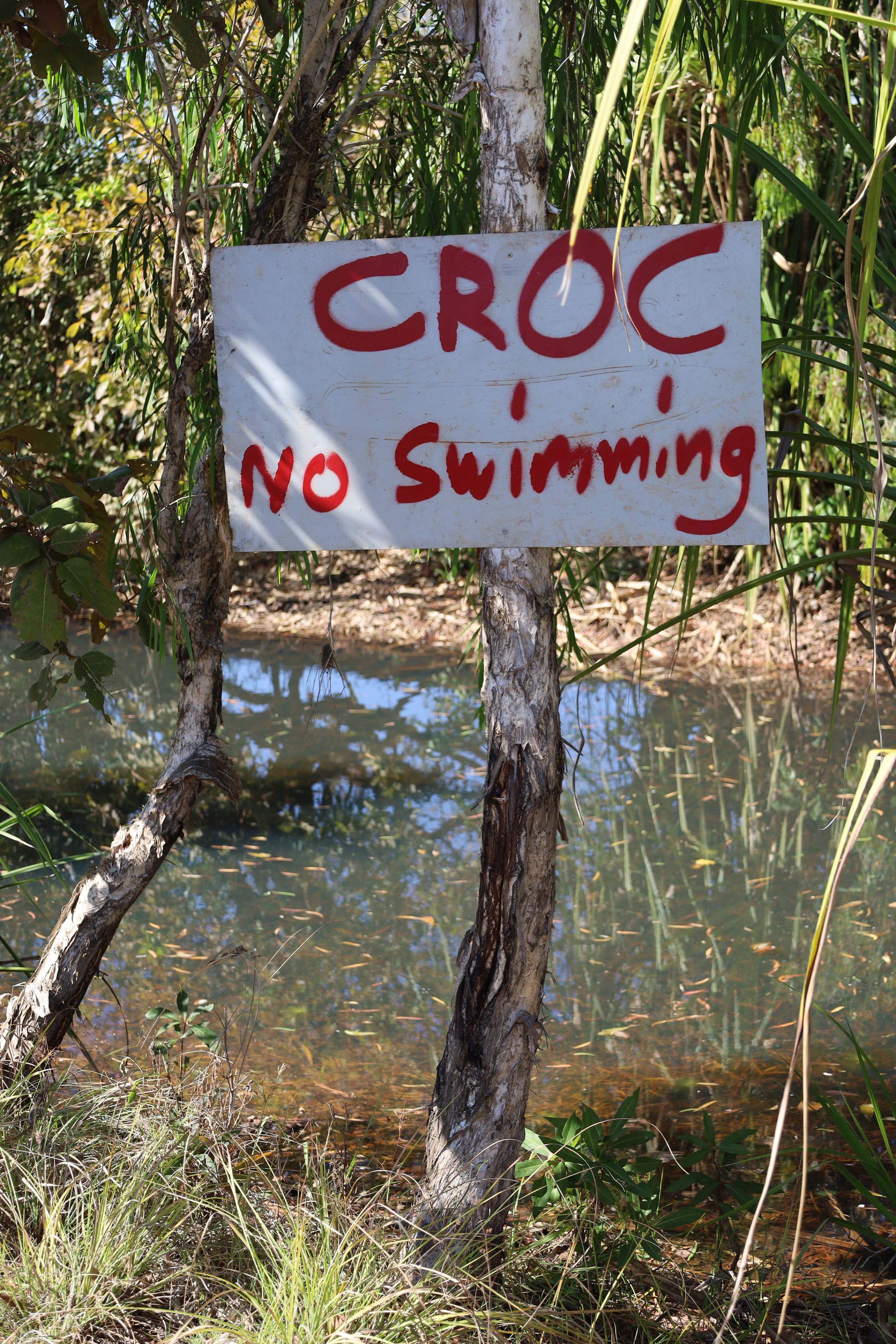
Kalumburu is the most northern settlement in WA and for millenia was home to several aboriginal groups.
This corner of Australia was one of the main points of entry for our first inhabitants and evidence of this, along with trading with Europeans, is highlighted in the rock art scattered throughout the northern Kimberley, especially the Gwion Gwion (Bradshaw) rock paintings.
In 1905 a Catholic mission was set up at Pago at Mission Bay, but was relocated to where Kalumburu is today in 1932, as there is a more reliable water source here. You can visit the crumbling ruins at Pago but need to seek permission in town to go on-country. You can wander around the new stone mission and beautiful grounds, and if you’re lucky the museum may be open, which has an array of artifacts from days gone by.
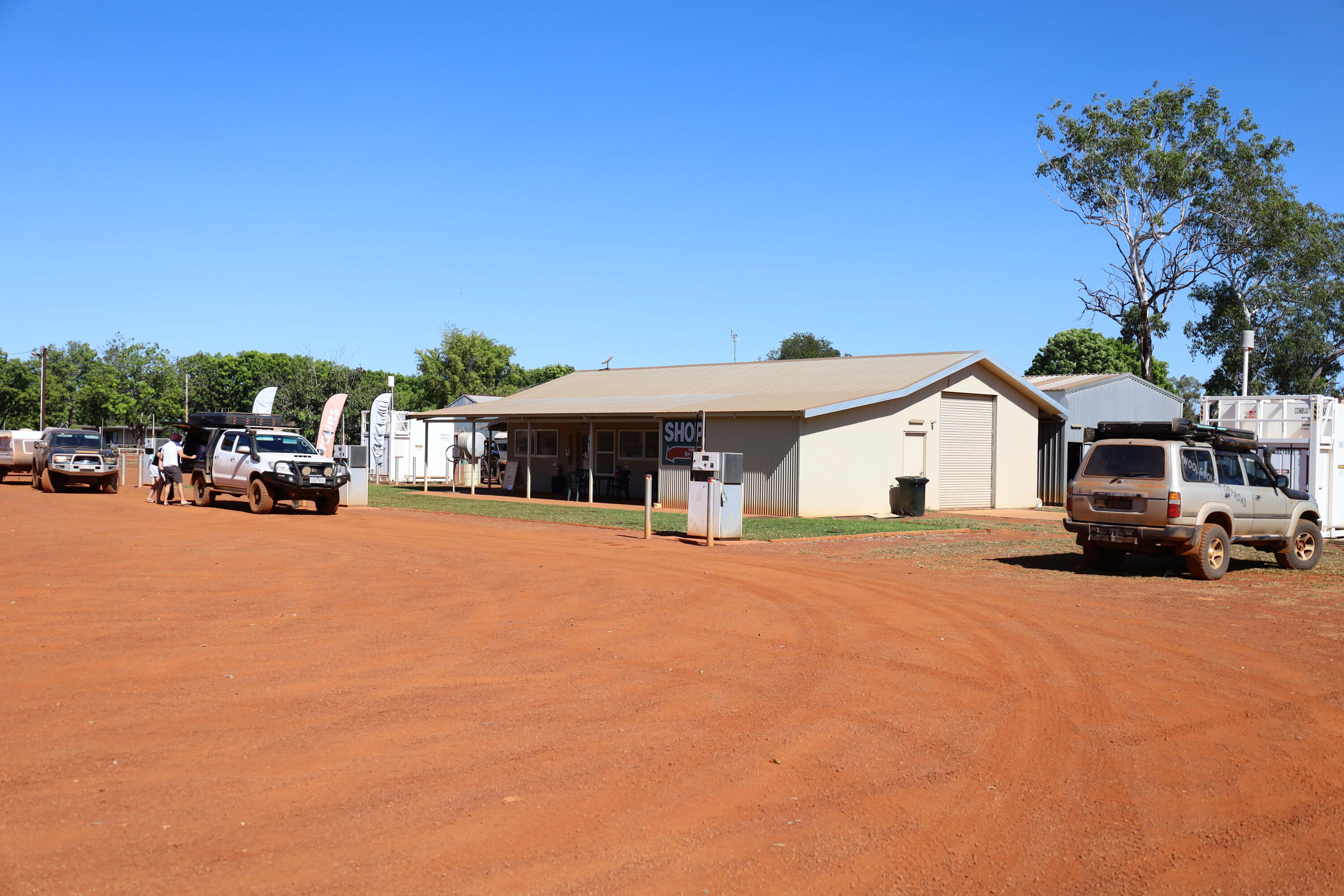
Originally Kalumburu was called the Drysdale River Mission and it played a strategic role in WWII activities, with an army base and radar station.
Unfortunately, in 1943 the Japanese found and bombed the airfield and mission, killing six people in the process. Later on the airstrip was moved further to the northwest, to the Anjo Peninsula. North of the town, remnants of the bombed aircraft can still be found today with parts and gear scattered through the bush. It wasn’t until 1954 that a road path was surveyed and cut in to allow access to the town in the dry season.
After acquiring a permit and stocking up on a few groceries, I headed further north to McGowan Island Beach camping area. There is another camp called Honeymoon Bay but it igets booked out pretty fast.
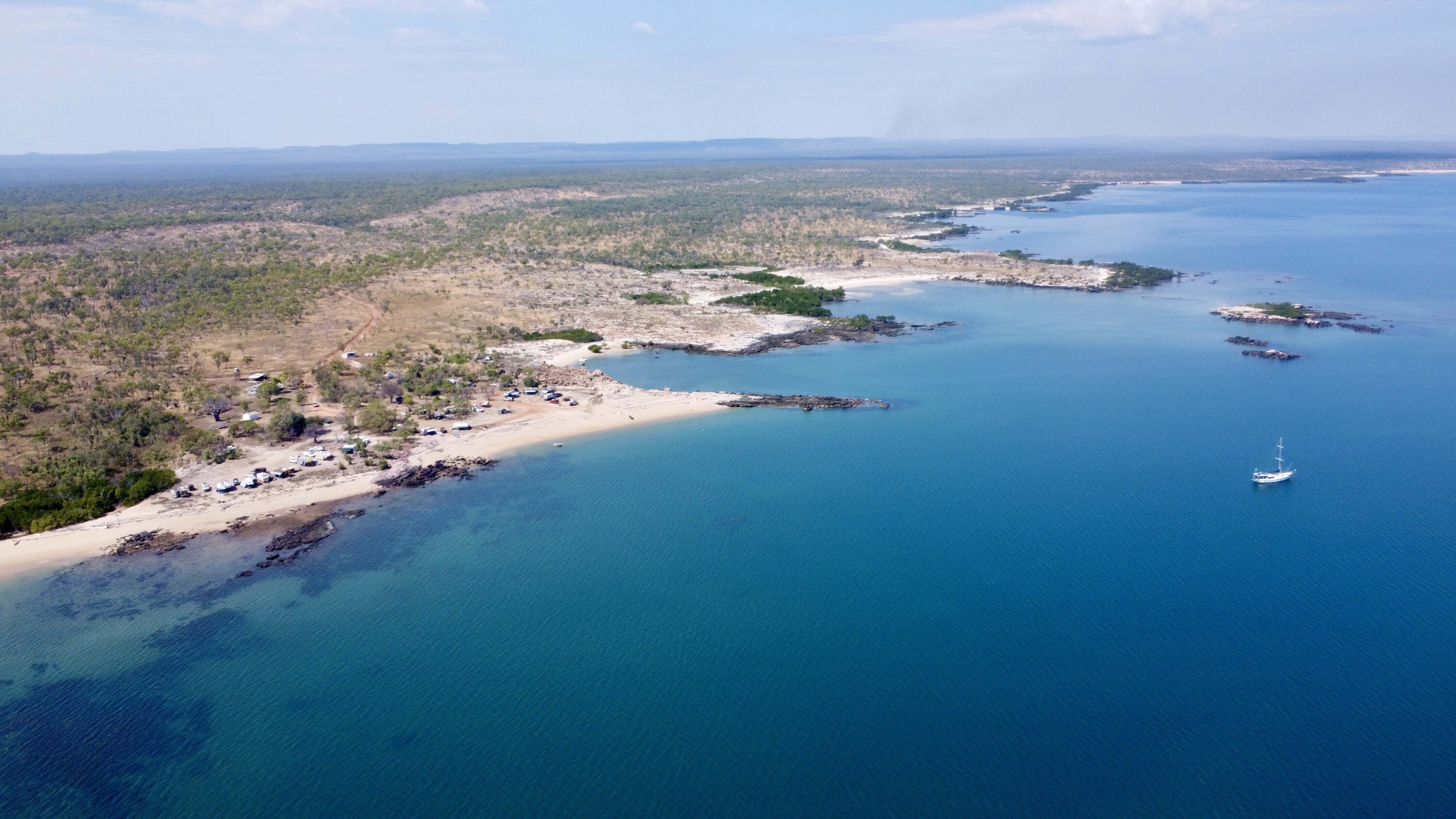
McGowan is tucked down on the coastline looking due west you’re guaranteed a stunning sunset every evening, but being croc country this isn’t a place to swim and frolic in the ocean.
As a precaution to keep the crocs away from campers, the camp hosts have strict rules for discarding fish frames, either several miles out to sea or at an old quarry a mile away. The fishing in the Top End is regarded as some of the best in Australia, and most days there’s never a shortage of fish to be handed around camp.
There’s fresh water and basic laundry facilities at the McGowan camping area, and there’s even a Starlink for campers, and every site offers stunning ocean views.
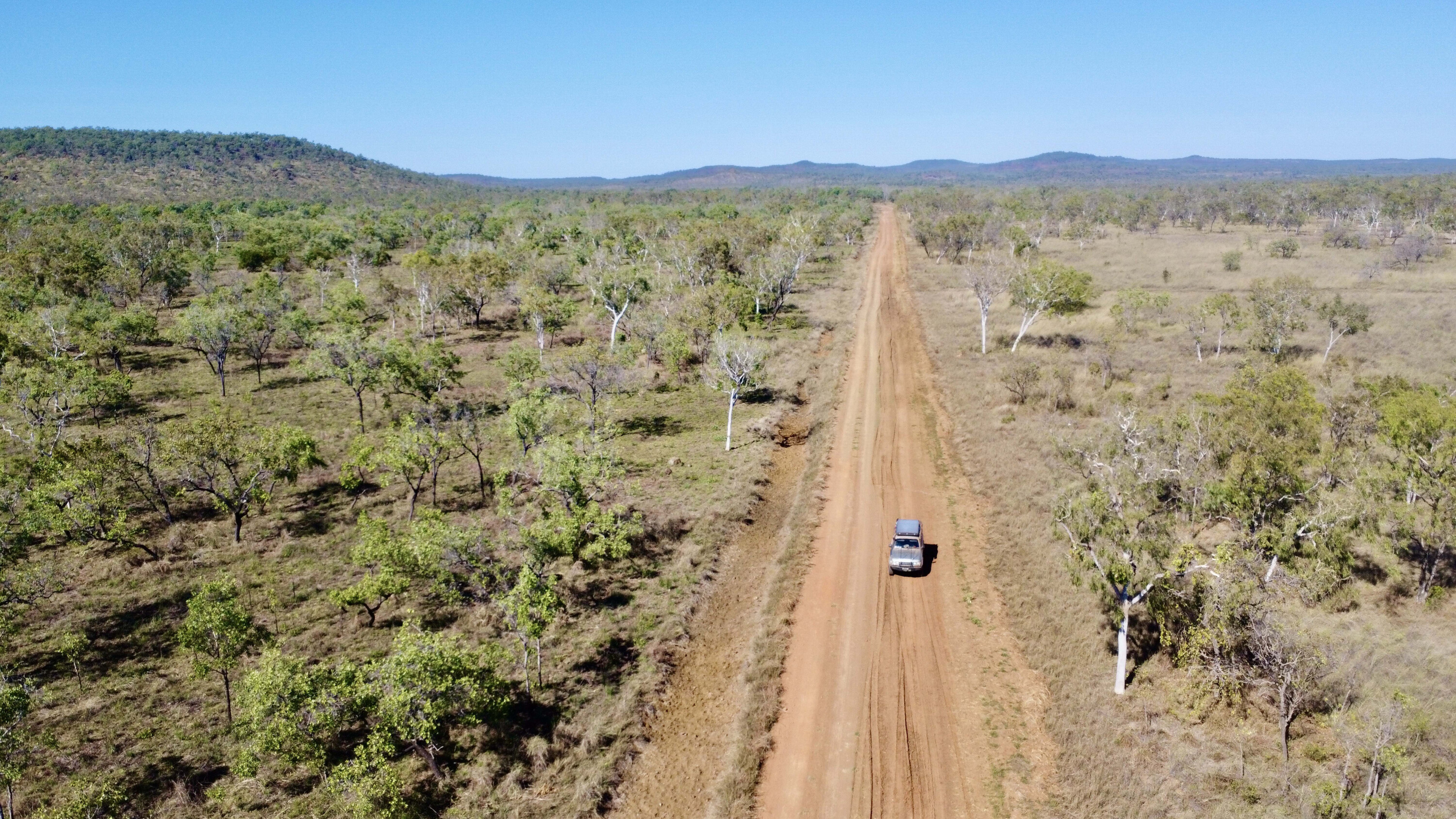
After a week kicking back in this incredible area I pushed on towards Wyndham about 600km away, making sure I timed my drive to sync in with Kalumburu’s fuel bowser open times, and getting just enough diesel to get back out.
The drive out was just as impressive as the drive in, across bauxite-rich flat-top hills that were once joined to the Mitchell Plateau. The landscape here has been broken down and shaped over millions and millions of years, resulting in some amazing rock formations, ancient riverbeds and deep gorges.
This remote part of WA is one place that needs to be experienced at least once in your lifetime.
Essentials
Website
Permits
www.daa.wa.gov.au/land/entry-permits/about-entry-permits/ [↗️]
Planning
www.australiasnorthwest.com/kimberley-and-pilbara-holiday-planner/ [↗️]
Maps
Hema The Kimberly (hemamaps.com/products/the-kimberley-map [↗️]; Hema The Kimberley Atlas and Guide (https://hemamaps.com/products/kimberley-atlas-guide [↗️])
With the need to run fridges, lights, radios, compressors and charge a bevy of digital gadgets, dual isolated batteries have been a fixture of touring vehicles for decades.
While old school systems with monster lead-acid batteries and clunky solenoids got the job done, they were seriously heavy, inefficient and prone to failure.
Things have come a long way in recent years, with the price of lithium batteries and solar panels dropping enough to make them affordable even for weekend warriors. Renogy has been in the solar game for more than 14 years, continually evolving its vehicle-based lineup to suit customer requirements and changes in technology. This experience shows through in the company’s latest all-in-one DC-DC charger with MPPT solar charging.
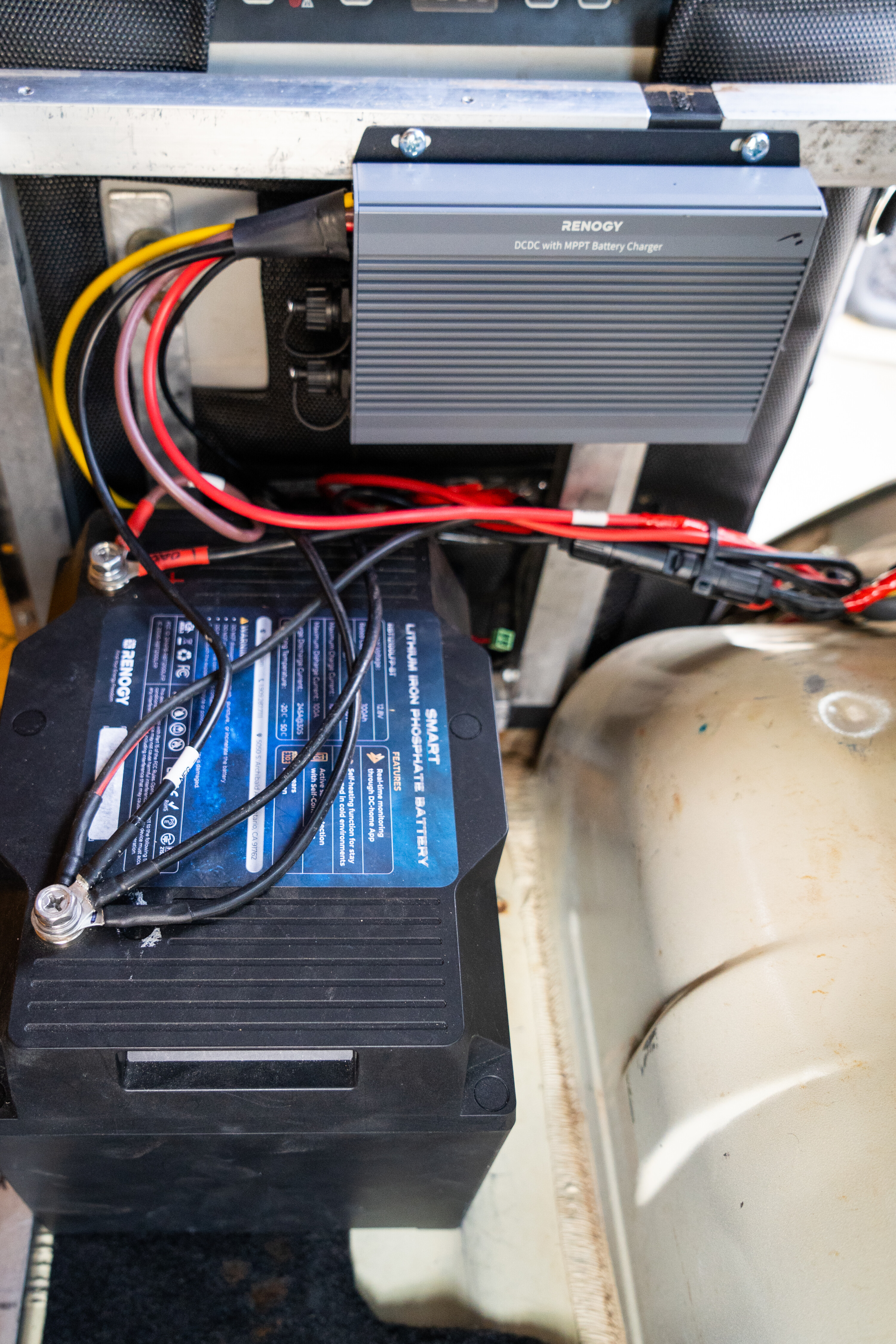
This compact and durable unit combines the functions of a DC-DC charger, a solar charge controller and a battery isolator to ensure a vehicle won’t be stranded with a depleted starter battery. On sunny days solar charging is prioritised to reduce load on the vehicle alternator, and typically charging is split 50/50 between the alternator and solar.
After incorporating customer feedback, this newest all-in-one charger has the option to automatically disable solar charging at a configurable threshold to draw the entire 50 Amps from the alternator. This ensures auxiliary batteries are charged as quickly as possible, even on days with very little sunshine. Of course, the addition of a solar panel is optional, and the unit will function perfectly fine as a DC-DC charger without one.
Another well thought out feature is trickle charging the starter battery from the solar panel once the auxiliary batteries are at full capacity. This ensures the starter battery remains completely topped up even after days or weeks in camp.
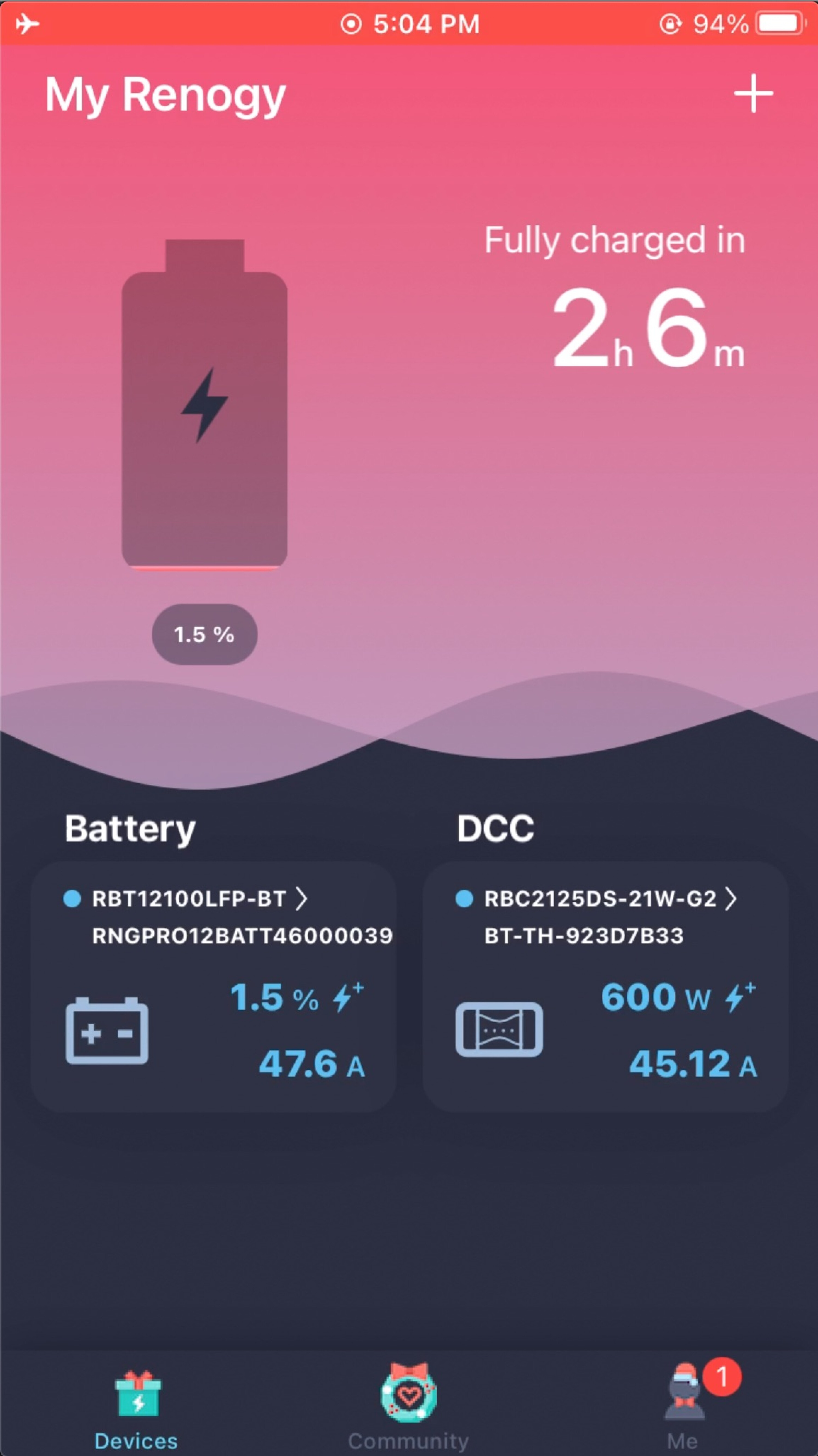
With an IP67 rating, the compact Renogy charger can be mounted anywhere inside or outside the vehicle, including under the bonnet. Wiring could not be simpler, and Bluetooth connectivity provides fast and easy real-time monitoring, showing energy flow in and out of the system. The unit supports a variety of battery types including Gel, AGM, Flooded and Lithium.
It took me less than 10 minutes to wire in the charger, and in my testing the silent unit simply gets the job done without any fuss or fanfare. Best of all, it doesn’t break the bank.
Pricing: $449.99 (RRP)
INEOS will debut a number of prototypes at this year’s Goodwood Festival of Speed, hinting at future 4×4 products we might one day see navigating Australian trails.
The Grenadier prototypes on display at Goodwood include:
- Portal-axled Grenadier Quartermaster and Station Wagon
- Short-bed Quartermaster pick-up
- V8-powered Station Wagon
- Eight-seater Safari conversion
- FIA-approved Buzz Grenadier rally car
“As our new brand campaign states, the Grenadier is Built For More, and over the next few years we will be showing just what that means,” Calder added.
Portal-axled Grenadier Quartermaster and Station Wagon
INEOS has partnered with LeTech – a German vehicle modification company – to install portal axles and offset wheel hubs inside larger off-road tyres, in turn raising the chassis and increasing ground clearance to 514mm (+250mm) and wading depth to a massive 1050mm (+250mm).
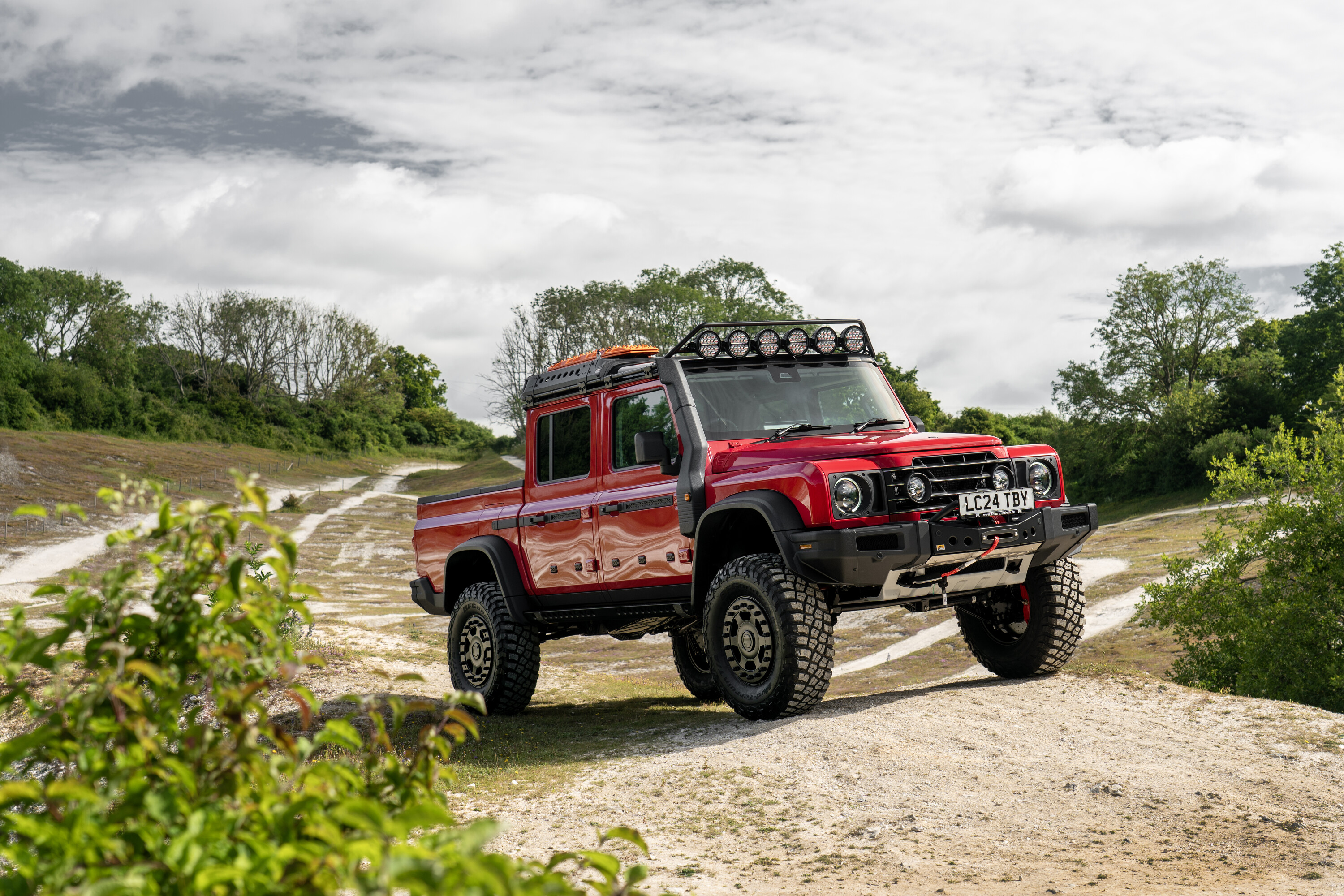
Short-bed Grenadier Quartermaster
Dubbed Shortermaster, the short-bed, double-cab ute has had its wheelcase significantly reduced, so it now measures 2922mm, which is 305mm (12 inches) shorter than the Quartermaster – a vehicle slated for an Aussie arrival toward the end of 2024 or early in 2025. To maximise tray space, the rear seats have been shifted forward.
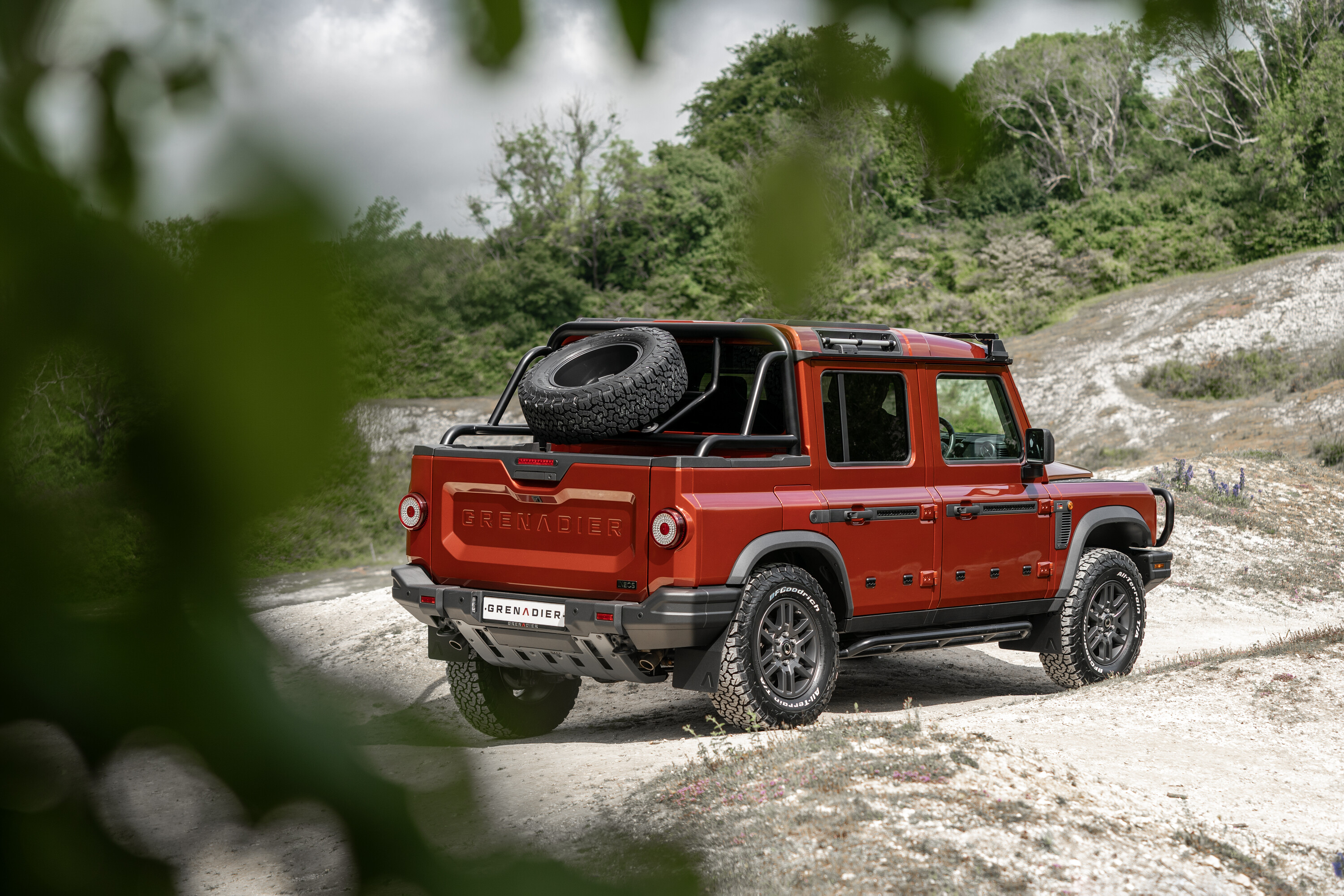
V8-powered Grenadier Station Wagon
The V8 prototype jettisoned the Grenadier’s BMW 3.0-litre straight-six petrol engine and strapped in a 317kW/625Nm GM 6.2-litre V8 petrol donk. The complete powertrain transplant also required the re-engineering of the engine mounts, electrics, water and oil cooling, exhaust manifold and rear silencer, transmission bearings and heat shields, as well a revised centre console. INEOS said the build was a one-off project to give apprentices at Magna – an INEOS partner – hands-on experience with the Grenadier.
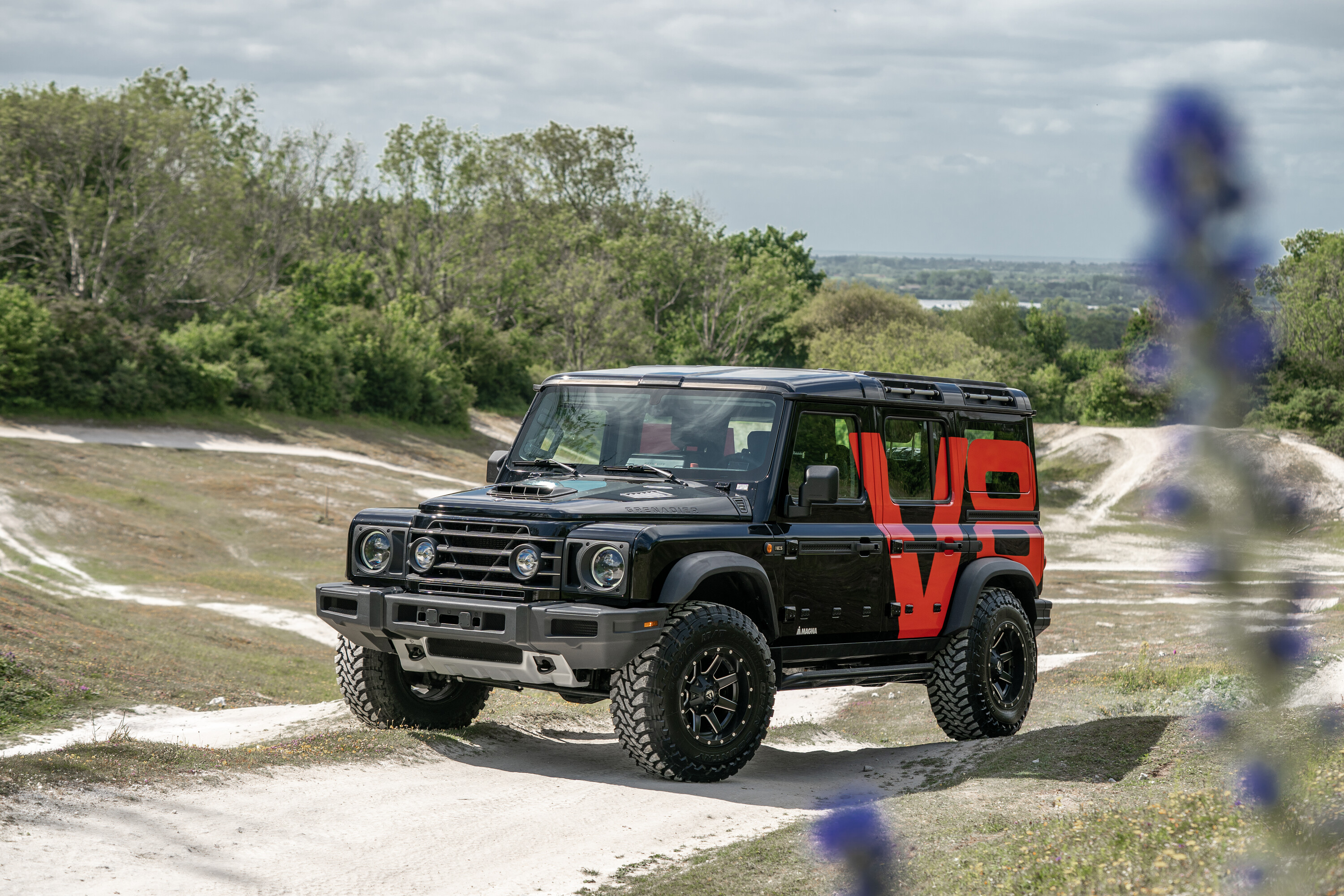
Grenadier Safari
Converted by Botswana-based INEOS Kavango, the Safari has been custom-made to traverse long distances on challenging safari terrain. To this end, the eight-seater features, “specialist modifications for the conservation, safari, anti-poaching, veterinary, primary healthcare and film production sectors”. Key mods include three tiered rows of seats with excellent visibility; bespoke front and side protection bars; and alloy wheels inside off-road tyres.
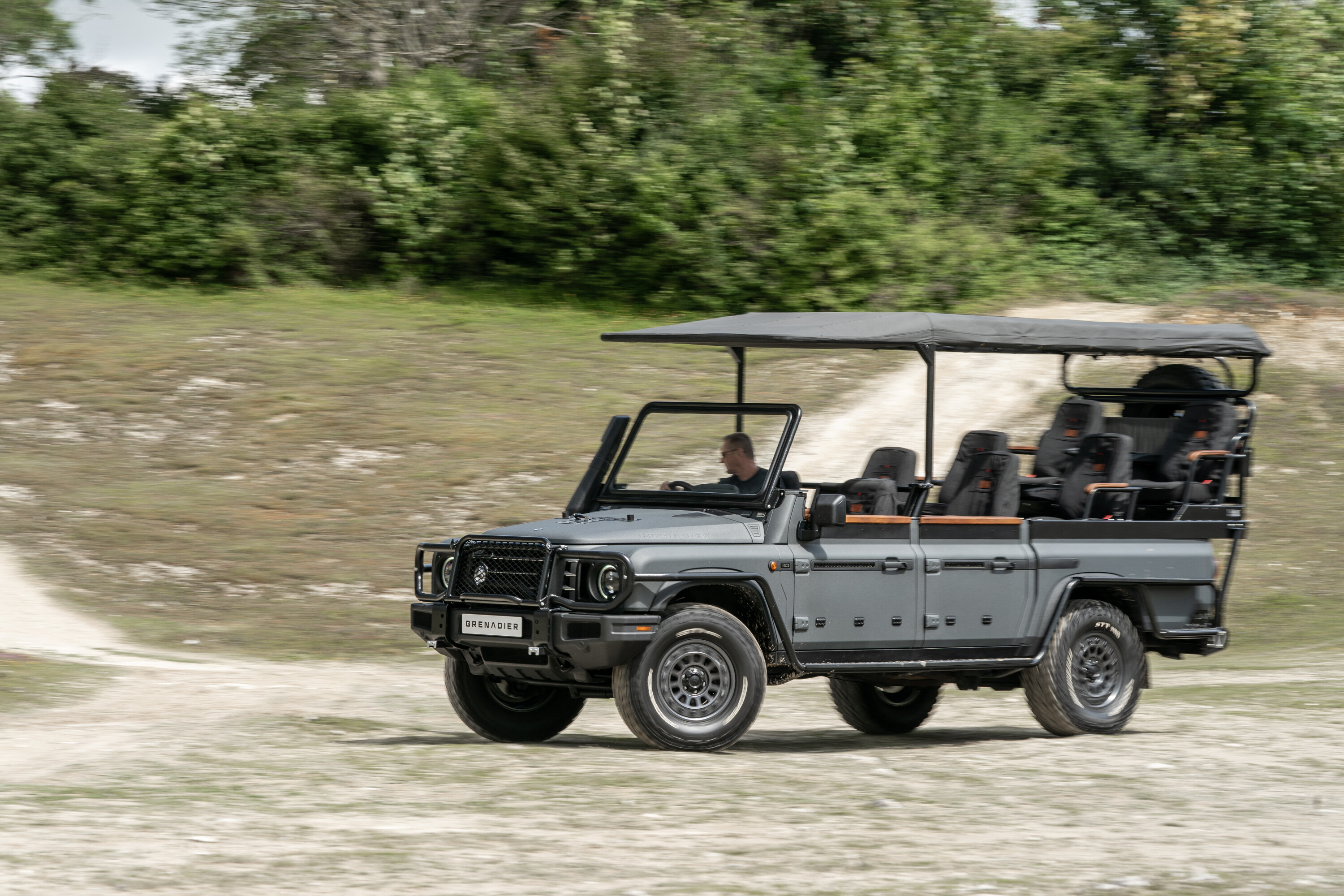
Buzz Grenadier rally car
Featuring a tickled version of BMW’s 260kW/550Nm 3.0-litre straight-six petrol engine – with outputs up by 50kW and 100Nm – the FIA-compliant Grenadier has been modified by Buzz Special Vehicles to compete at the 2025 World Rally-Raid Championship. Racing mods include a sports exhaust system; R53 race suspension; uprated brakes; bespoke alloy wheels; a stripped-out cabin with full internal roll-cage; racing bucket seats; carbon interior door panels; and roof vents.
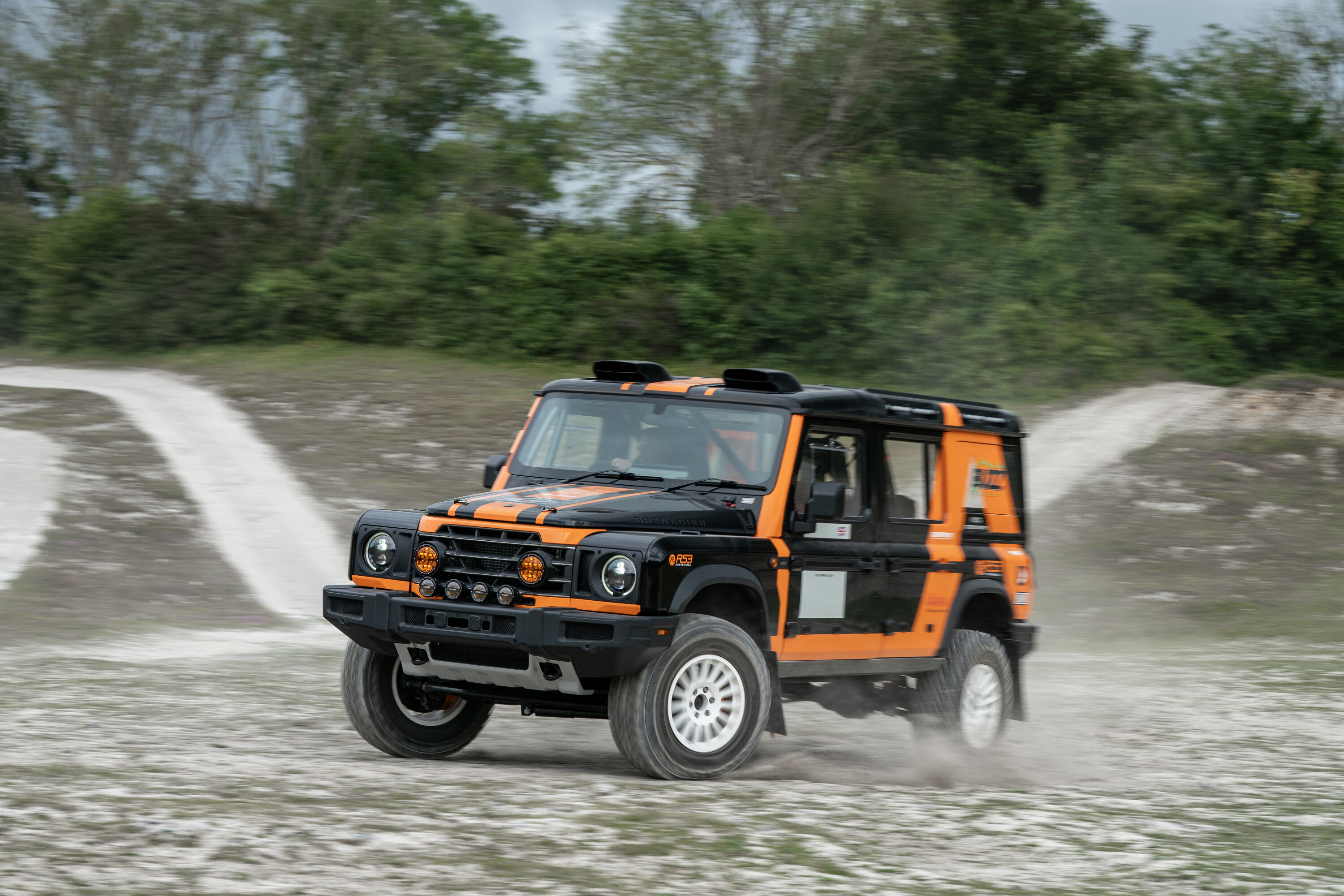
The INEOS Grenadier officially launched in Australia at the end of 2023, with the Quartermaster ute version slated for arrival toward the end of 2024 or early in 2025.
The 2024 Goodwood Festival of Speed is taking place from July 11 to 14 in West Sussex, England.
The next-gen Prado is soon to land in Australia; but until then, let’s focus on the outgoing 150 model, a four-wheel-drive SUV in four grades – GX, GXL, VX and top-spec Kakadu.
*If buyers are interested in this outgoing model, the below information is still relevant for second-hand purchases – as mentioned, it’s no longer available to purchase new.
All Prado 150 models are powered by a 150kW/500Nm 2.8-litre turbo-diesel engine that runs through a six-speed automatic transmission. Buyers can get a total of 150 litres of onboard fuel if they opt for the 63-litre sub tank option. Combine this with its 3000kg towing capacity, and the Prado is a viable long-distance hauler.
The 4995mm-long Prado features a full-time 4WD system, which on GXL, VX and Kakadu variants is equipped with a rear diff lock. In addition to a premium, feature-laden interior, the Kakadu is the only model to get a five-speed crawl control function. Only the GX is available with both five and seven seats, while the GXL, VX and Kakadu are all seven-seaters.
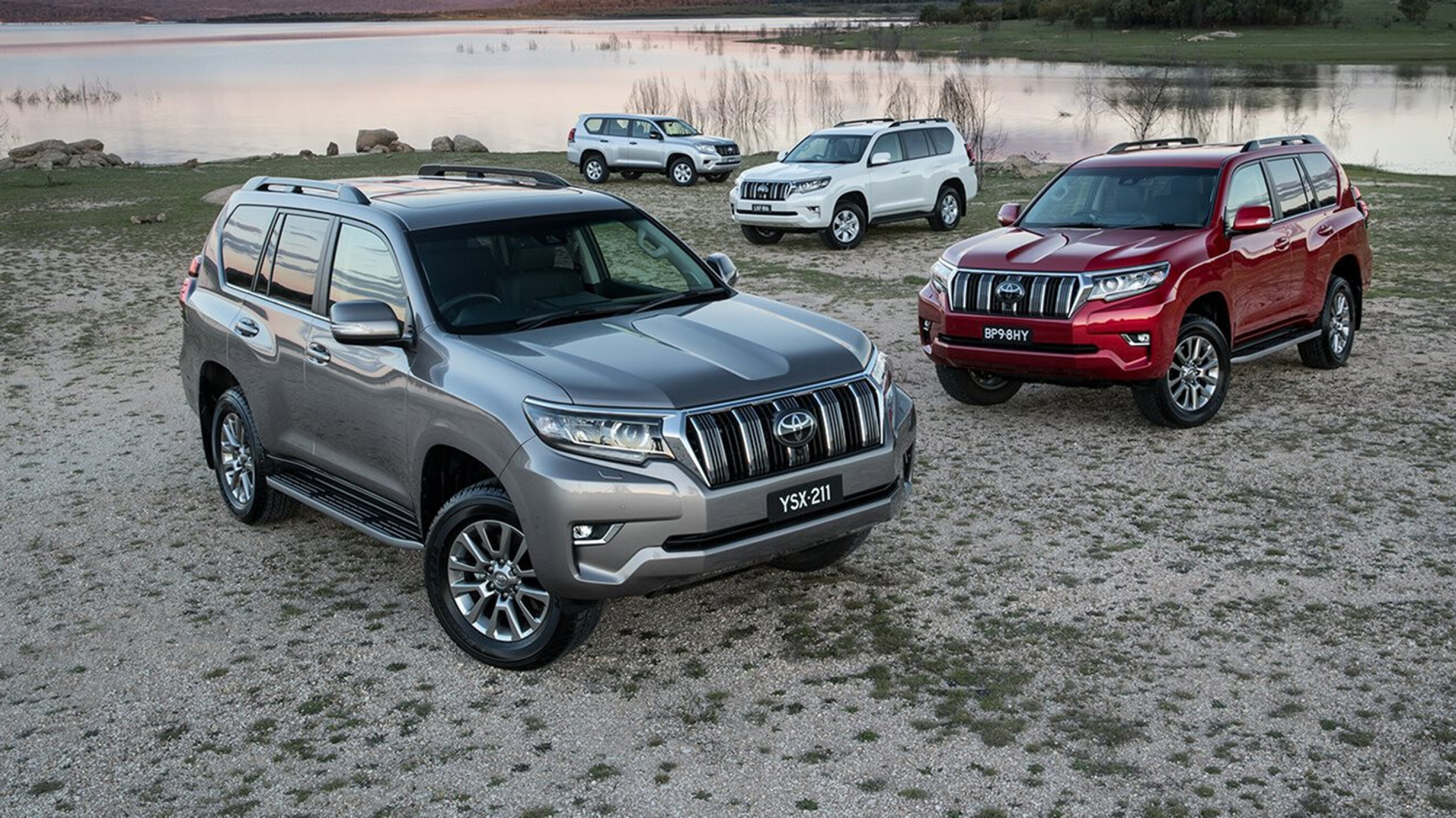
The 150 Series Prado was released in 2009, essentially a reskin of the 120 Series which debuted in 2002. So it’s really a 20-year-old platform, but in that time there have been the reskin, spec changes, new engines introduced, new variants, the introduction and discontinuation of a three-door version, the loss of the V6 petrol engine and manual gearboxes, and plenty of other rolling changes.
2024 Toyota LandCruiser Prado 150 range review
Everything you need to know about the final iteration of the current Prado.
JUMP AHEAD
- Pricing
- What body styles are available for the Toyota Prado 150?
- What features are standard in every Toyota Prado 150?
- What key features do I get if I spend more?
- How safe is the Toyota Prado 150?
- How comfortable and practical is the Toyota Prado 150?
- How much boot space does the Toyota Prado 150 offer?
- I like driving – will I enjoy this car?
- Which Toyota Prado 150 engine uses the least fuel?
- What is the Toyota Prado 150’s towing capacity?
- How long is the warranty and what are the Toyota Prado 150’s servicing costs?
- Which version of the Toyota Prado 150 do we recommend?
- What are the Toyota Prado 150’s key rivals?
Pricing
With the next-gen model imminent, the outgoing Prado 150 is no longer available to purchase. If you want one, you’ll need to browse the second-hand marketplaces.
*The below pricing list is indicative of what the respective models were listed at before they were removed from sale, early in 2024.
| 2024 Toyota LandCruiser Prado pricing | |
|---|---|
| GX | $60,830 |
| GX 7-seat | $63,380 |
| GXL | $67,530 |
| GXL flat tailgate | $67,530 |
| GXL premium interior | $71,000 |
| GXL premium interior with flat tailgate | $71,000 |
| VX: | $76,348 |
| VX flat tailgate | $76,348 |
| Kakadu | $86,998 |
| Kakadu flat tailgate | $86,998 |
| Prices exclude on-road costs | |
What body styles are available for the Toyota Prado?
The Toyota Prado is available as a five-door wagon only. All but one version has seven seats. The exception is the least costly, the GX, which offers a five-seat option.
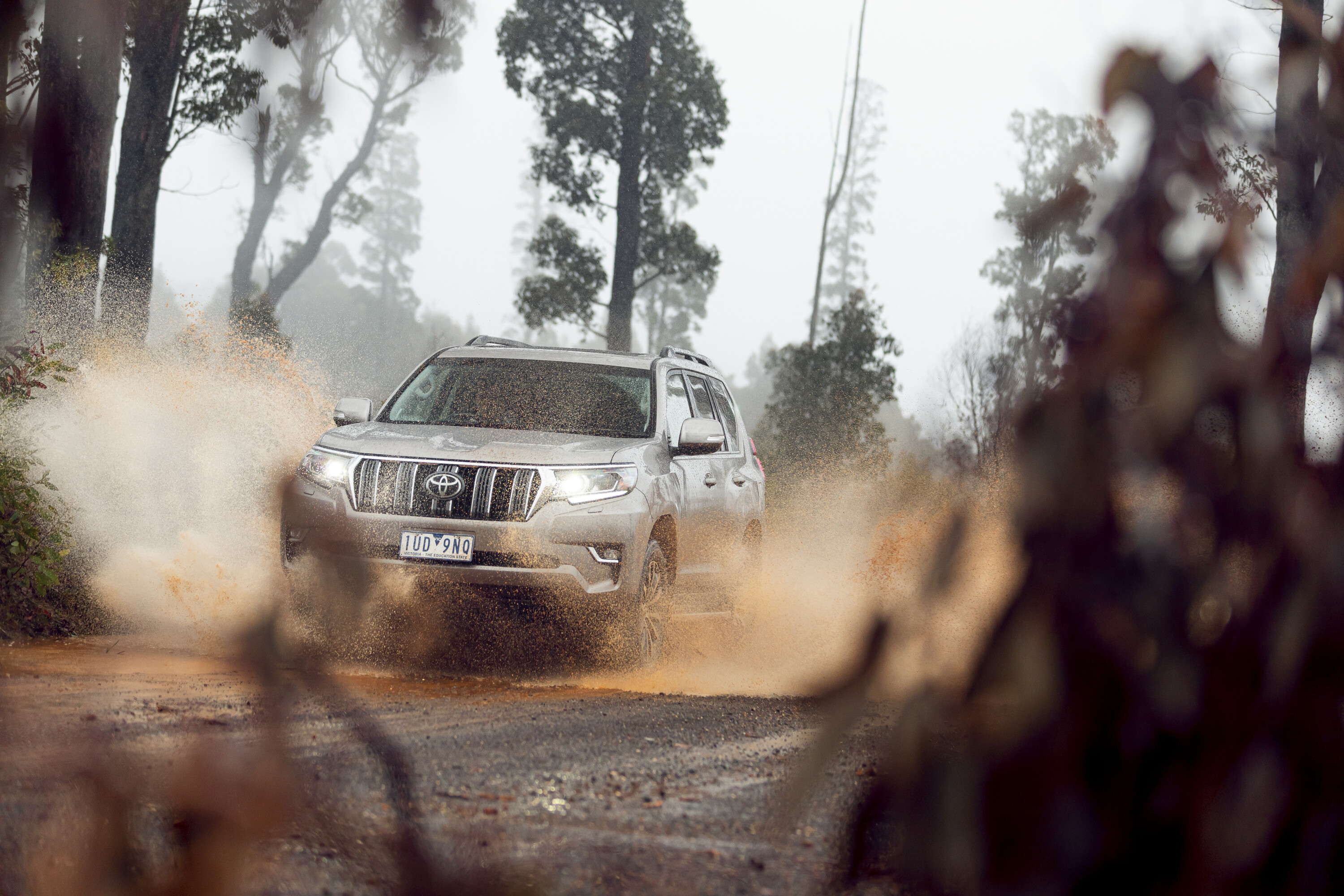
What features are standard in every Toyota Prado 150?
The features listed below are standard in the entry-level model and will appear in higher-grade models, unless replaced by more premium equivalent features.
| 2024 Toyota LandCruiser Prado standard features | |
|---|---|
| 17-inch alloy wheels | Full-size spare wheel |
| 40:20:40 split sliding second-row seats | Halogen headlamps with LED Daytime Running Lamps |
| 50:50 split fold-flat third-row seats (seven-seat option) | Heated, electrically retractable side mirrors |
| 7 airbags | Hill descent control |
| 9 speakers | Hill-start assist |
| 9.0-inch colour touchscreen display with Apple CarPlay and Android Auto | Immobiliser |
| Adptive cruise control (all speed) | Lane departure warning with brake to steer |
| Air-conditioned cool box | Manual air-conditioning |
| Analogue tachometer and speedometer with central 4.2-inch digital display | Manual headlamp levelling |
| Anti-lock Braking System | MP3 connectivity and AM/FM tuner with USB input |
| Auto emergency braking with pedestrian and daytime cyclist detection | Rain-sensing wipers |
| Blind-spot monitoring | Rear Cross Traffic Alert |
| Bluetooth connectivity | Reversing camera |
| Cargo blind | Rubber floor mats |
| Chrome grille finish | Satellite navigation |
| Diesel particulate filter (forced burn off) switch | Smart entry and start system |
| Driver and front passenger seat back map pockets | Speed sign recognition |
| Electronic stability control and traction control | Trailer sway control |
| Front and rear mudguards | Urethane steering wheel with audio and telephone controls |
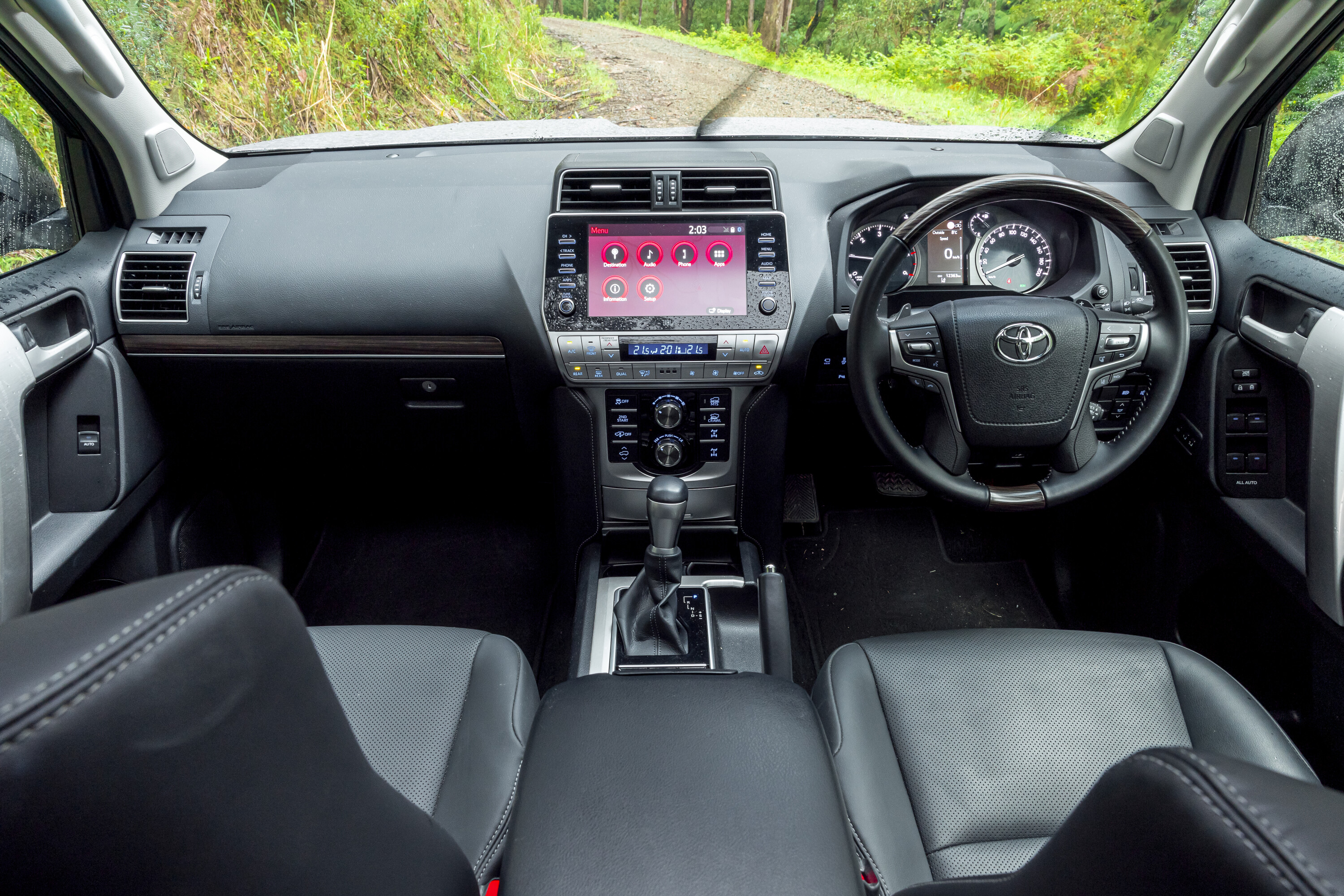
What key features do I get if I spend more?
The base model GX is very basic by modern standards and comes with cloth seats, halogen headlights, 17-inch wheels and a urethane steering wheel.
All Prados get a 9.0-inch central touchscreen display with Apple CarPlay and Android Auto. A six-speed automatic transmission is standard across the range.
The GXL is the most popular grade and for good reason, offering a generous standard equipment list for the price. The GXL can be had with the “premium interior” which gives nicer leather accents – little bits of leather here and there including on the seats – although the interior is not fully leather.
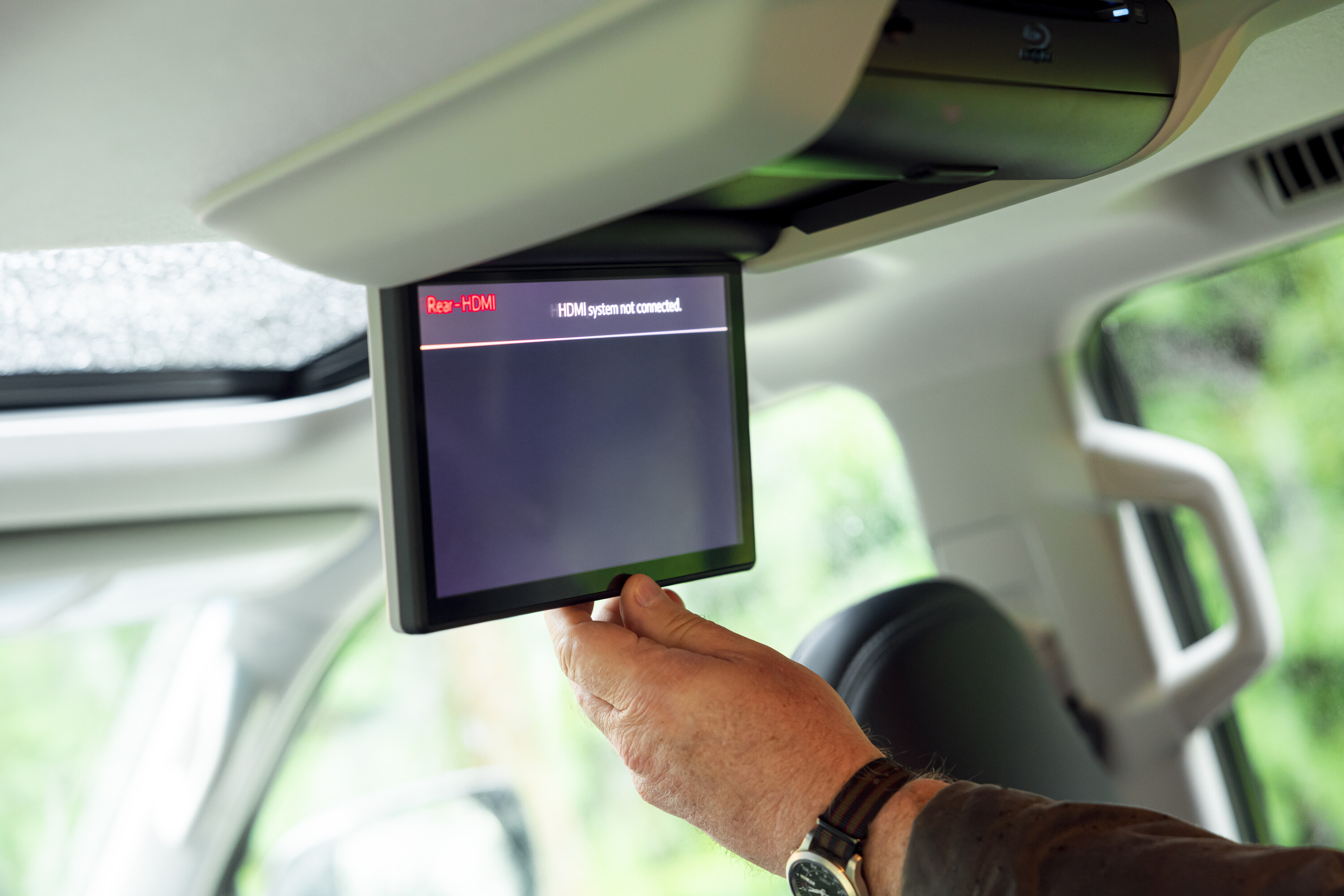
From there, the VX and the Kakadu are for spoiling yourself – the Kakadu especially.
The Kakadu also comes with a rear-seat entertainment system that lets the kids, or adults, watch movies in the back from a ceiling-mounted screen, using Bluetooth headsets.
All Prados use the same powertrain so you don’t get more grunt if you spend more. With a platform that is near-on two decades old, the Prado is well-proven and has had its bugs ironed out. There are also more accessories available for it than you could ever need, so there’s plenty of kit out there to make it yours.
The GXL also brings
| 2024 Toyota LandCruiser Prado GXL features | |
|---|---|
| Bi-LED headlamps with LED Daytime Running Lamps | Premium steering wheel with audio and telephone controls |
| LED fog lamps | Sun visor lamp |
| Auto-levelling headlamps | Three-zone climate control air conditioning |
| Privacy glass | Rear parking sensors |
| Roof rails | Rear differential lock switch |
Paying more again for a VX gets you those features plus:
| 2024 Toyota LandCruiser Prado VX features | |
|---|---|
| 19-inch alloy wheels | Auto-dimming rear view mirror |
| Dusk-sensing headlamps | Front parking sensors |
| Illuminated side steps | Panoramic and Multi-Terrain Monitor |
| Electric tilt and telescopic steering wheel adjustment | Refrigerated cool box |
| Heated and ventilated front seats with heated second-row outer seats | Digital radio |
| Leather accented seats with power adjustable driver and front passenger seat | 14-speaker JBL premium audio system |
| Carpet mats | |
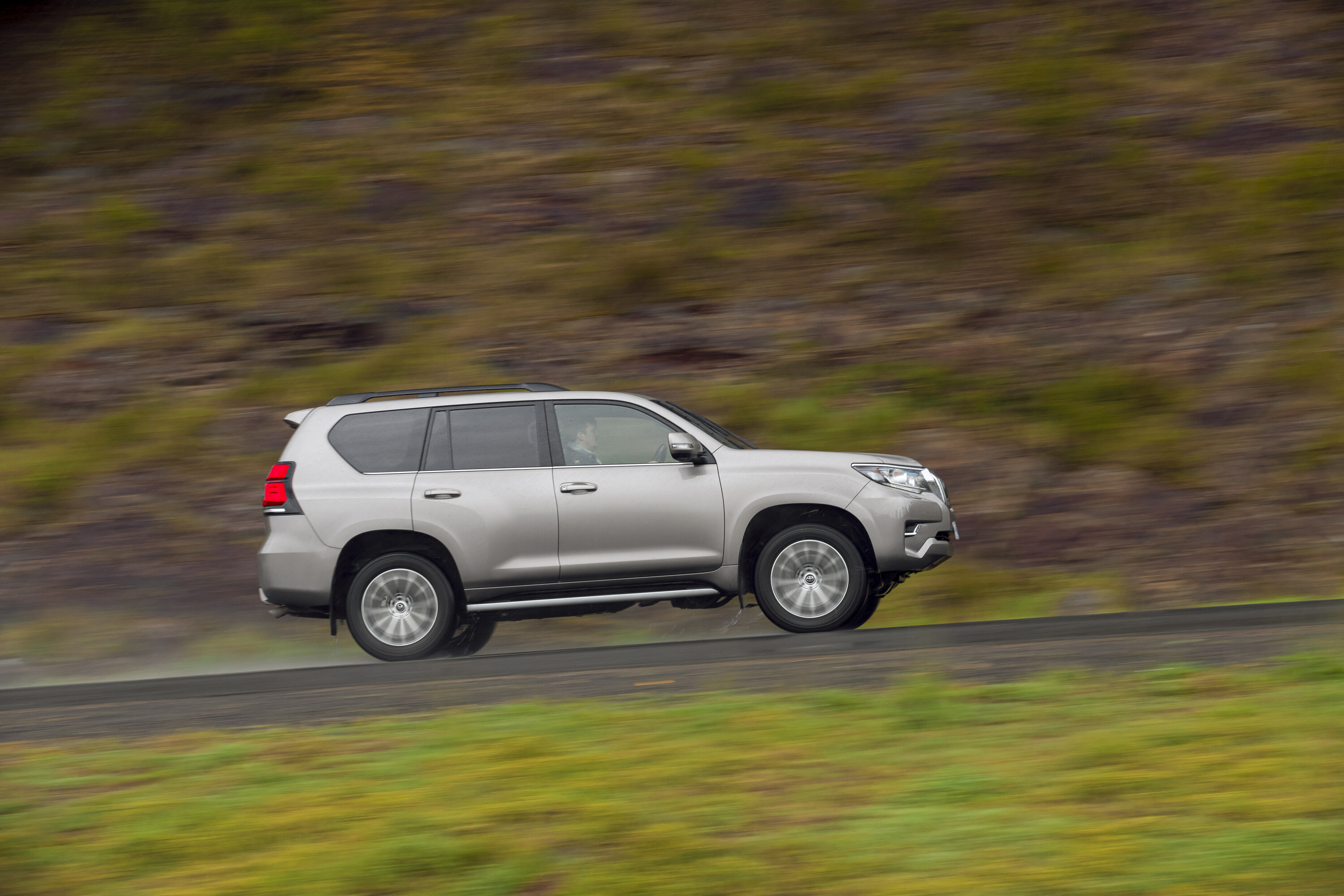
The Kakadu is the most expensive version and in addition to the VX offers:
| 2024 Toyota LandCruiser Prado Kakadu features | |
|---|---|
| Tilt and slide moonroof | 5-speed crawl control |
| Power fold down third-row seats | Adaptive Variable Suspension system. Replaces its rear coil springs with adjustable airbags to give a bit of height adjustment for off-road use |
| Premium woodgrain-look steering wheel with paddle shifters, Multi Information Display and telephone controls | Multi-Terrain Select system |
| Driveru2019s seat memory (two positions) | Kinetic Dynamic Suspension System. Reduces body-roll in corners and improves handling by hydraulically adjusting the anti-roll bars |
| Drive mode select | Blu-ray rear seat entertainment system with 3 wireless headsets |
How safe is the Toyota Prado 150?
The Toyota Prado 150 is a very safe vehicle. Toyota has done well to fit all Prado grades with an impressive standard safety suite including autonomous emergency braking (AEB), a reversing camera and blind-spot monitors.
Standard across the range, the AEB can detect pedestrians day and night and cyclists during the day only. There’s also lane-keep assist and standard adaptive cruise control.
There are seven airbags in total no matter what Prado you get, from GX to Kakadu. You have to pay extra for some safety-enhancing features such as dusk-sensing headlamps (VX and Kakadu only), front parking sensors (VX and Kakadu only) and rear parking sensors (not available on GX).
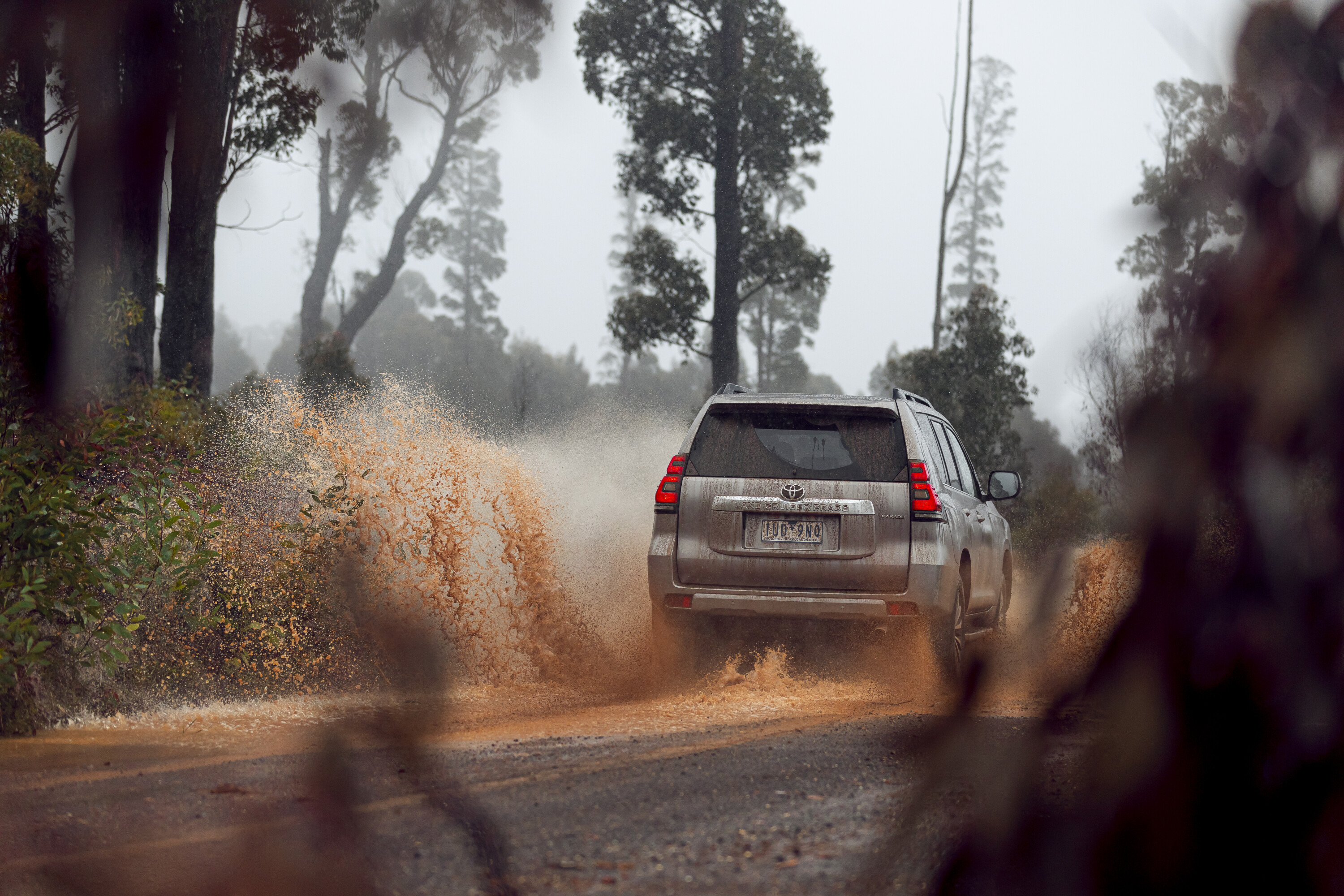
The Prado 150 also misses out on some cutting-edge safety features such as a driver attention monitor (which protects against fatigue), while the AEB isn’t rated for higher, interurban speeds.
Unlike some rivals, however, the Prado’s curtain airbags protect third-row occupants as well.
The Australasian New Car Assessment Program (ANCAP) has not rated the 2024 Toyota Prado 150. Previously it scored five stars when crash-tested in 2015, with the rating expiring on January 1, 2023. Toyota decided not to renew its rating, instead waiting for the next-generation model that is due in the second half of 2024.
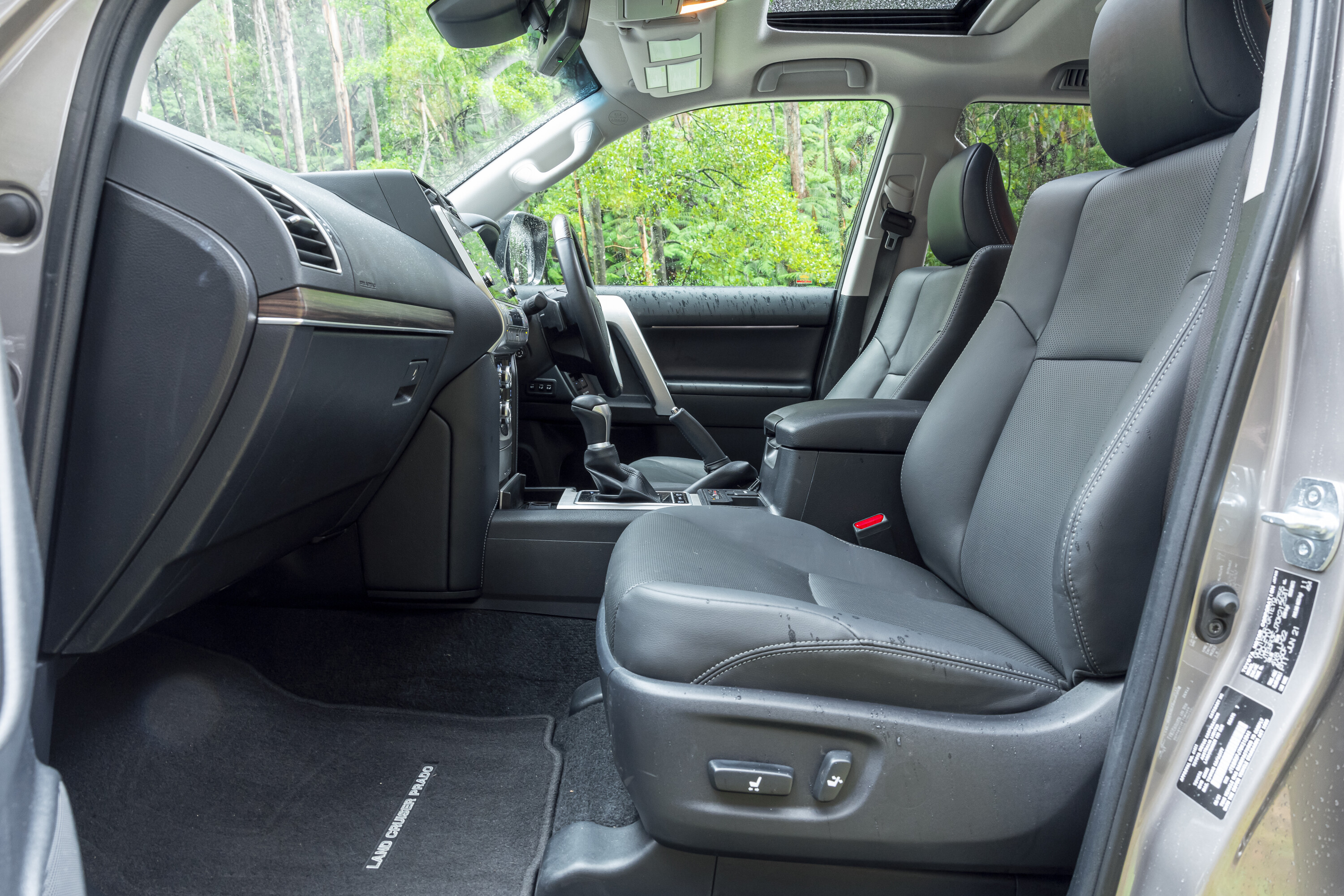
How comfortable and practical is the Toyota Prado 150?
The Toyota Prado is a very comfortable and practical car. Obviously, as you go up the grades (and pay more) you get more comfort and practicality.
Seats in the Prado are supportive and comfortable, and nice places to be for even the longest trip. Compliant, soft-riding suspension and low road noise levels on all surfaces, even gravel roads, make this a car that can eat the kilometres without fatiguing the driver or passengers.
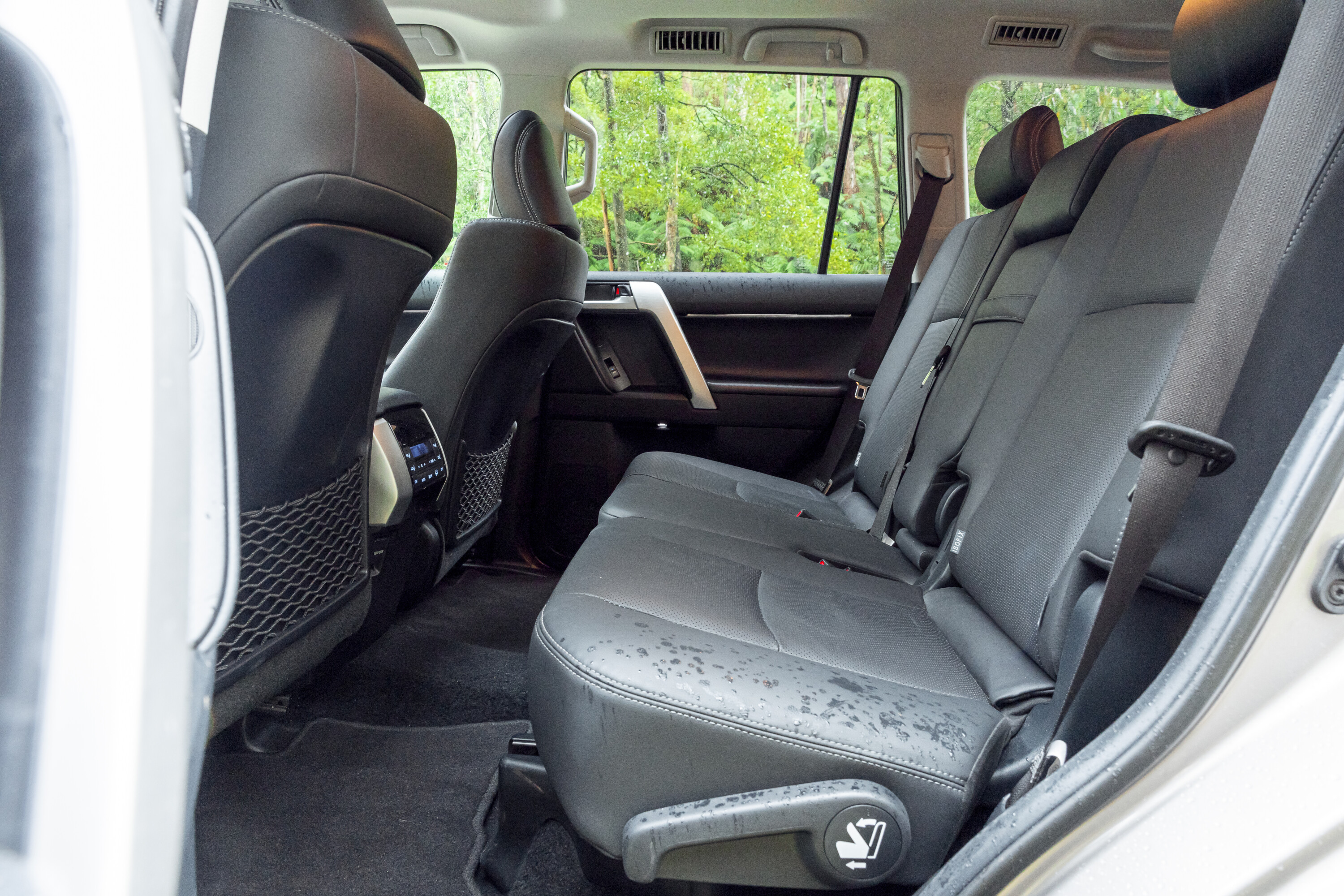
Tech-head buyers might find the Prado a little lacking compared to rivals with its lack of wireless phone charger and head-up display, while its 9.0-inch touchscreen is relatively small and the instruments are still semi-analogue.
Its third-row seats are tricky to access and best left to the kids, while second-row passengers enjoy plenty of headroom and legroom but the narrower cabin makes shoulder space tight for three across.
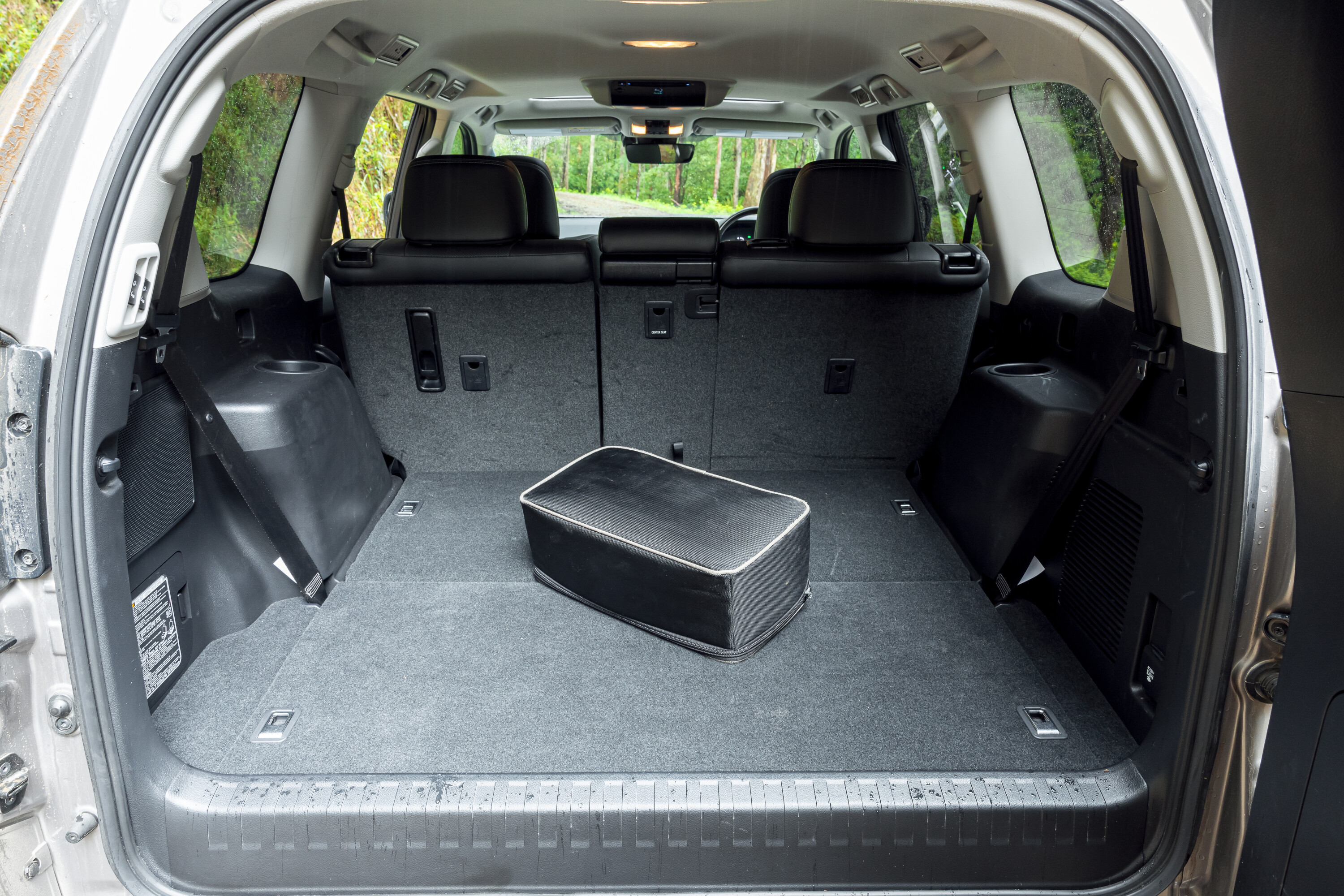
How much boot space does the Toyota Prado 150 offer?
The Toyota Prado offers 620 litres of boot space. For seven-seat models, that shrinks to 120 litres with the third row upright. With both the second and third rows folded, boot space is 1833 litres.
While large, the Prado’s boot is considerably less capacious than something like a Mazda CX-9, which would surprise some.
The single rear door opens sideways and can be heavy to handle when the vehicle is on a slope.
GXL, VX and Kakadu versions with the optional under-body mounted spare tyre model are more convenient here, as the rear door is lighter and the rear glass opens separately. However, relocating the spare wheel reduces fuel capacity to 87 litres as it deletes the 63-litre sub tank.
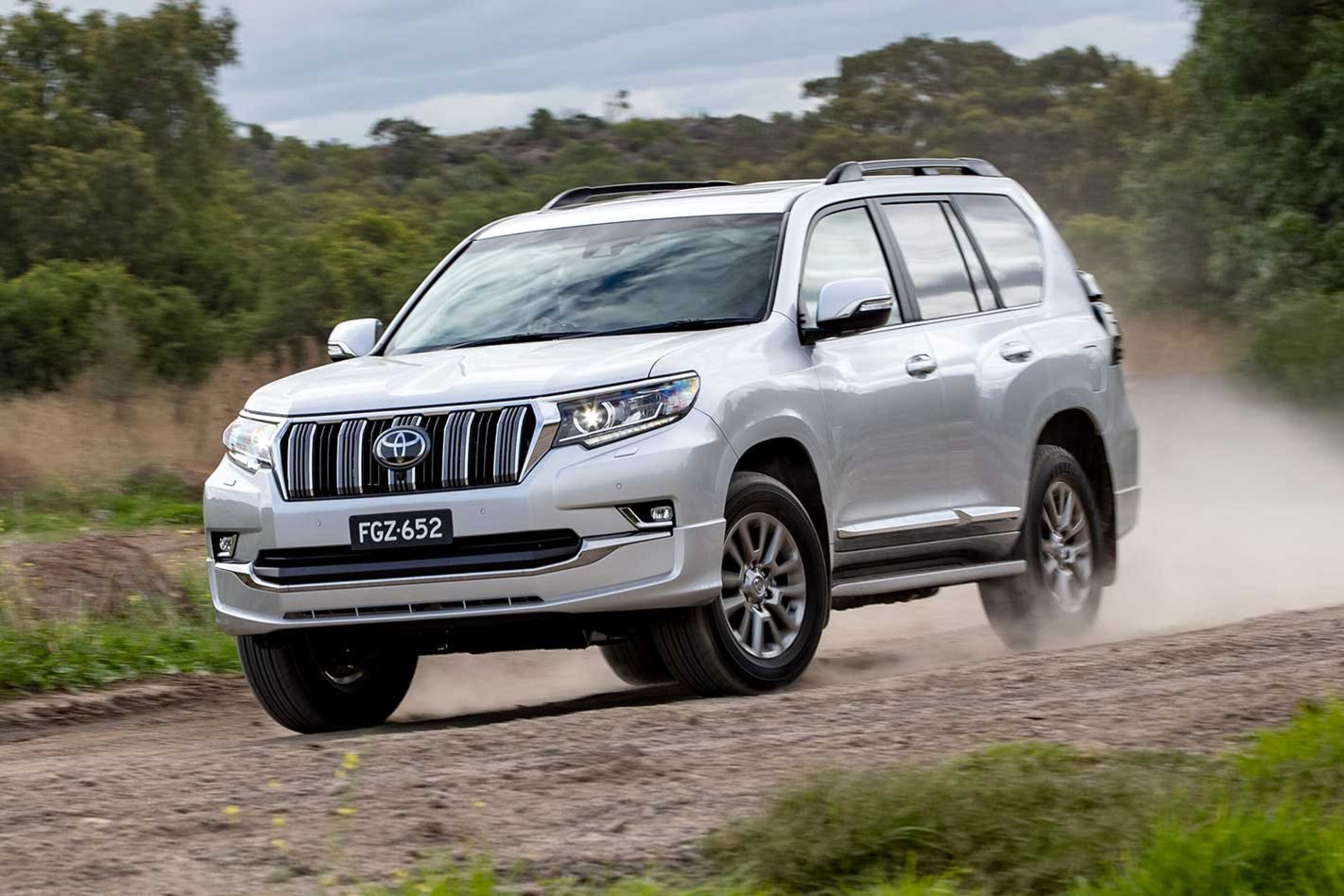
I like driving, will I enjoy this car?
The Prado 150 is an easy and enjoyable large SUV to drive – if a bit ‘old’.
Driving in the Prado, you are well-insulated from driveline noise, and the power and torque are well-matched to the vehicle. The engine is flexible in its wide torque range but does get noisy when you put your foot down for overtaking or steep climbs.
The six-speed transmission does a good job in day-to-day driving and the ratios are well-spaced, but it’s not as smooth as the 10-speed in the Ford Everest. While we appreciate a smart transmission with grade logic that shifts back when you might want some engine braking, the Prado’s Aisin transmission can be a bit aggressive in this regard, making it annoying in the suburbs when it shifts back and revs high going down hills.
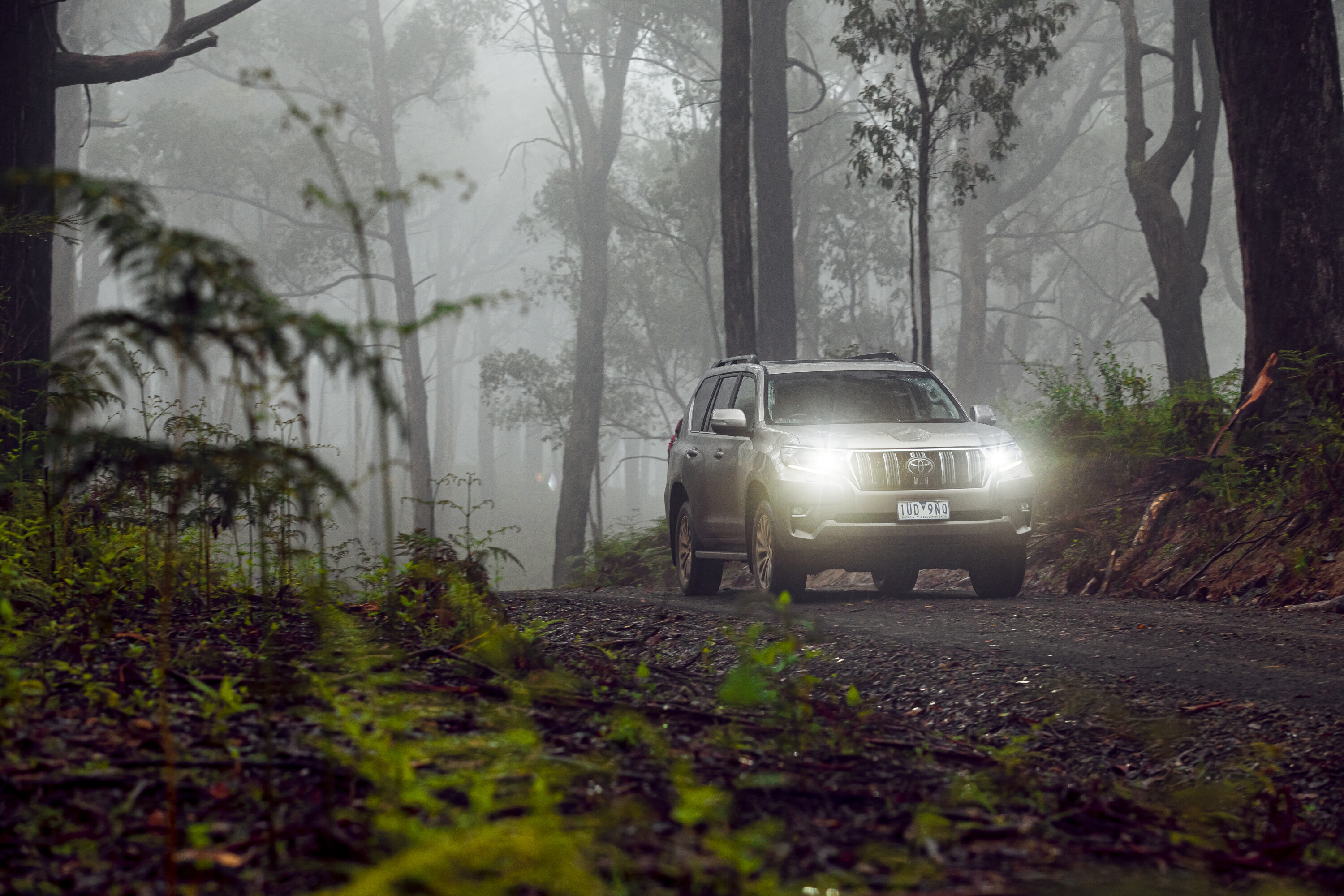
Like the Prado as a whole, the drivetrain shows its age but, like so many older things, there’s nothing really wrong with the way it gets the job done.
Readers who are used to driving cars like Volkswagens and BMWs will find the Prado a bit ‘old school’ to drive, however. It’s heavy, slow to accelerate and lumbering in corners – there are much more advanced options available when it comes to on-road performance. The Kakadu’s KDSS suspension improves handling but it’s still not a patch on something like a Volkswagen Touareg 170TDI.
The Kakadu is the only model in the Prado range to replace its rear coil springs with adjustable airbags to give a bit of height adjustment for off-road use. We find these to be detrimental to the ride quality from the rear end, which doesn’t deal as well with sharp bumps as other Prados. This alone would steer us toward the VX grade that is still well-specified but keeps its coil springs.
Overall, though, the Prado is nice and easy to drive.
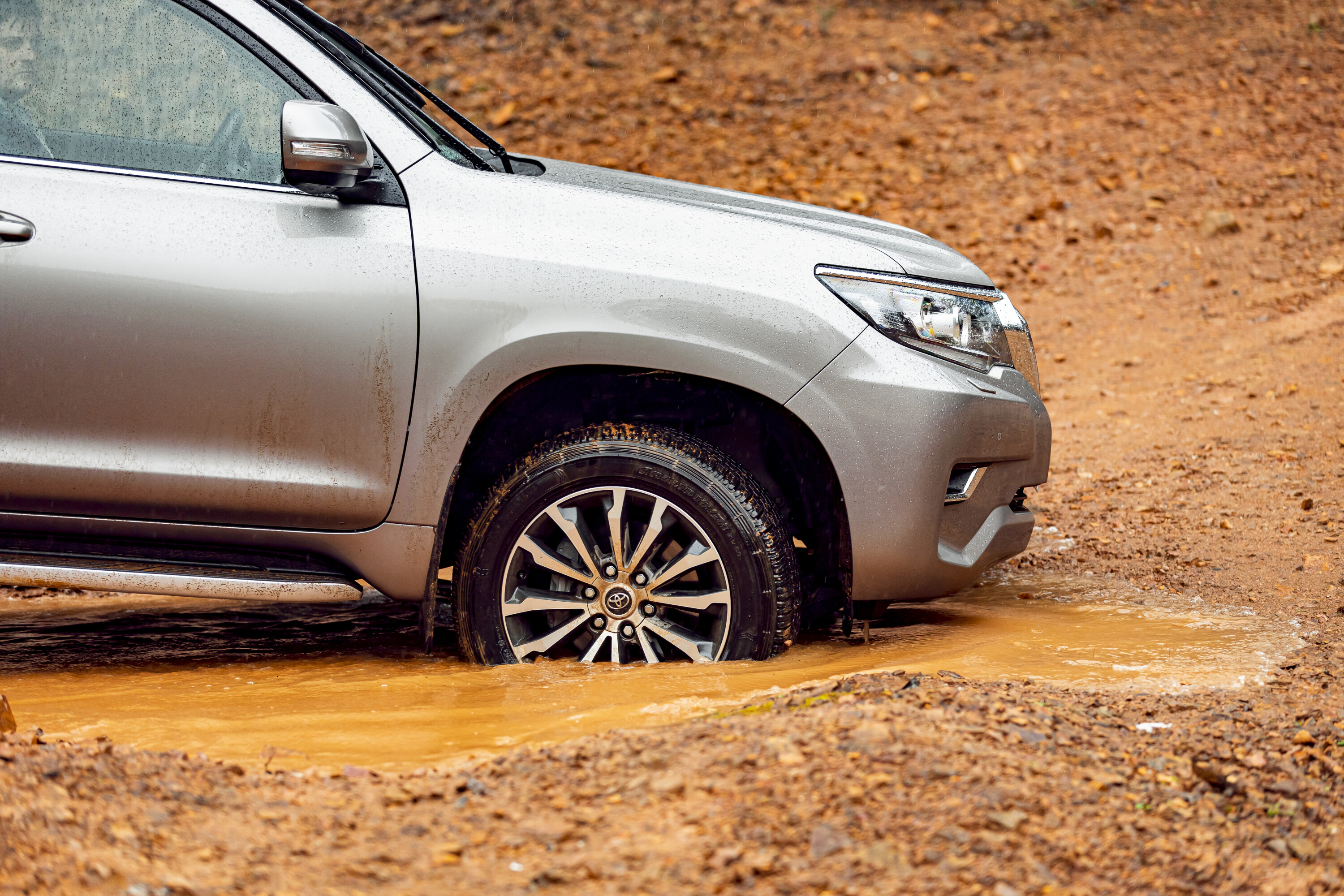
If any of the terms in this section have left you scratching your head, these articles will help bring you up to speed!
- What is a Powertrain or Drivetrain?
- Power vs torque
- Car suspension explained
- Automatic transmissions (‘gearboxes’) explained
- Chassis control systems explained
- Car vs Ute vs SUV: How the vehicle you buy should guide the way you drive
All versions use a 2.8-litre turbo-diesel four-cylinder producing 150kW from 3000-3400rpm and 500Nm from 1600-2800rpm.
Claimed fuel consumption is consistent regardless of variant at 7.9 litres per 100 kilometres combined; 9.6L/100km urban and 7.0L/100km on motorways.
The Prado comes standard with the spare wheel mounted on the rear door and this allows an extra fuel tank underneath giving the vehicle 150 litres of capacity, more than any other standard four-wheel-drive on the market. The optional ‘flat tailgate’ makes the door easier to open but puts the spare tyre back under the car where that extra fuel tank should be, so it’s restricted to 87 litres of diesel onboard.
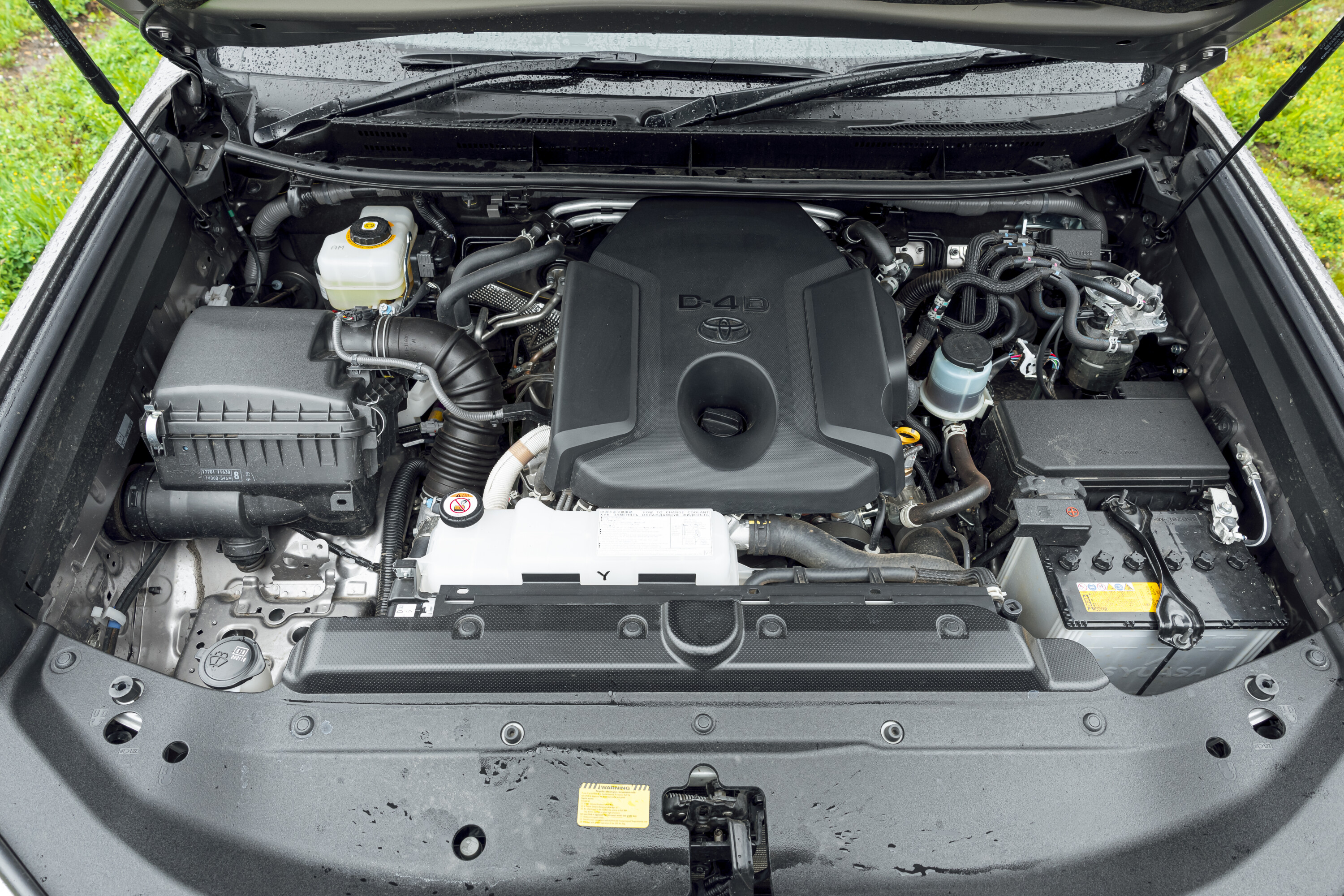
What is the Toyota Prado 150’s towing capacity?
The Toyota Prado can tow up to 3000kg braked or 750kg unbraked.
Its GCM is 5990kg across the range, noting that kerb weights range from 2240kg (5-seat GX) to 2350kg (Kakadu).
It’s worth mentioning that the Prado’s braked towing capacity isn’t as good as some rivals such as the Ford Everest which is capable of 3500kg braked. On the plus side, the Prado’s electronic stability control (ESC) integrates trailer sway control.
How long is the warranty and what are the Prado 150’s servicing costs?
Before it was removed from showrooms, the Prado came with a five-year / unlimited-kilometre warranty and cost $290 to service every six months or 10,000km – whichever came first.
The first six services were capped at this price for up to 36 months or 60,000km.
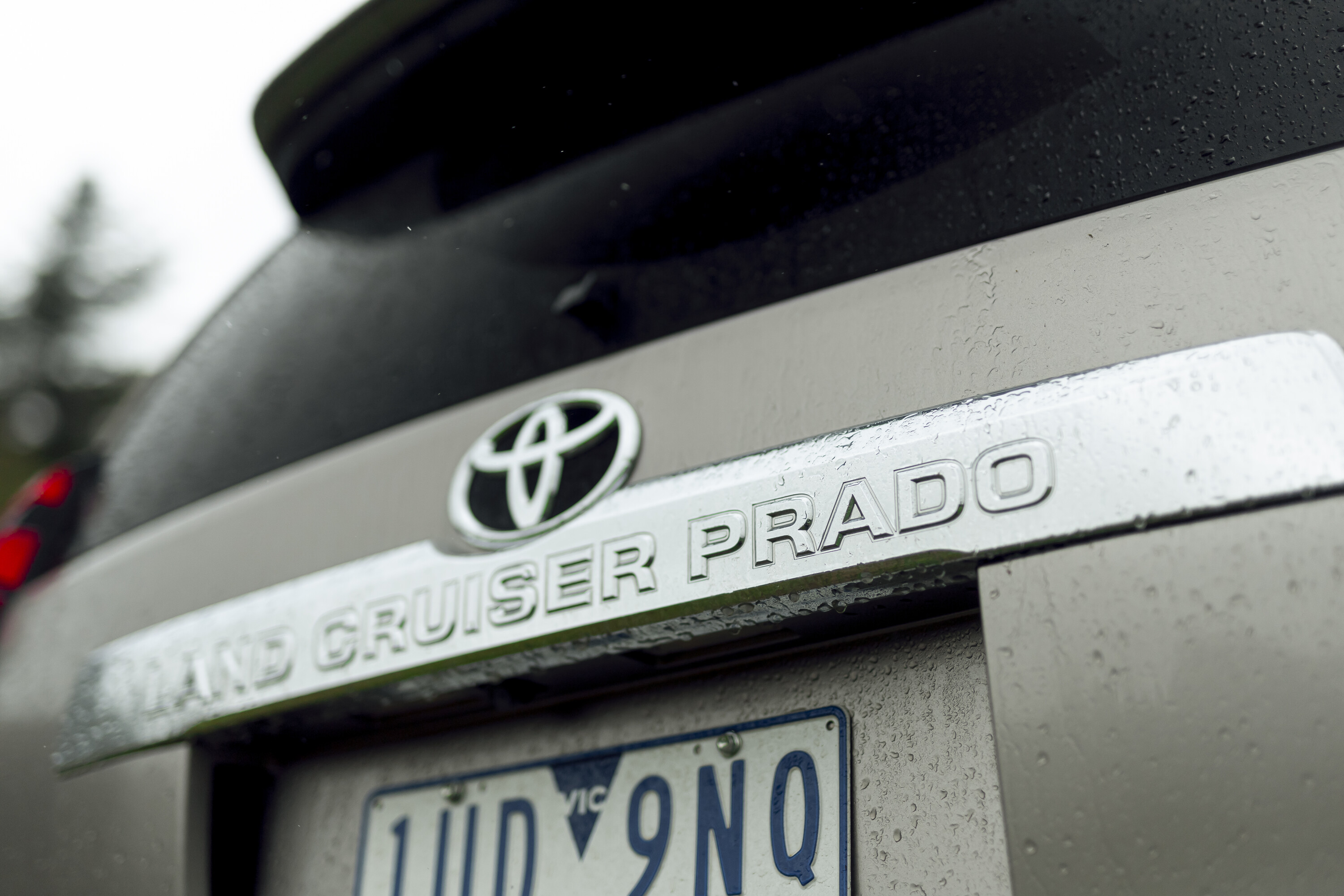
Which version of the Toyota Prado 150 do we recommend?
The GXL spec has everything most people want, and even if you don’t need the third-row seats they will help with resale value.
And you can get a leather-accented interior without having to upgrade to the VX, which has some good extras but with a big price hike. The GXL is the most popular variant by a good margin, and for good reason.
